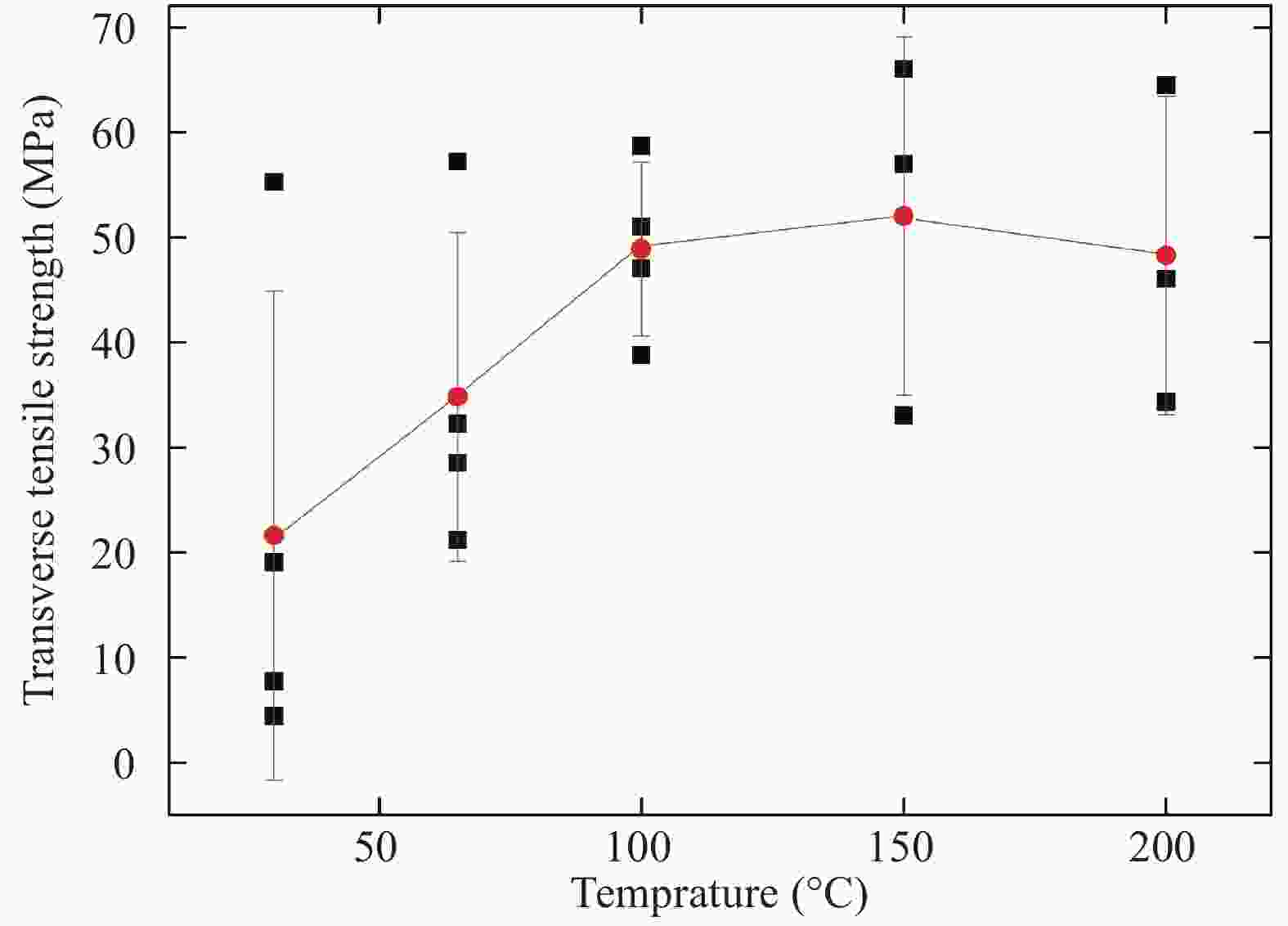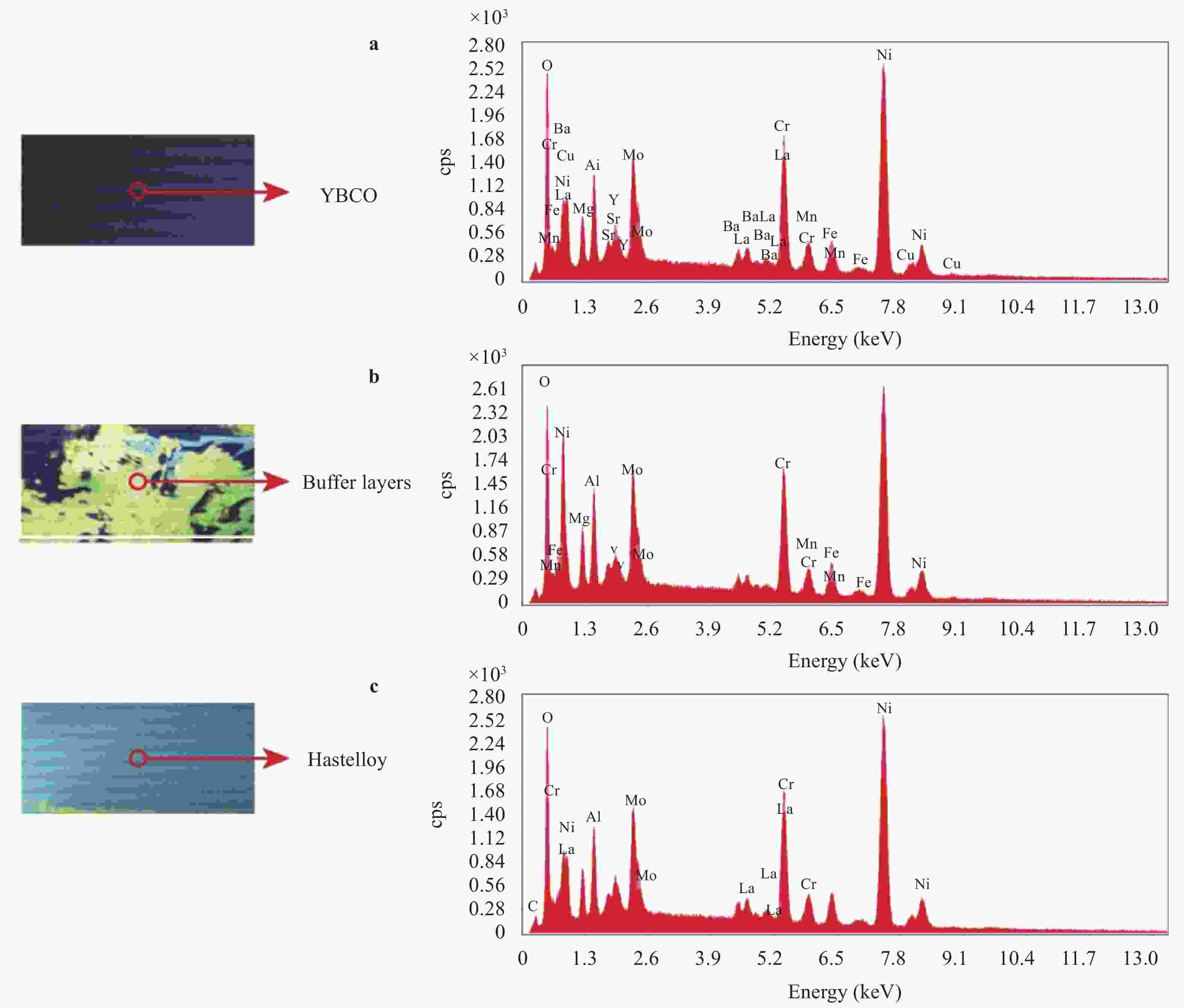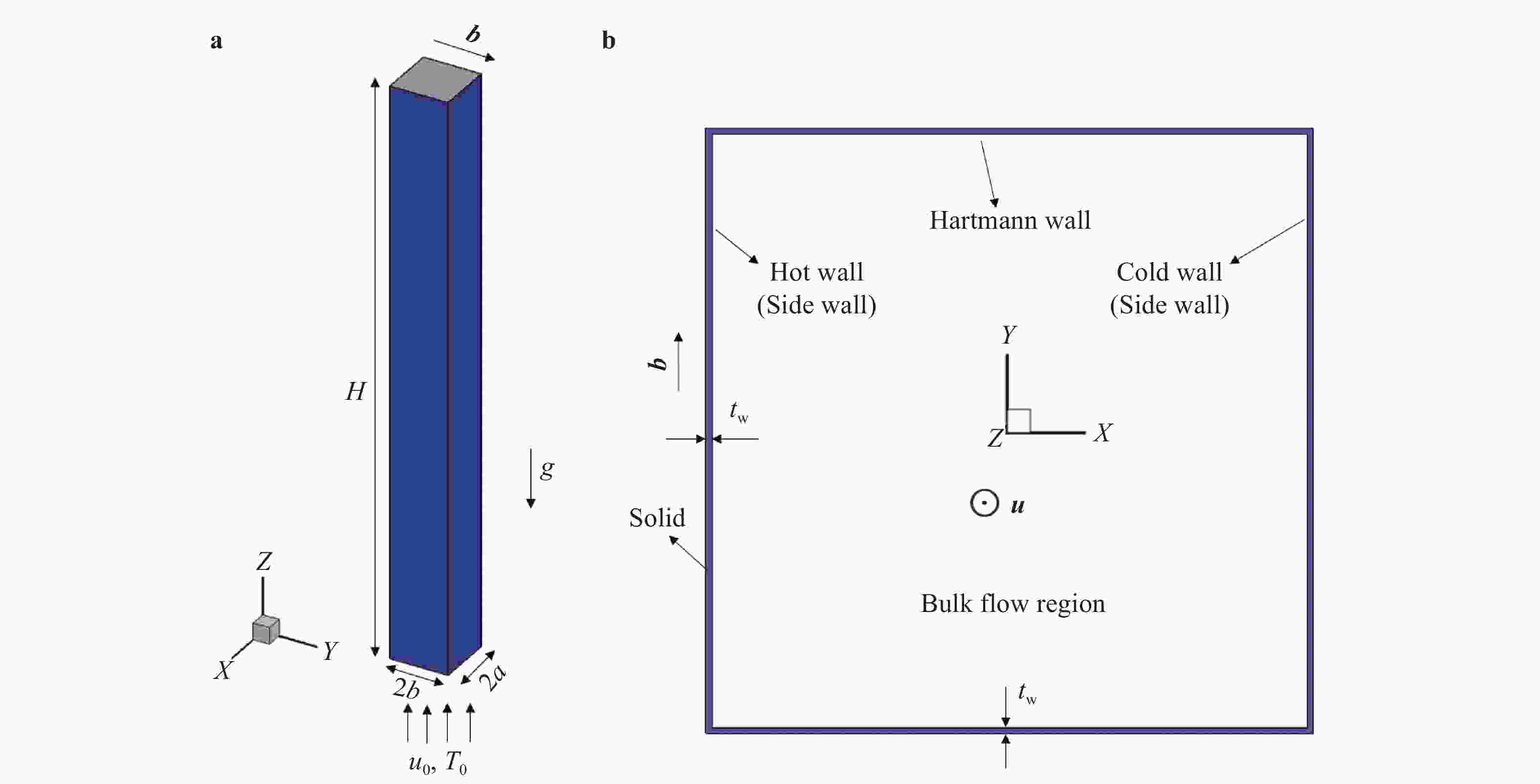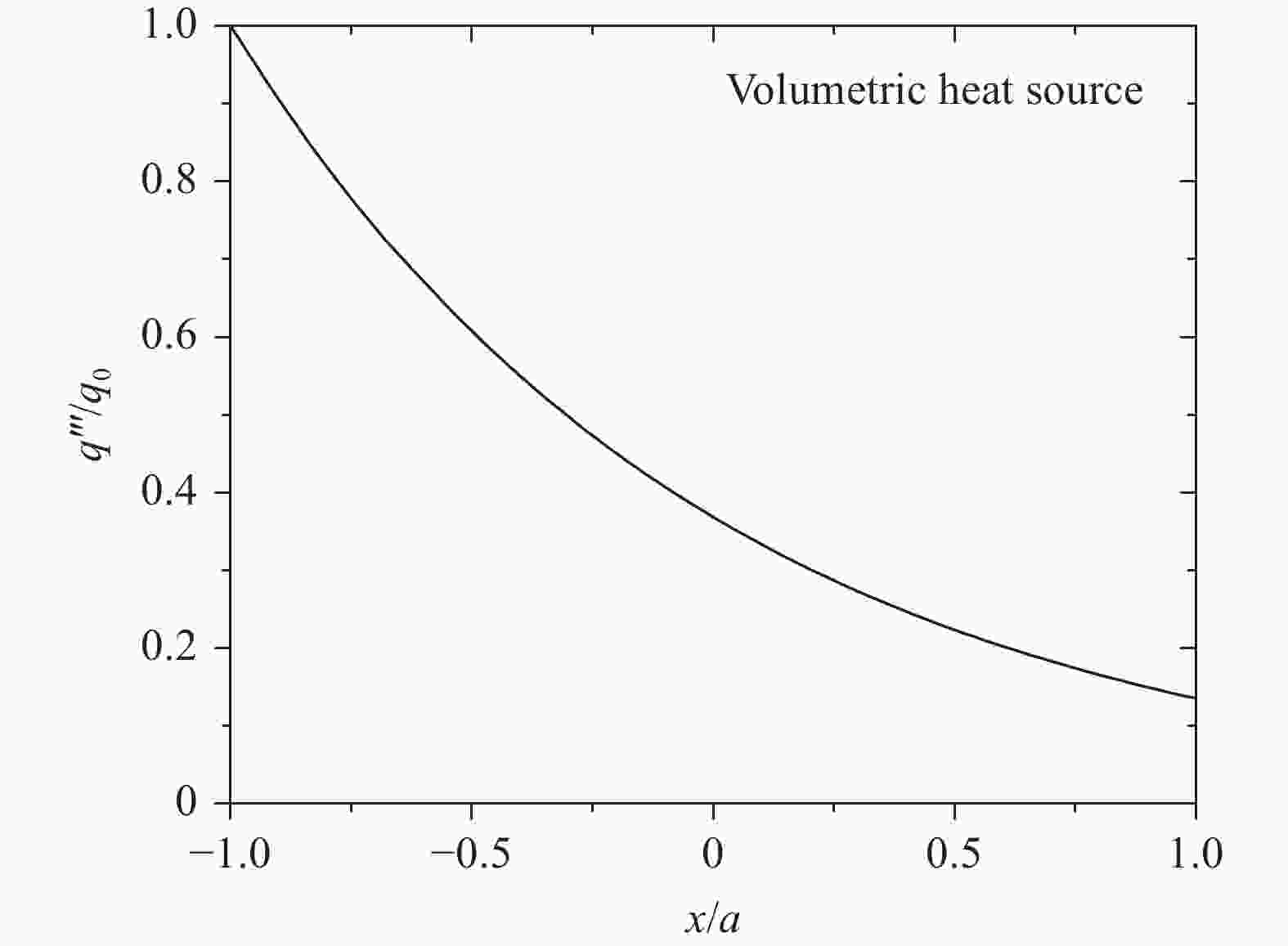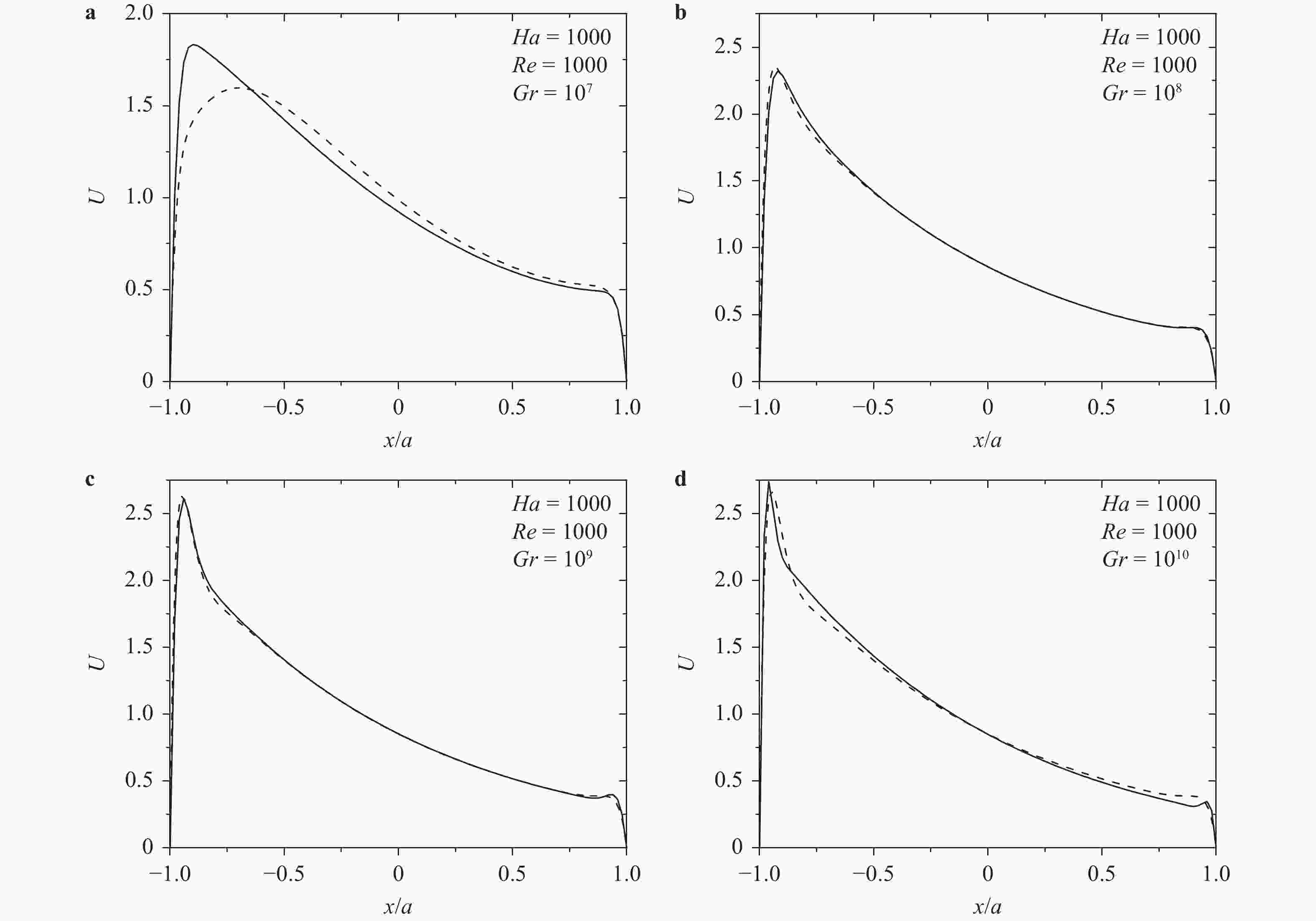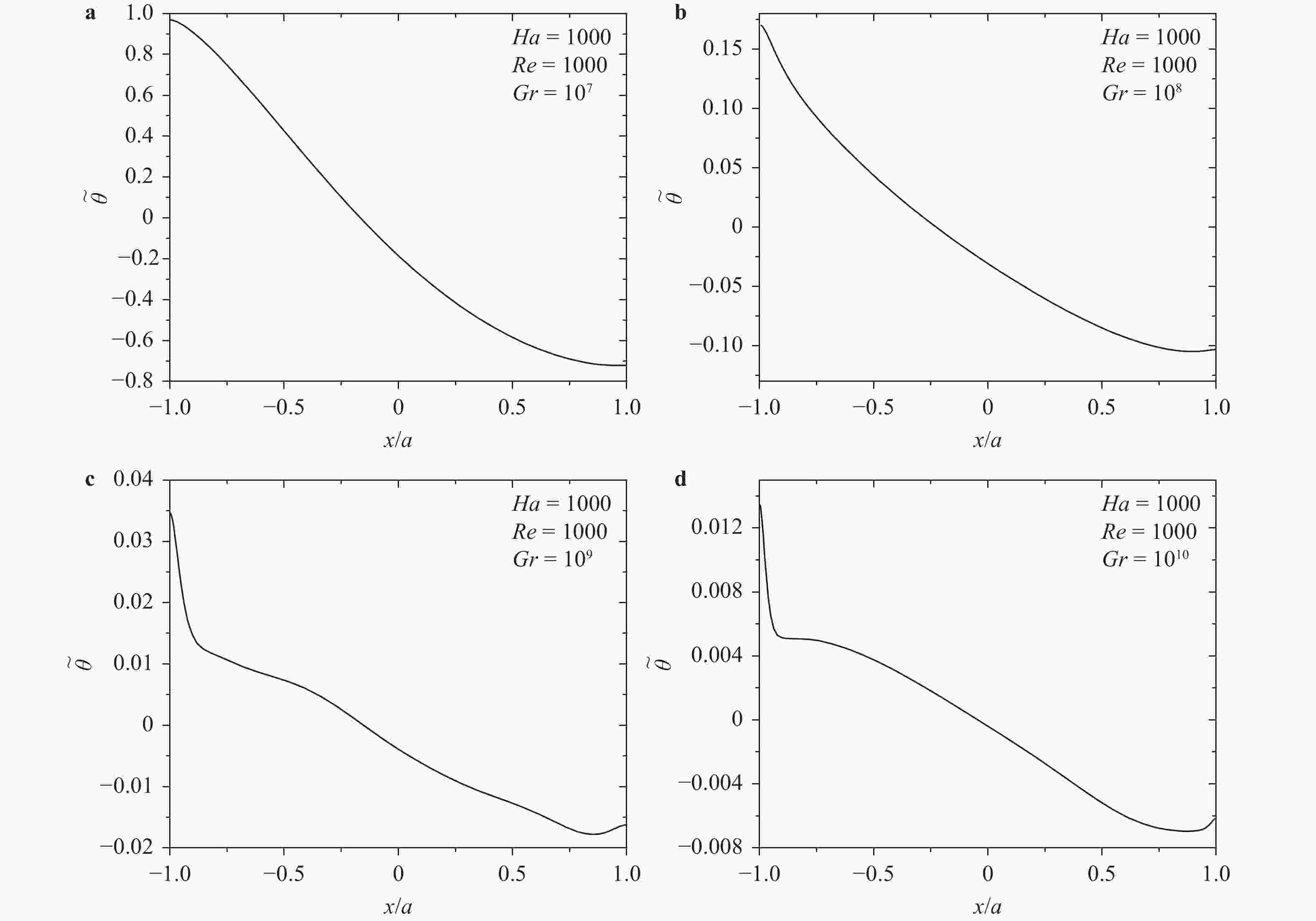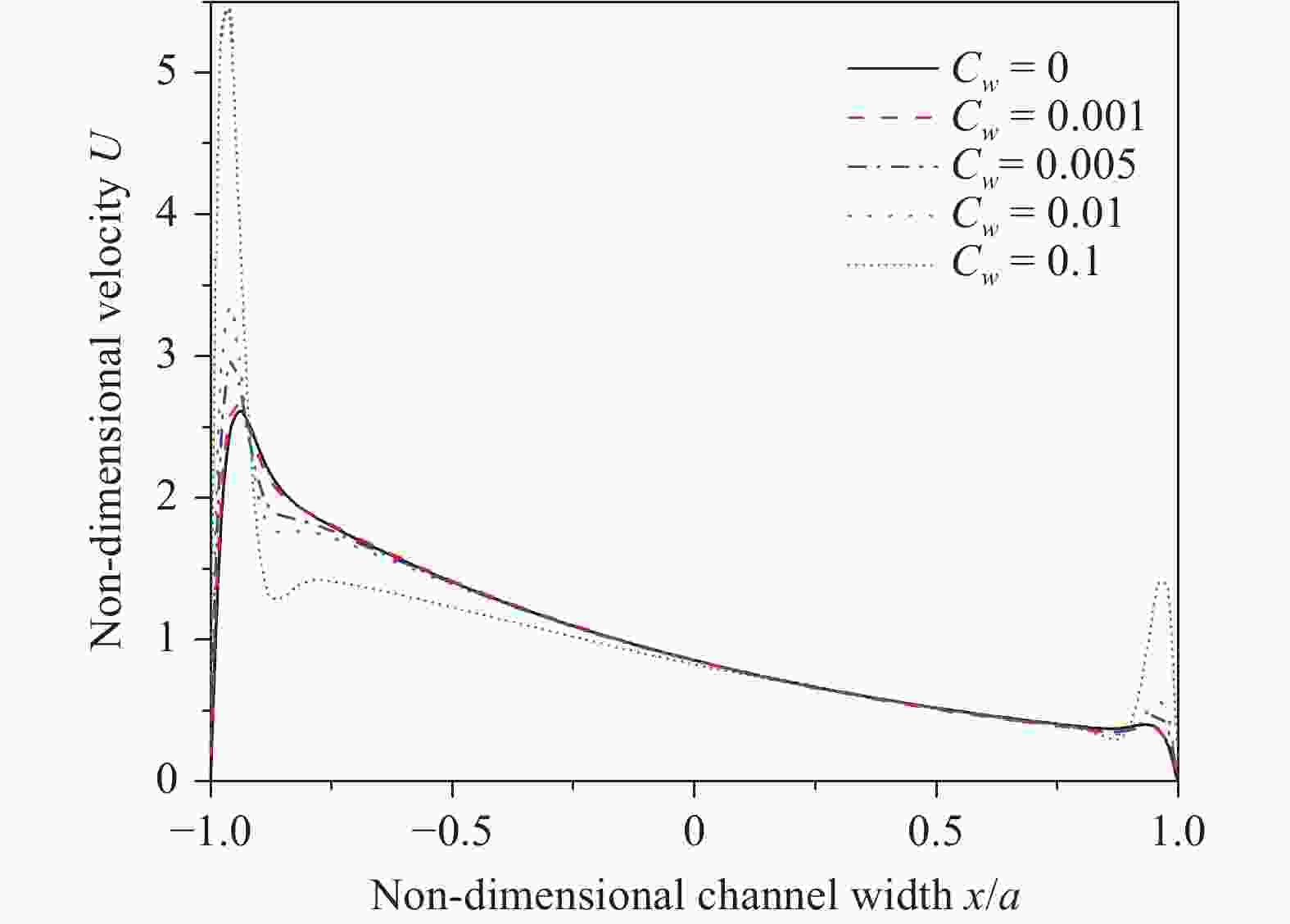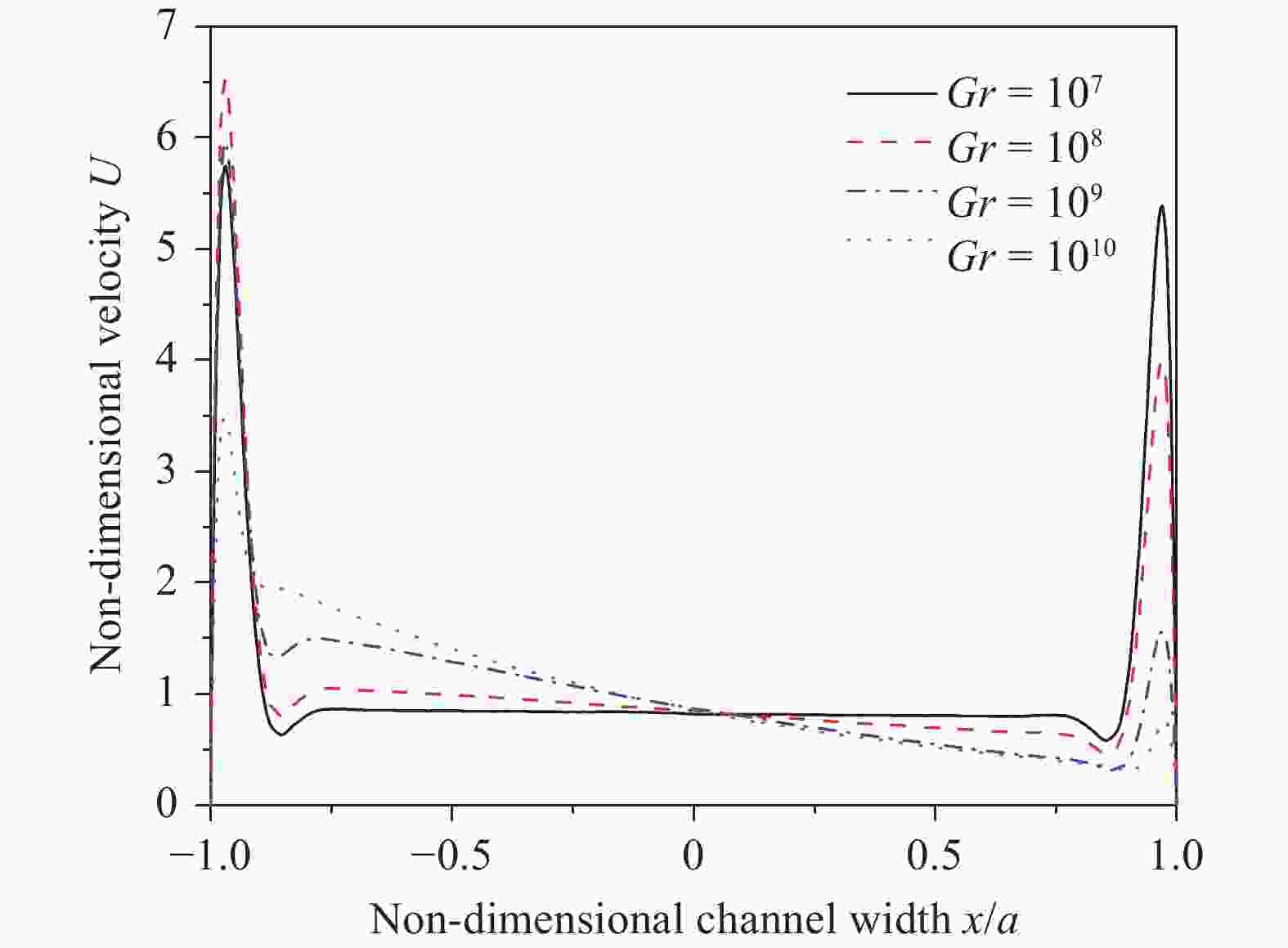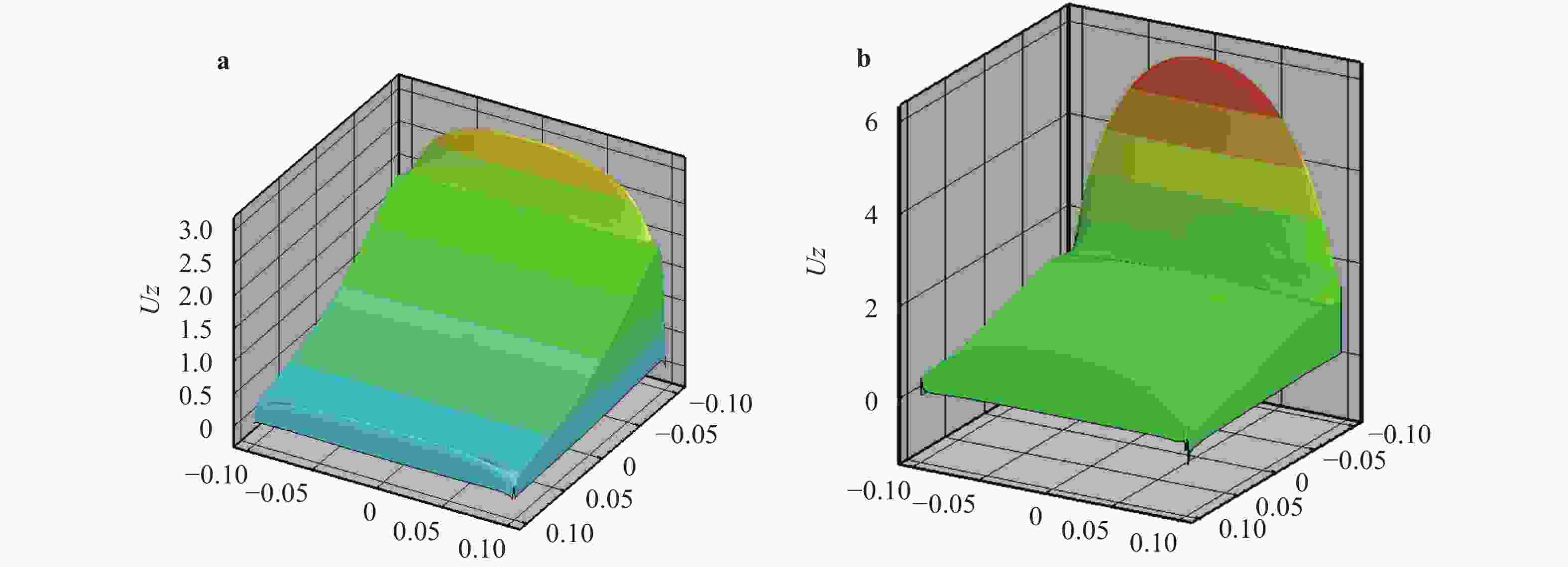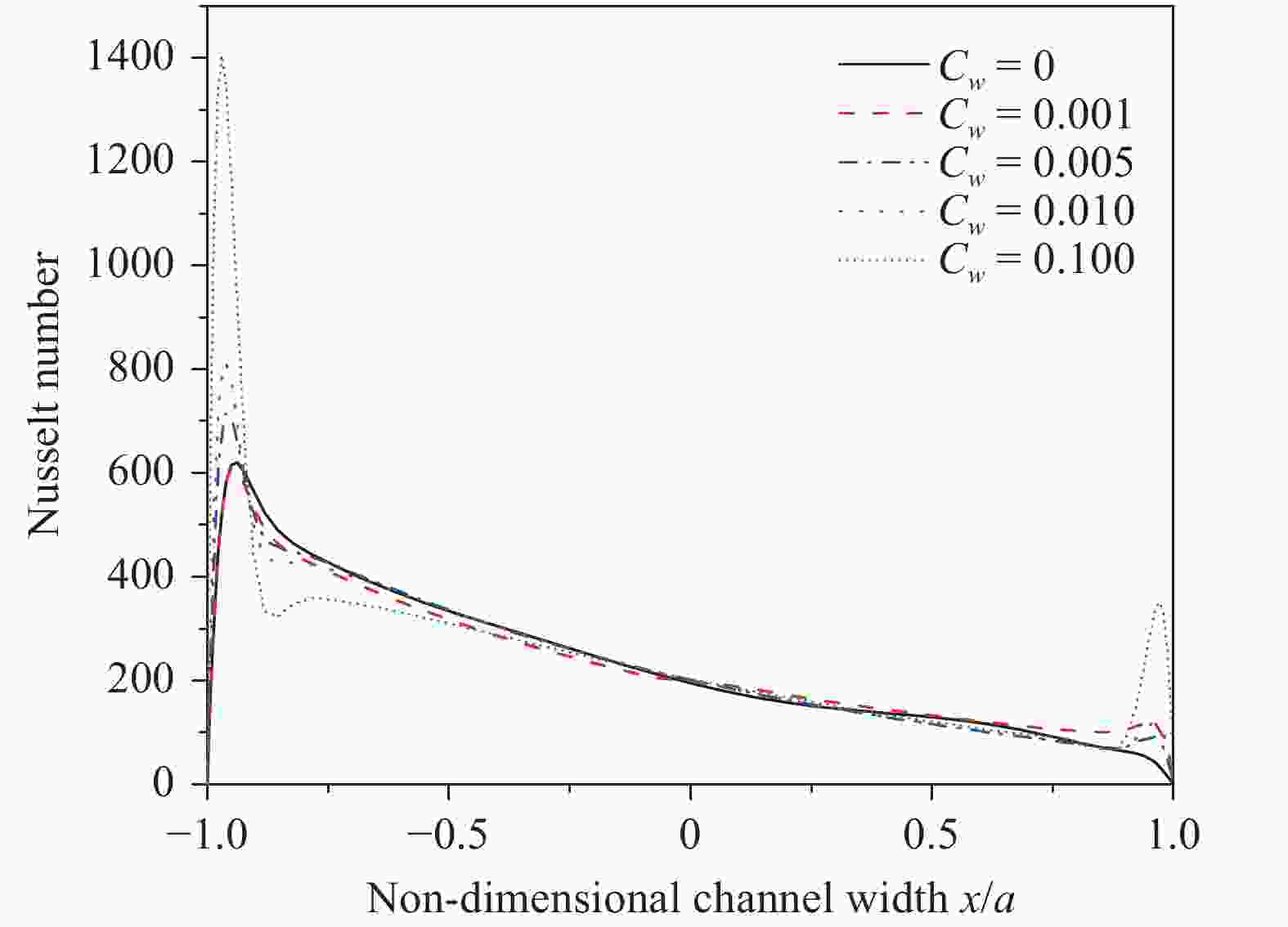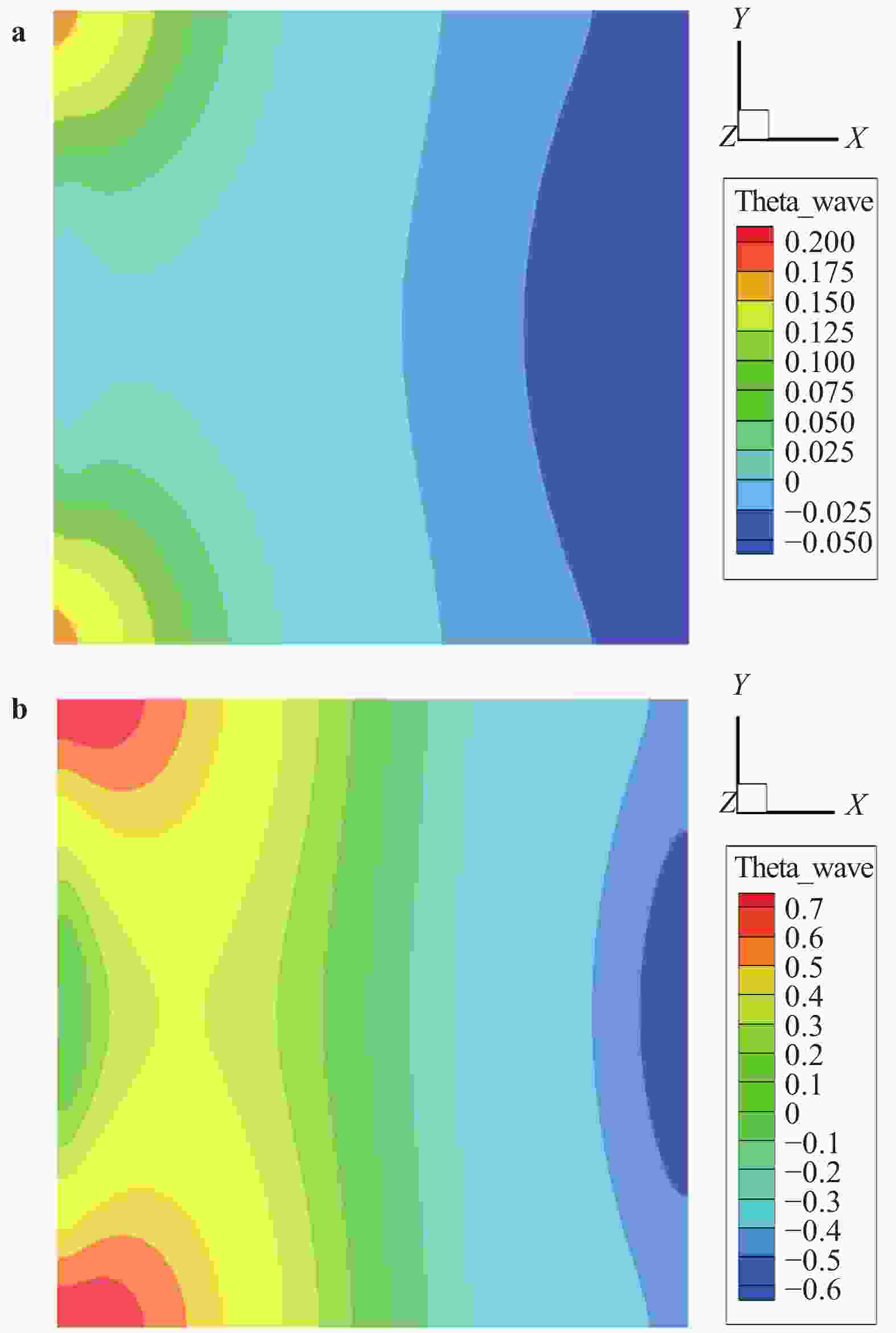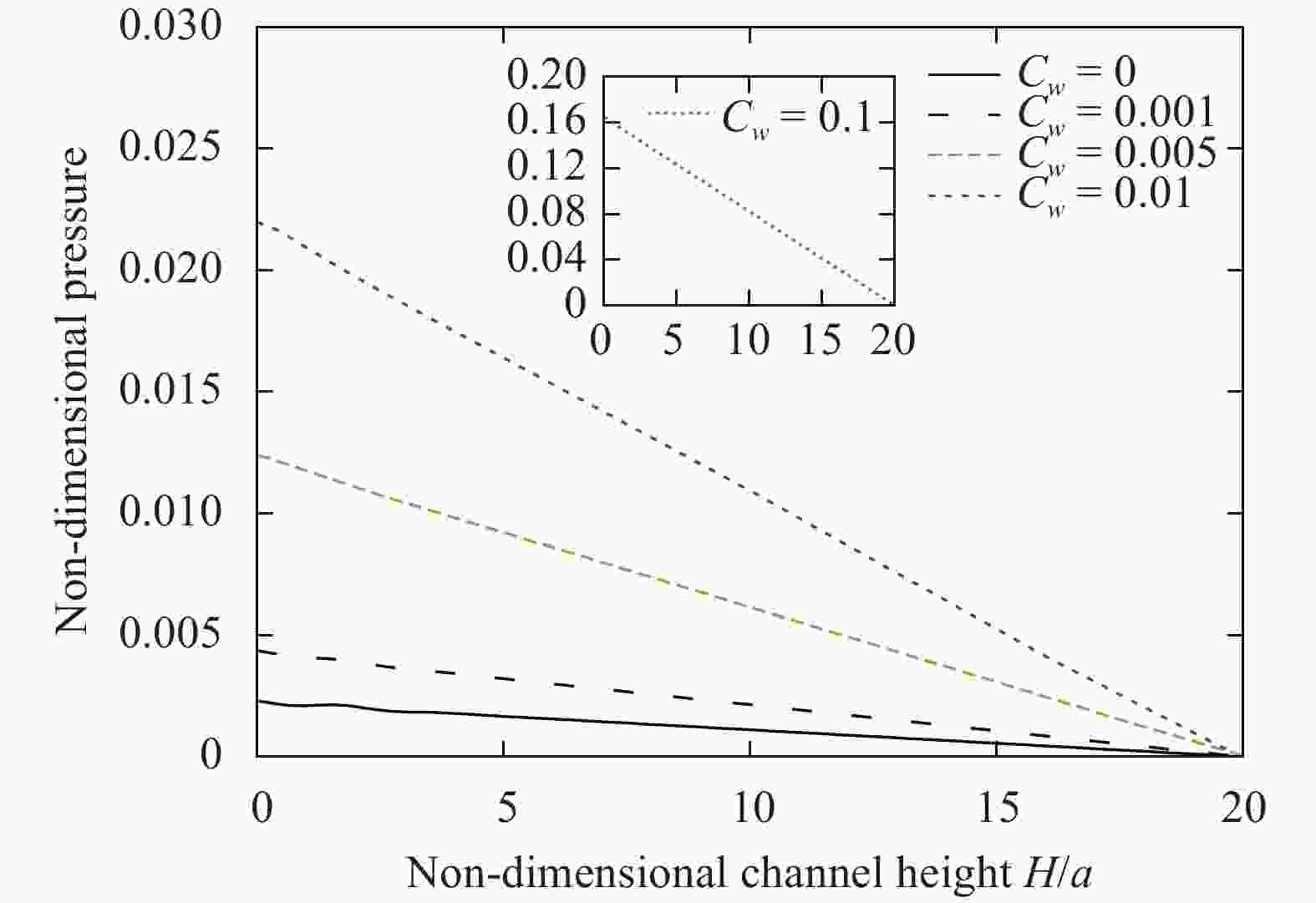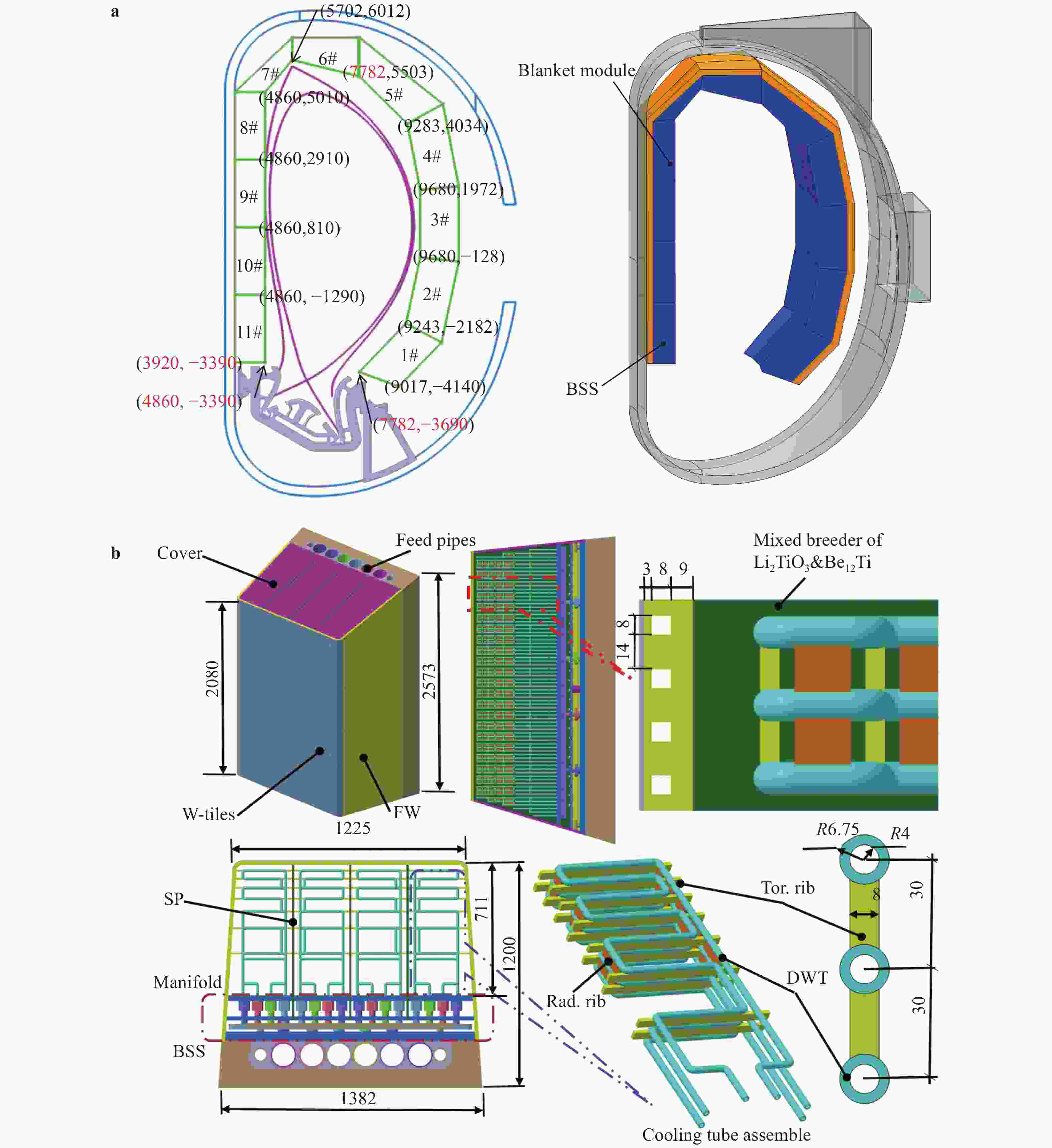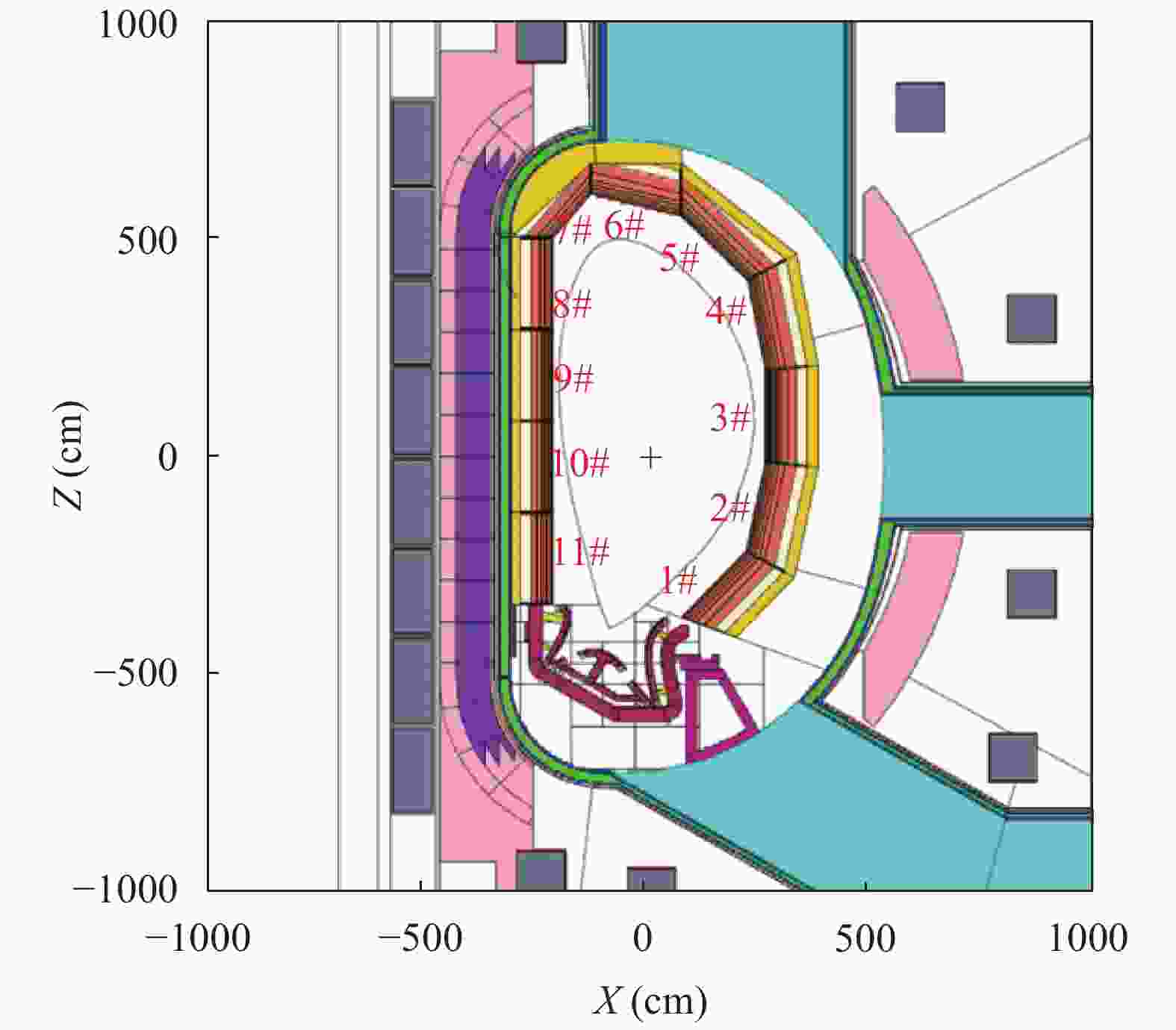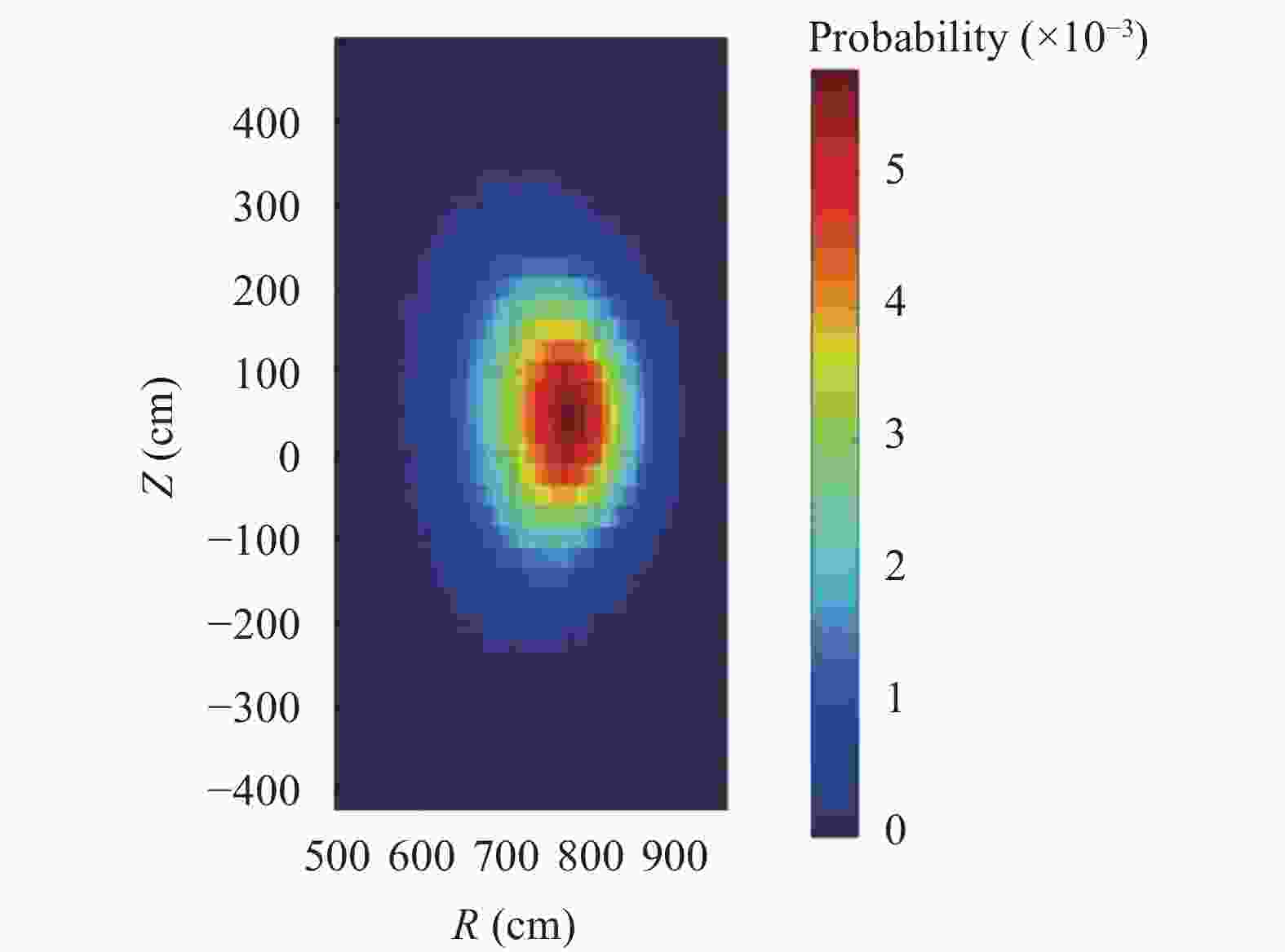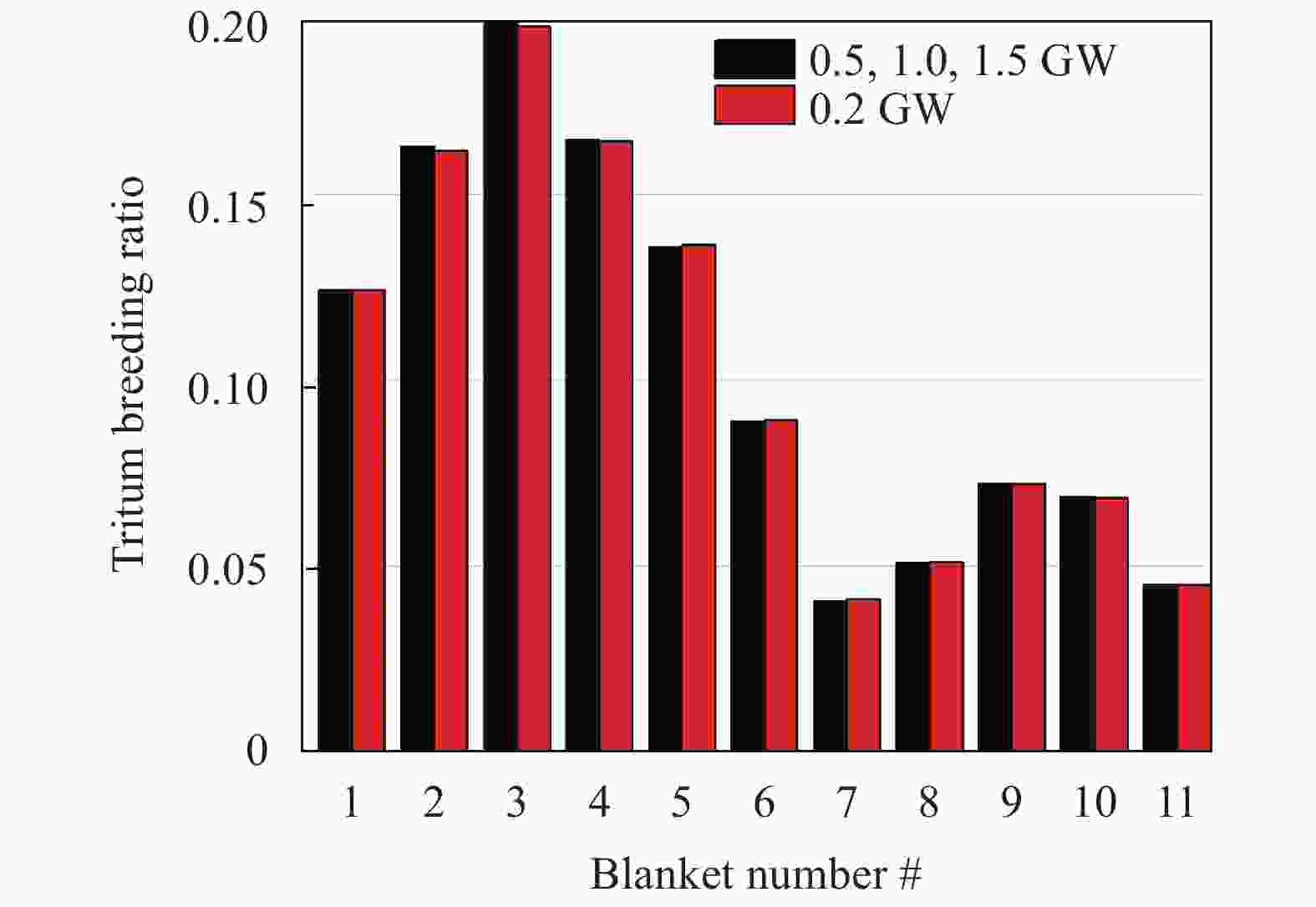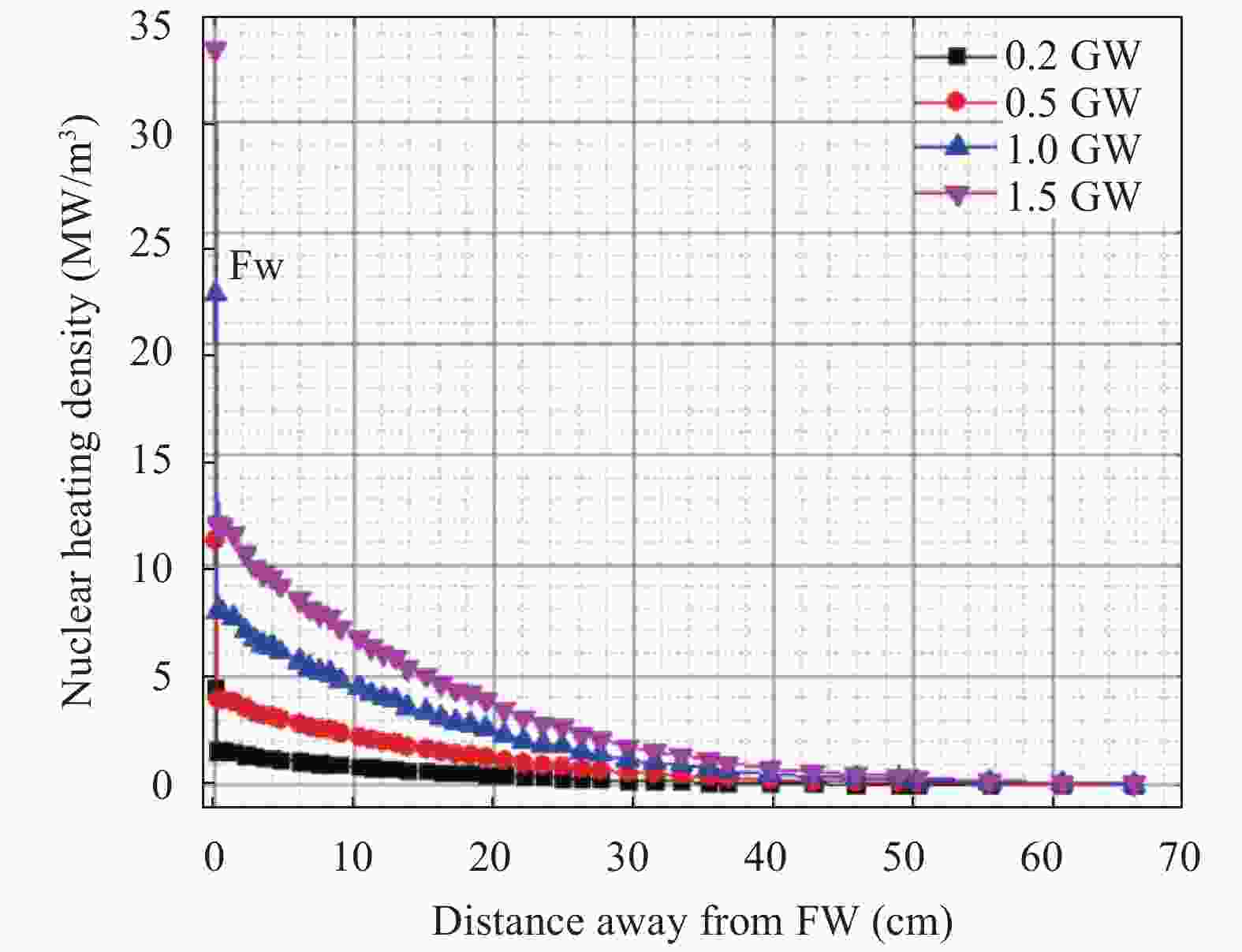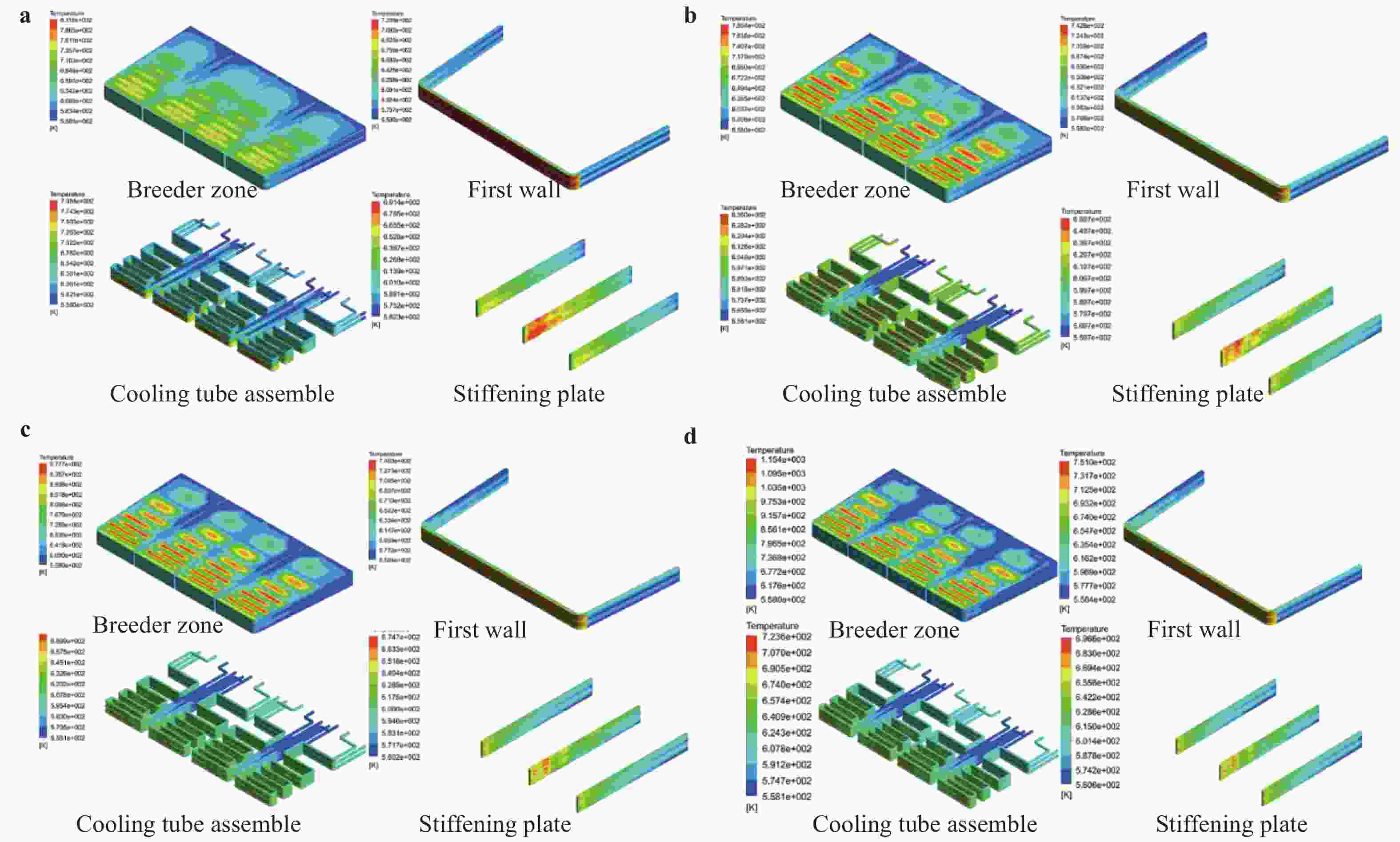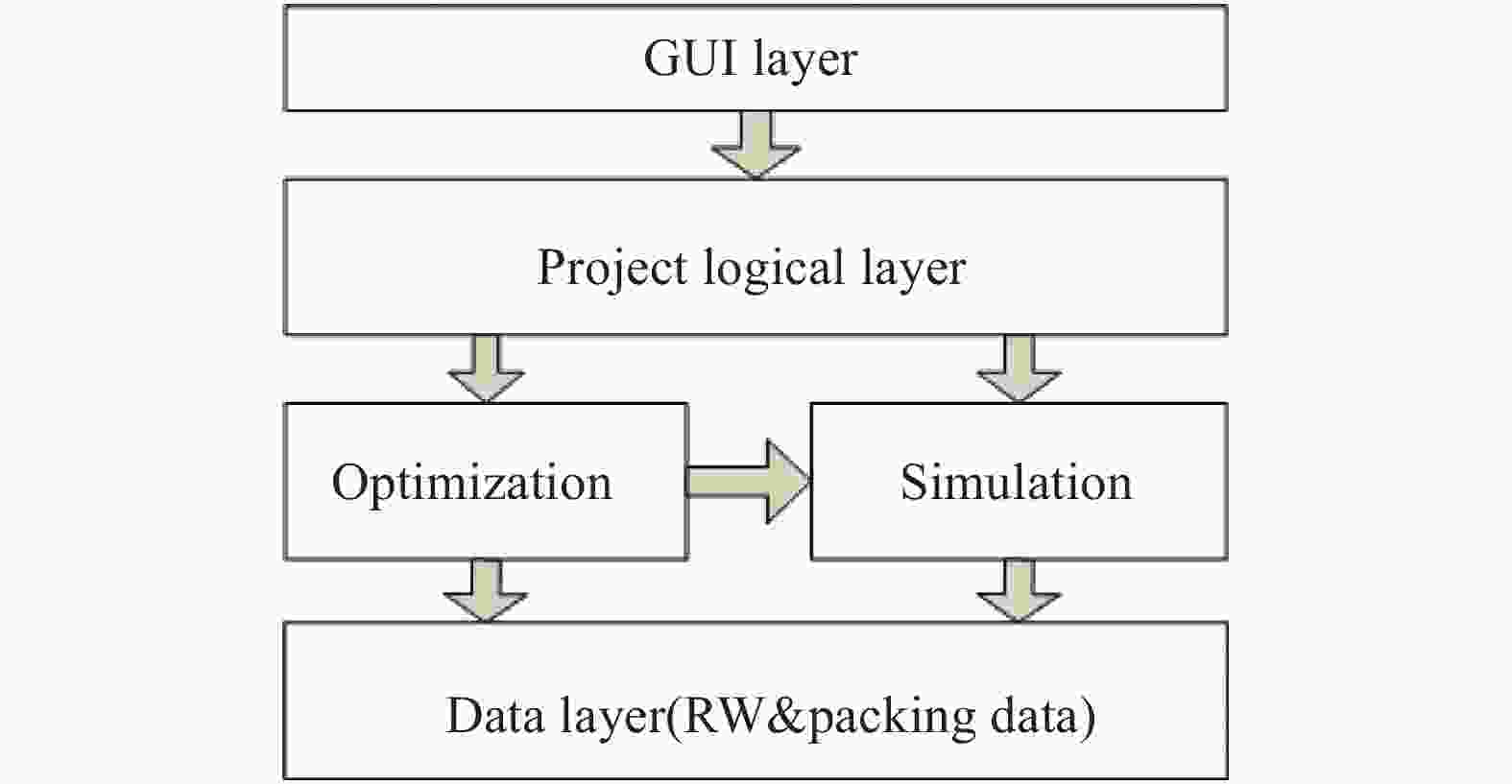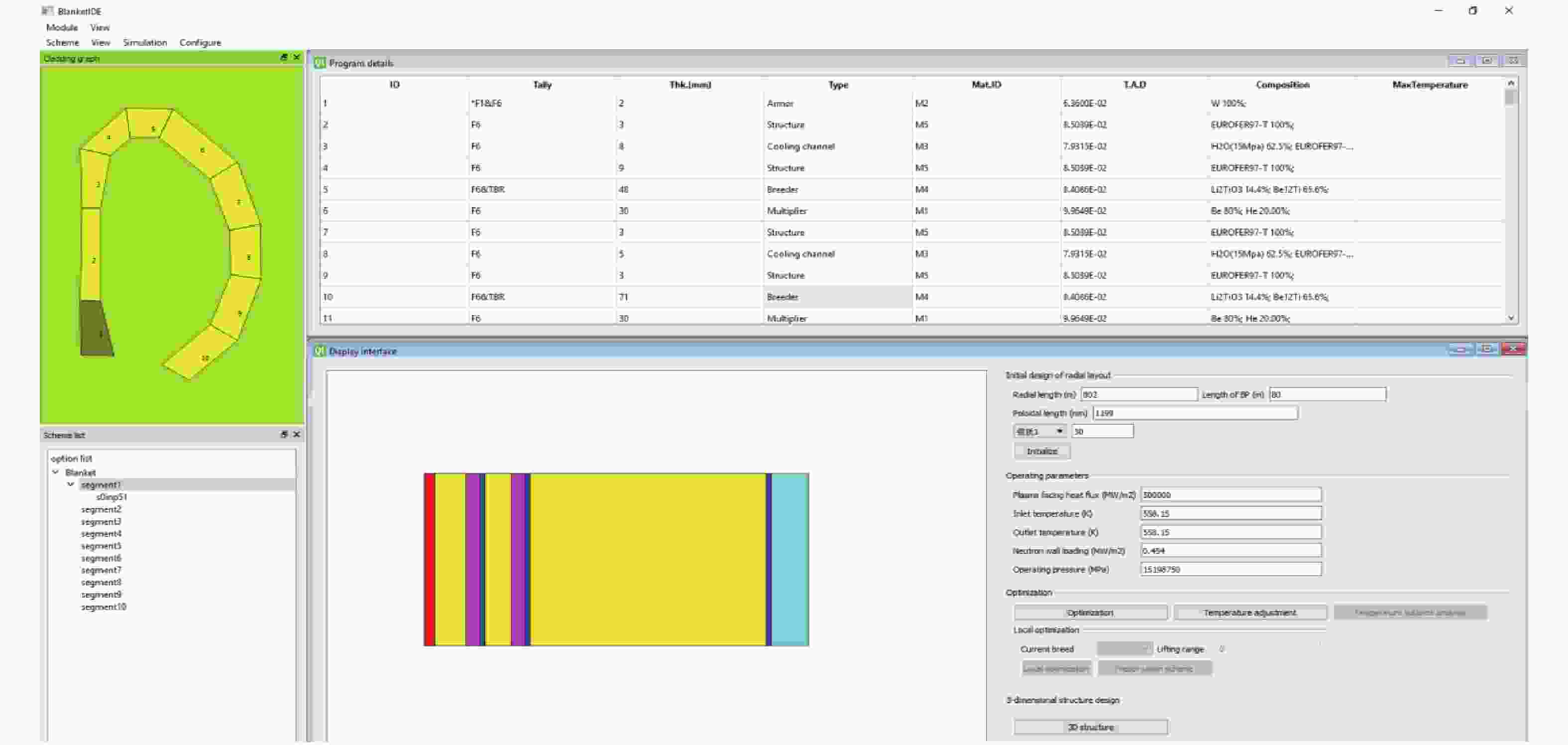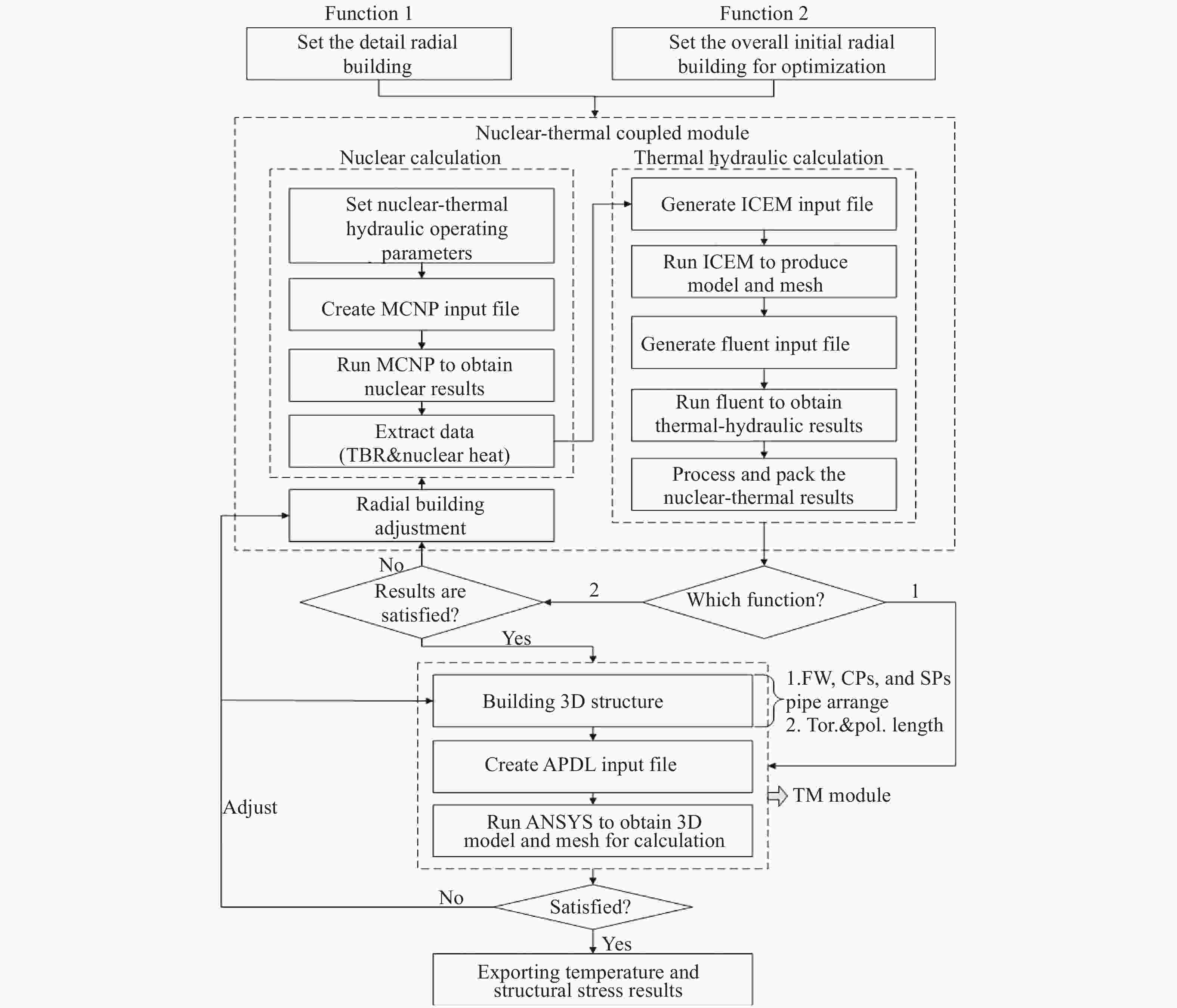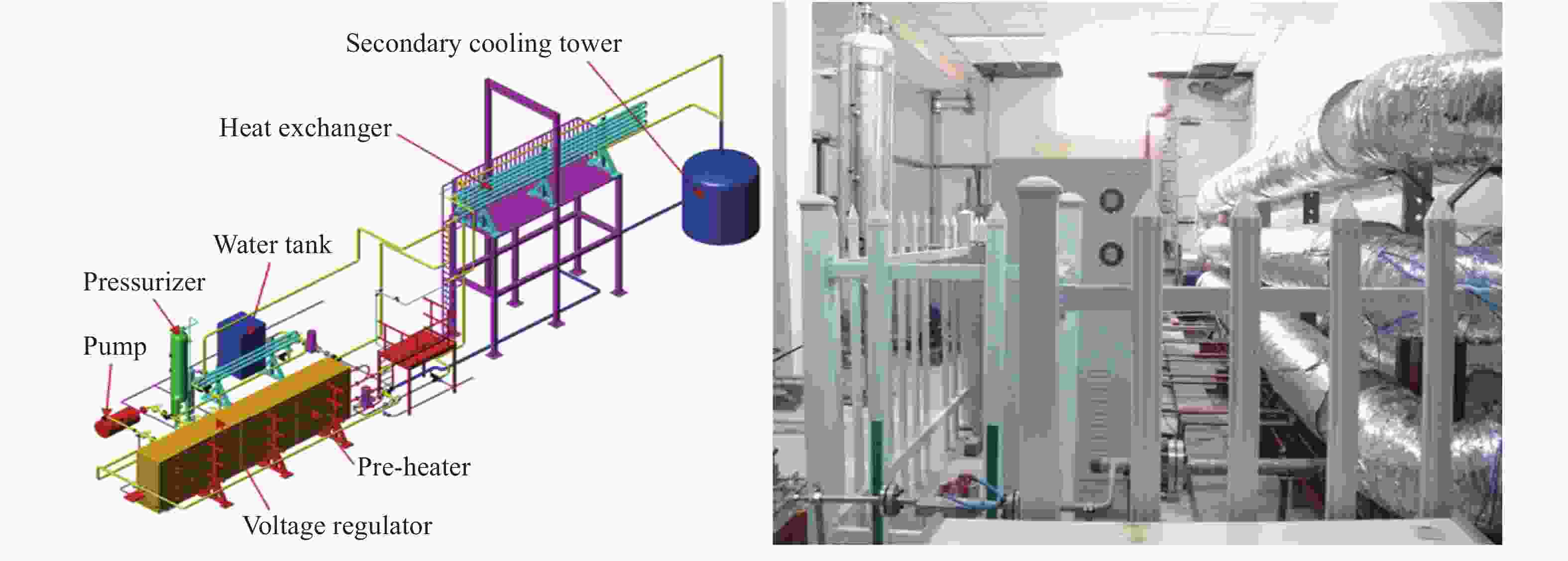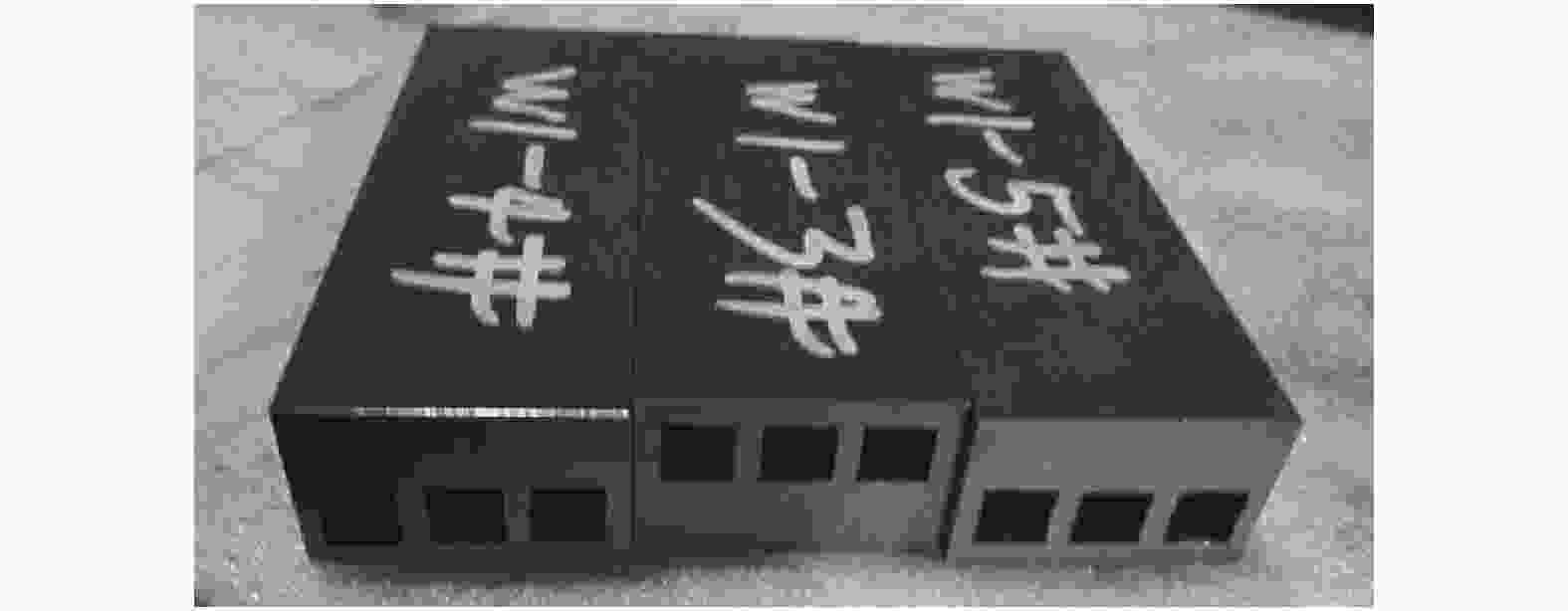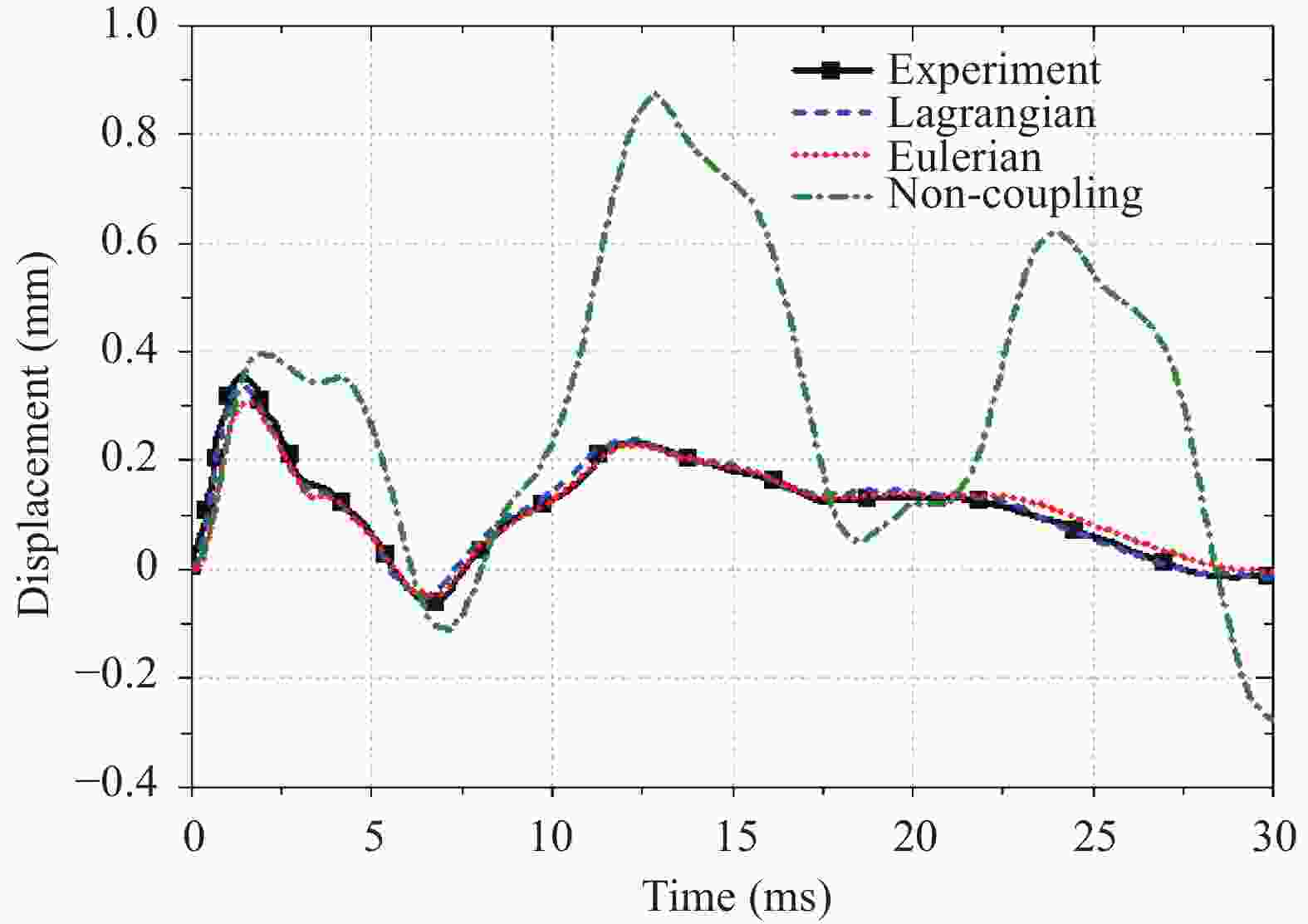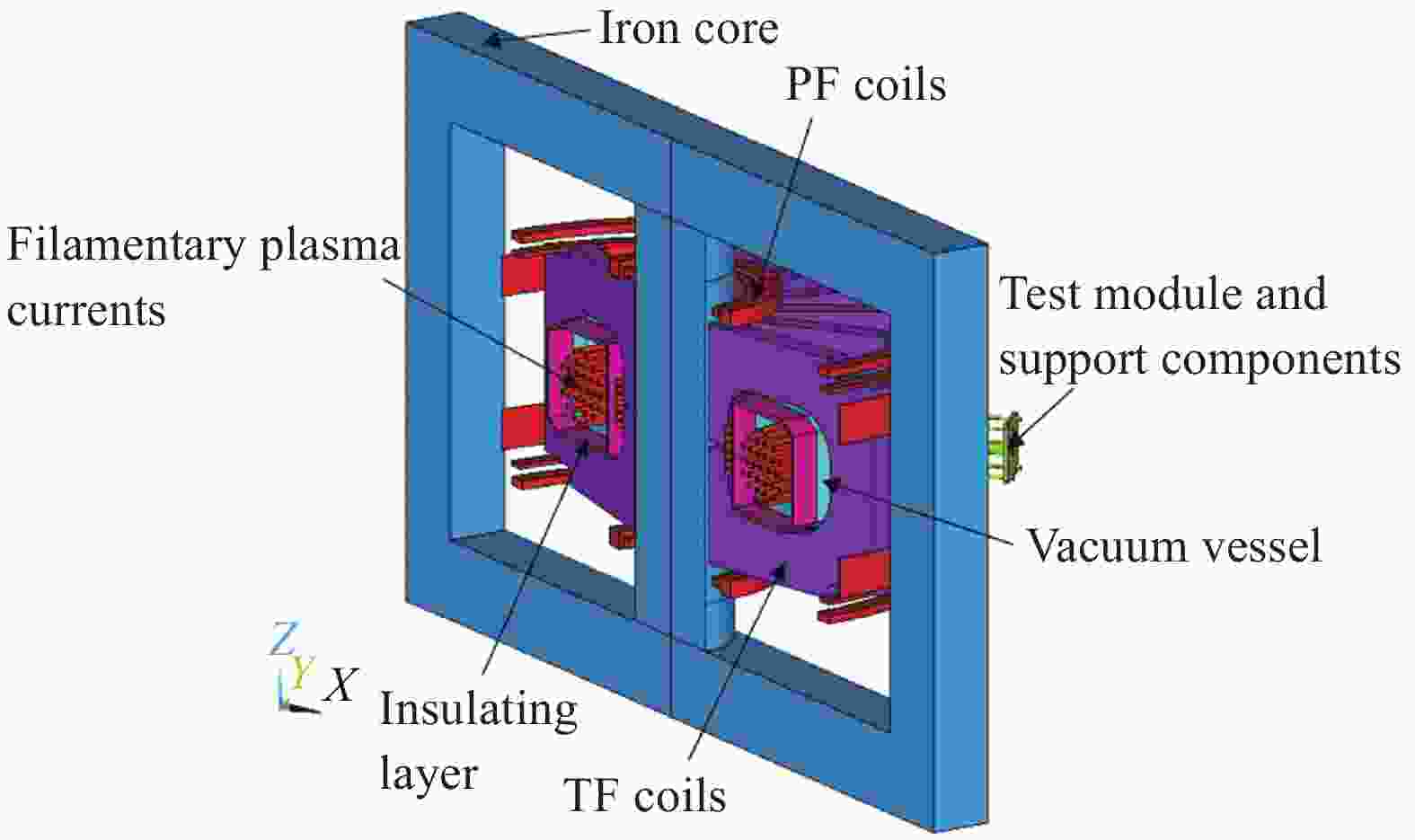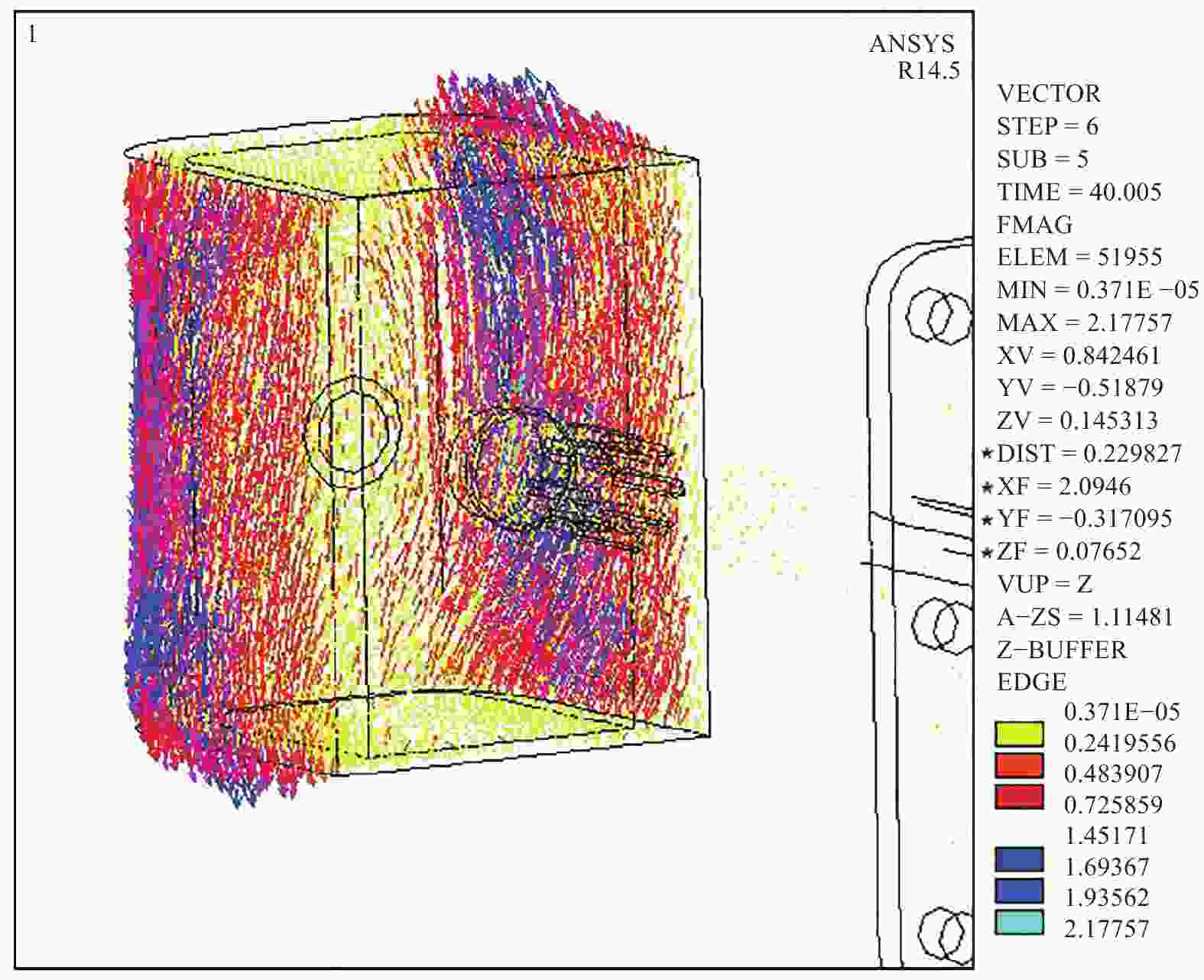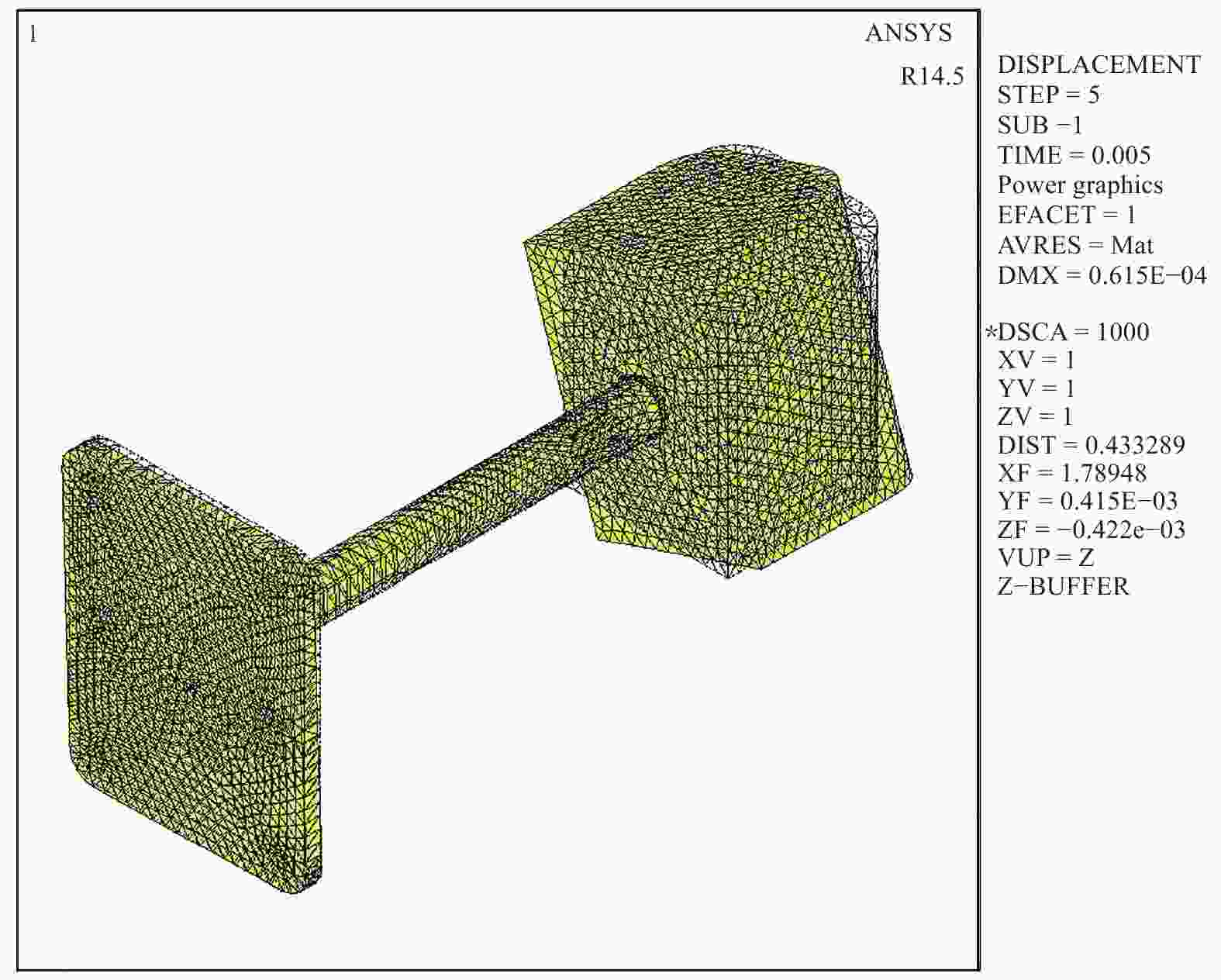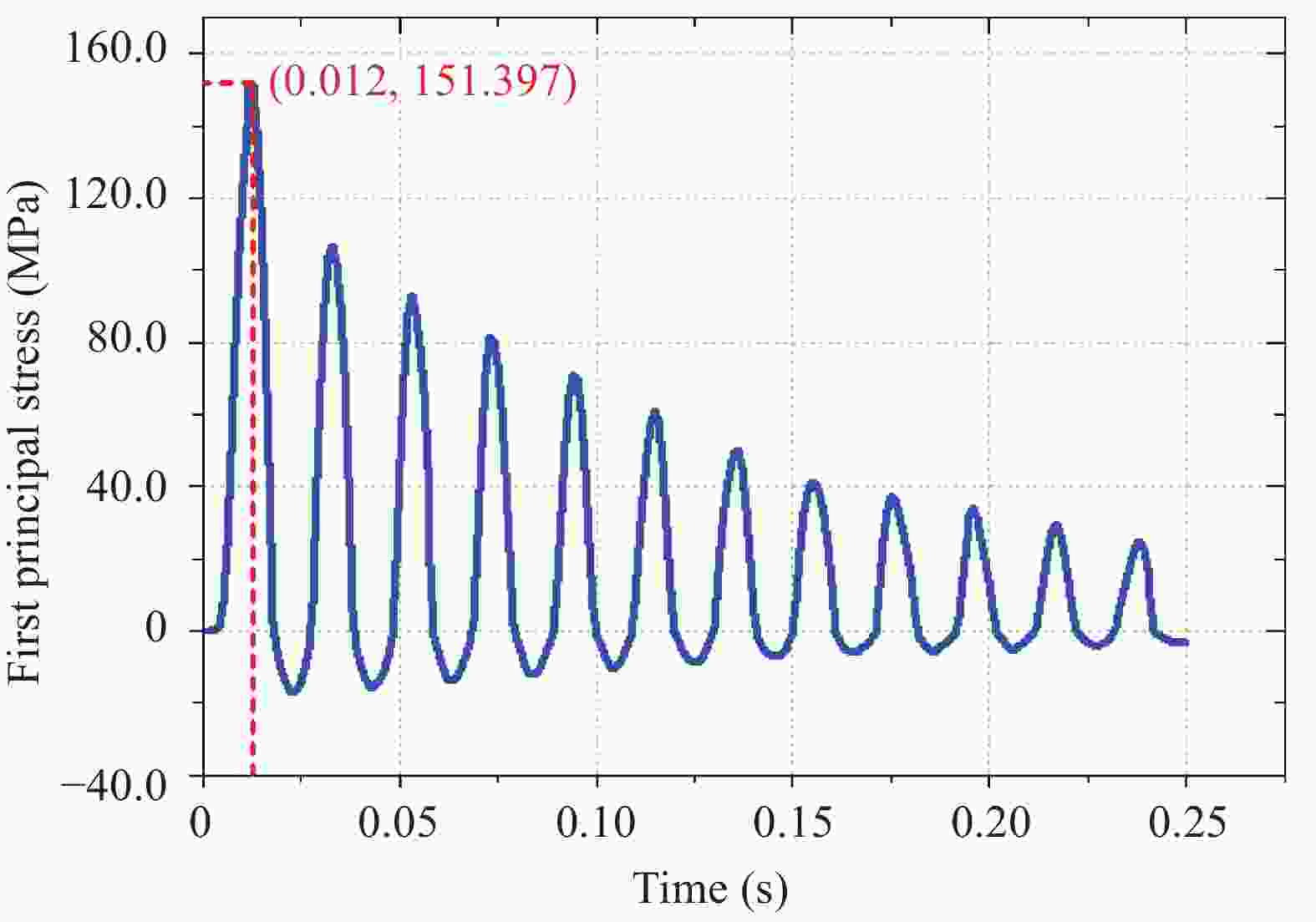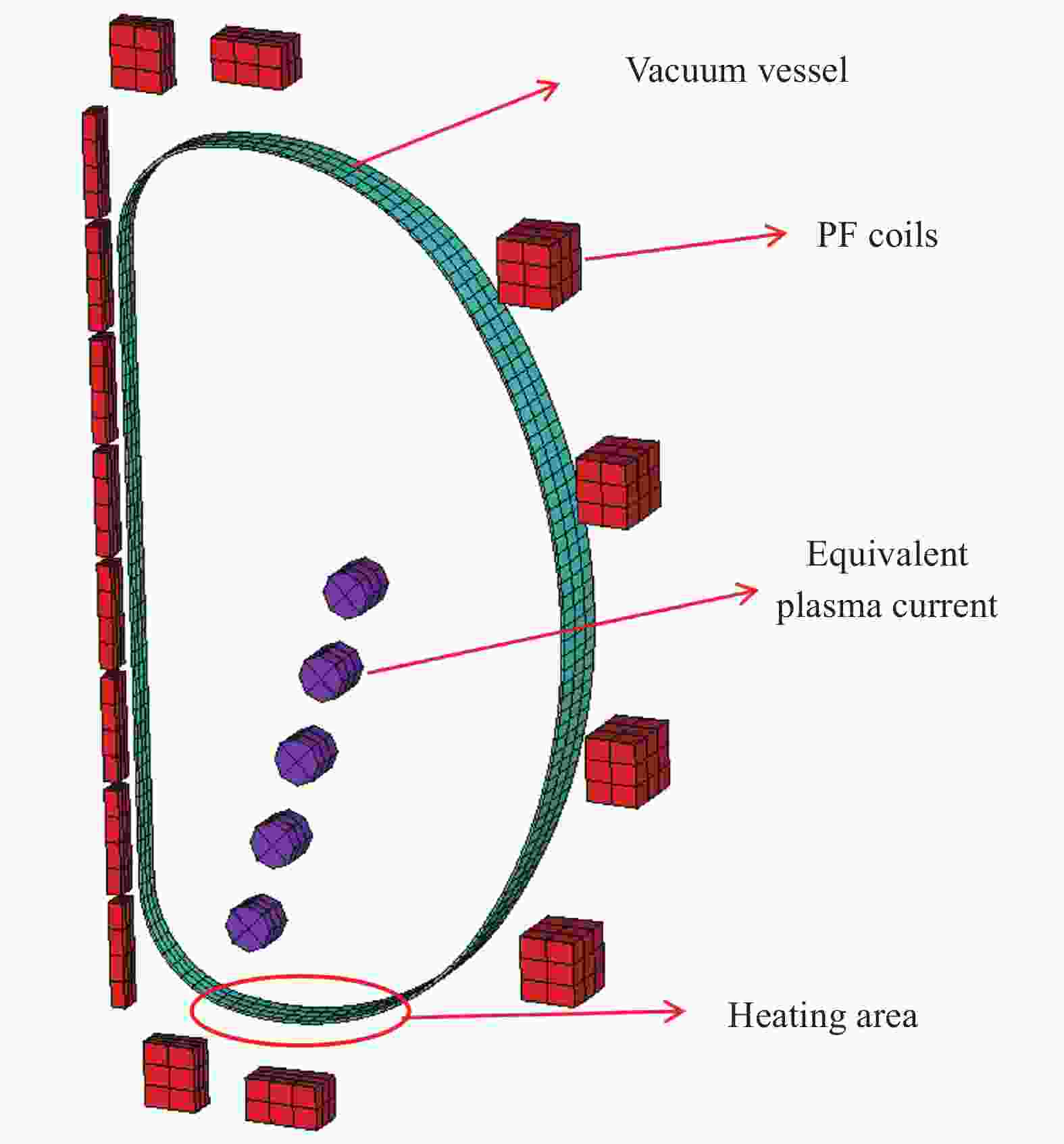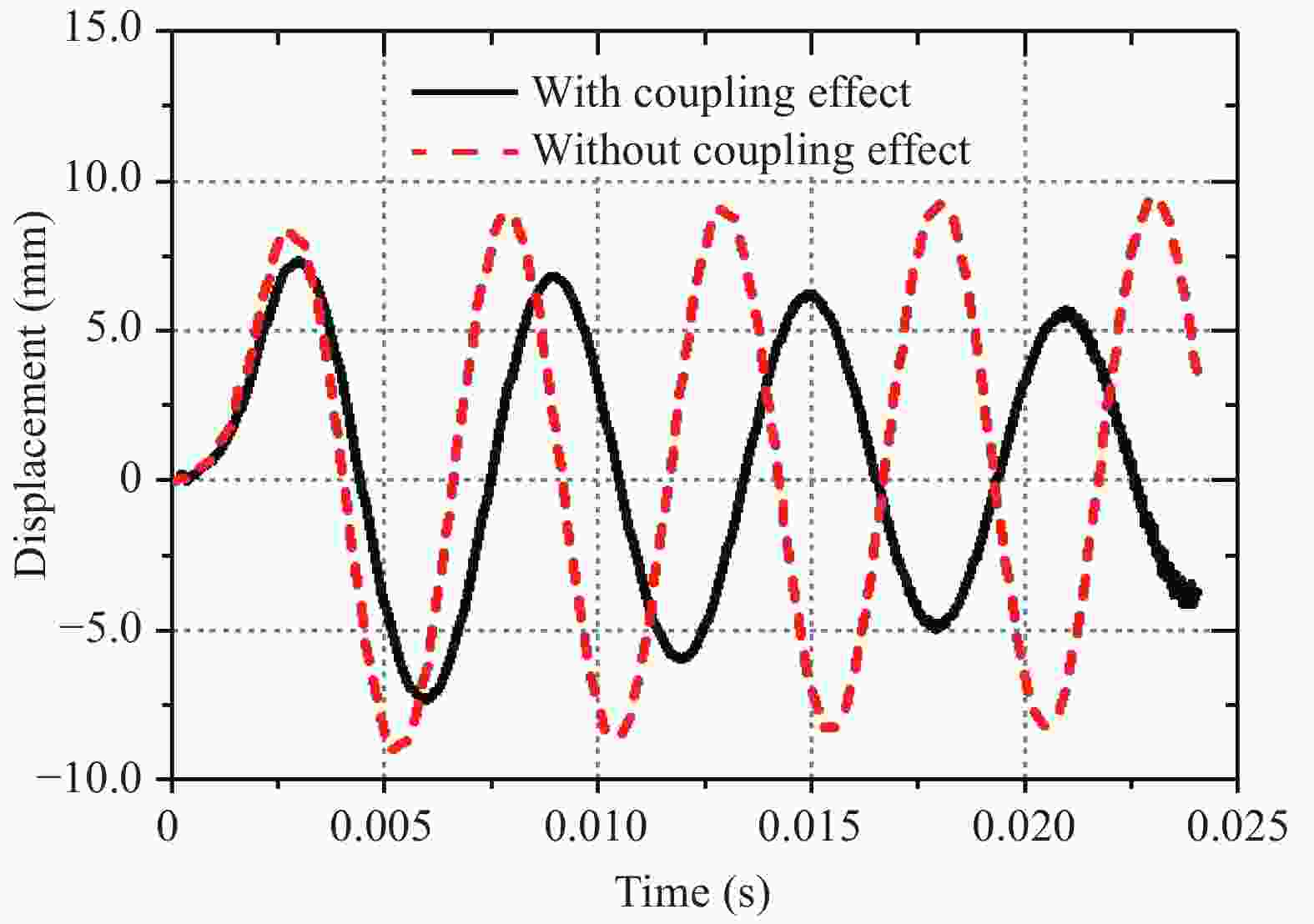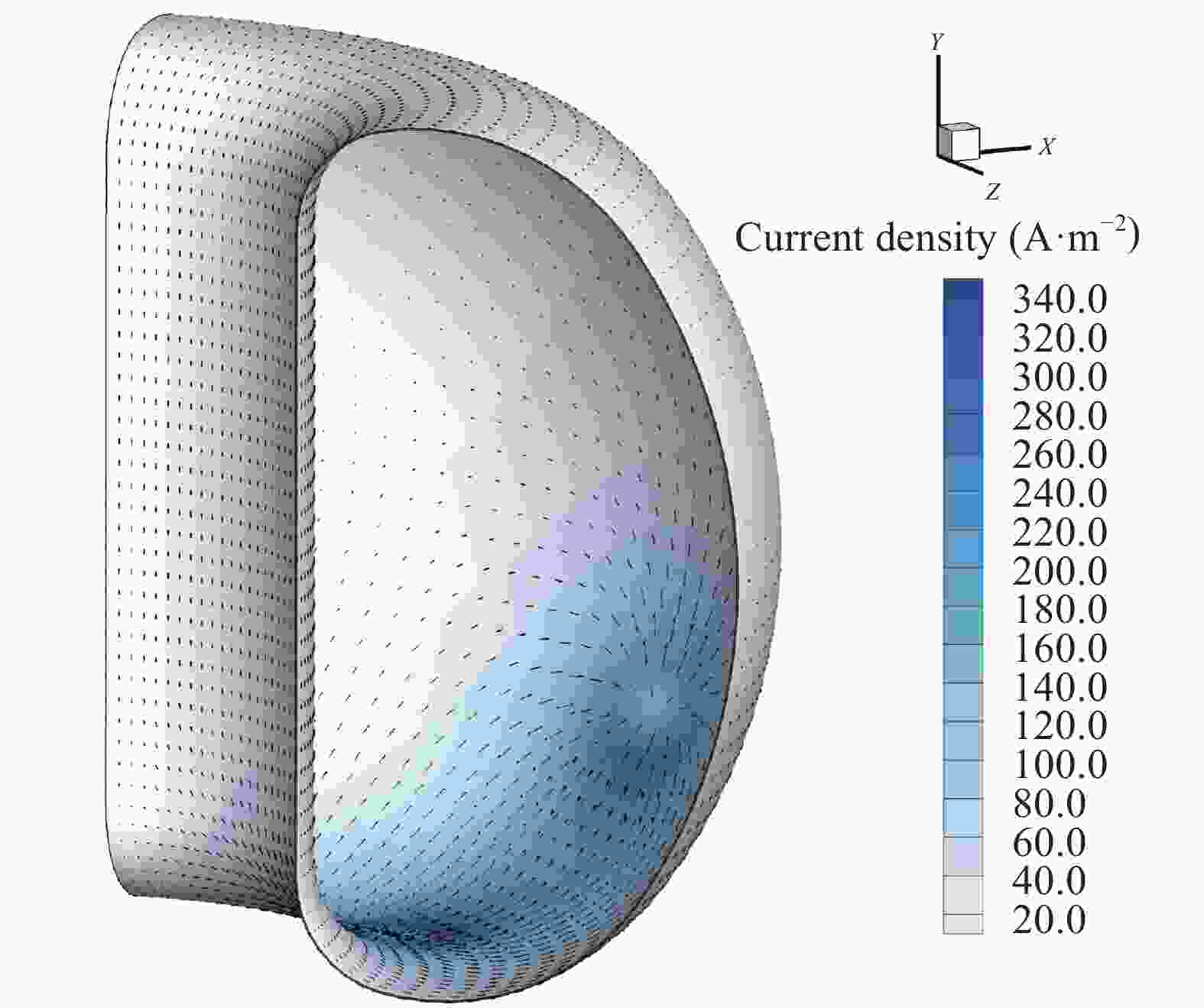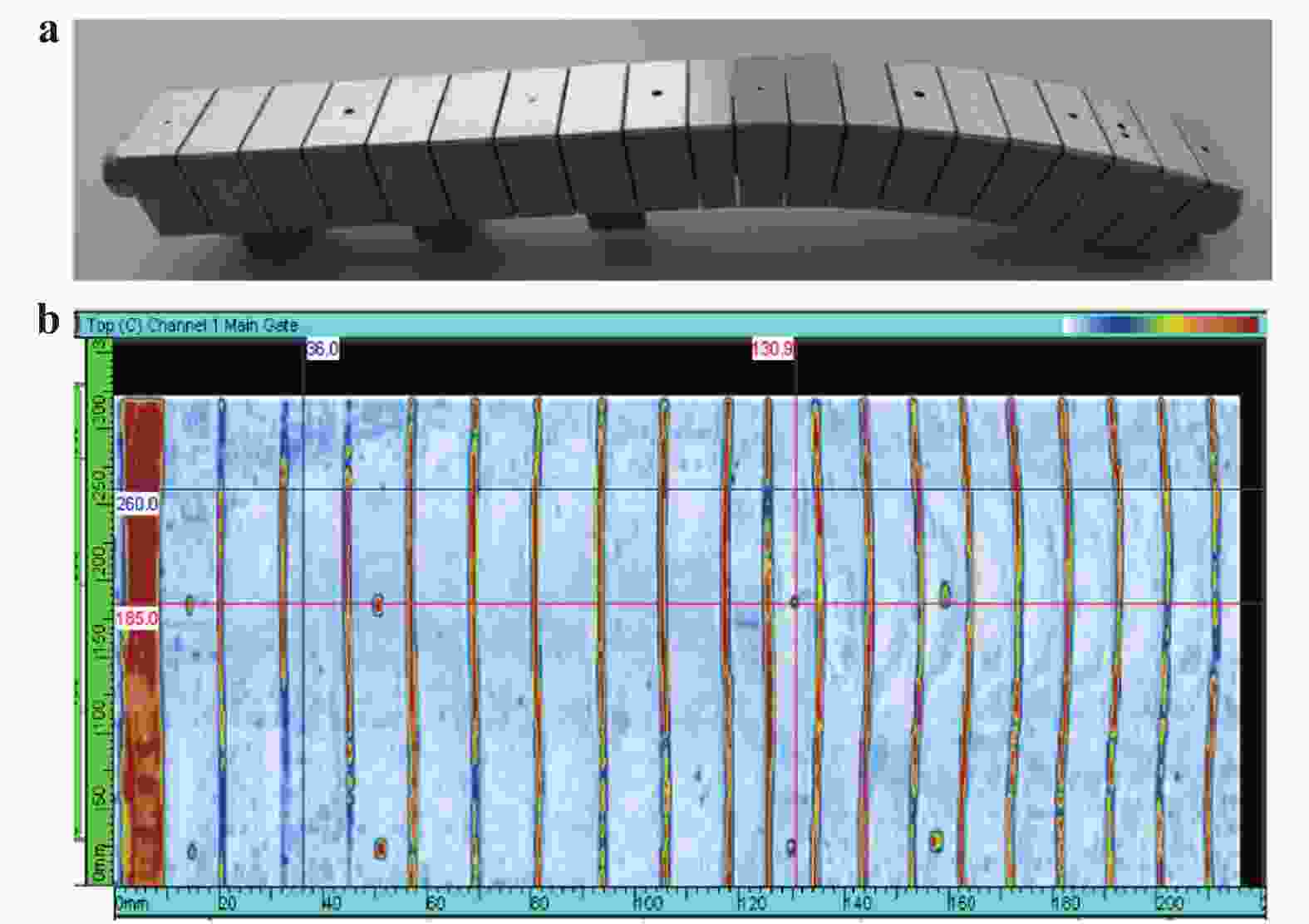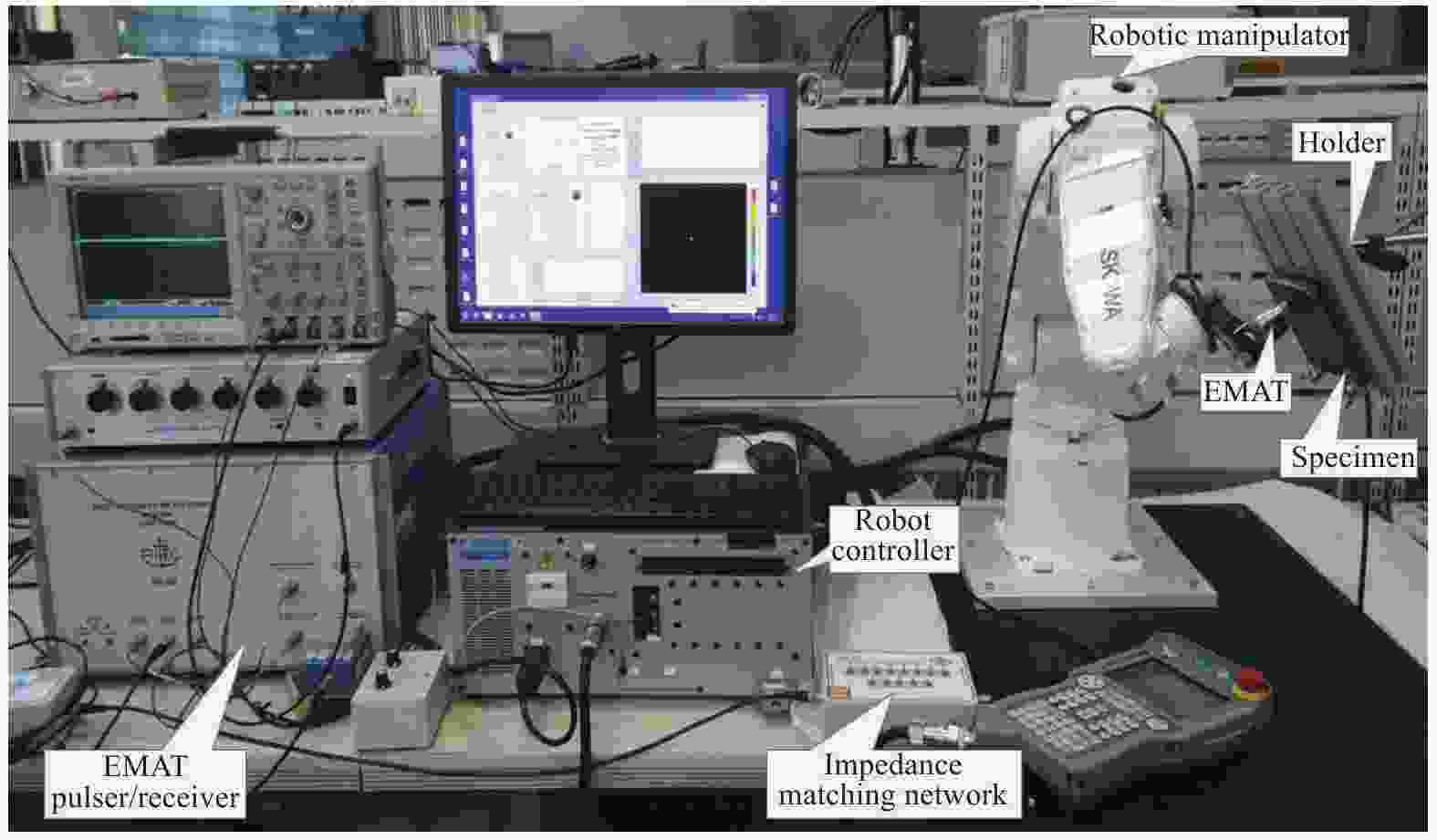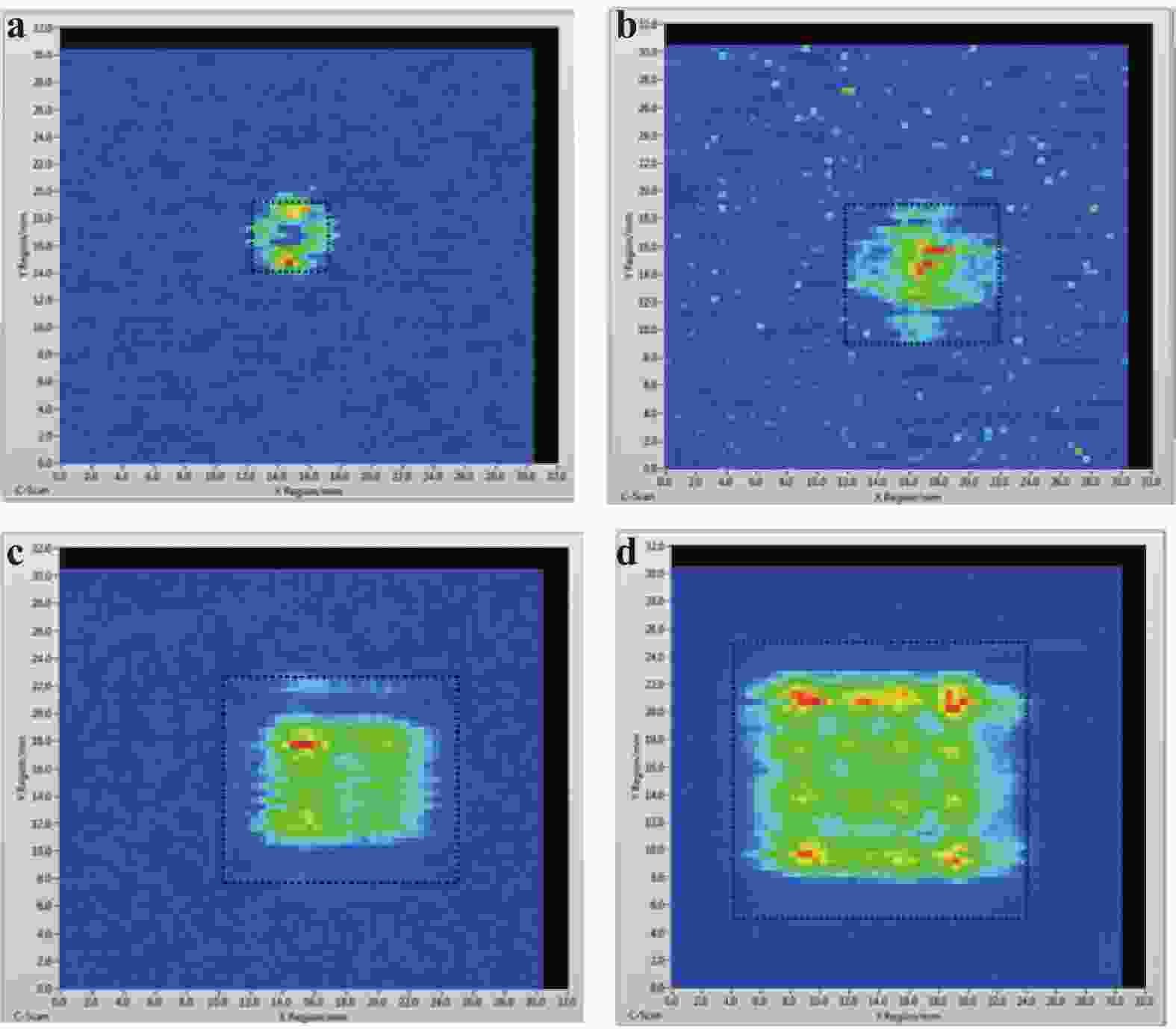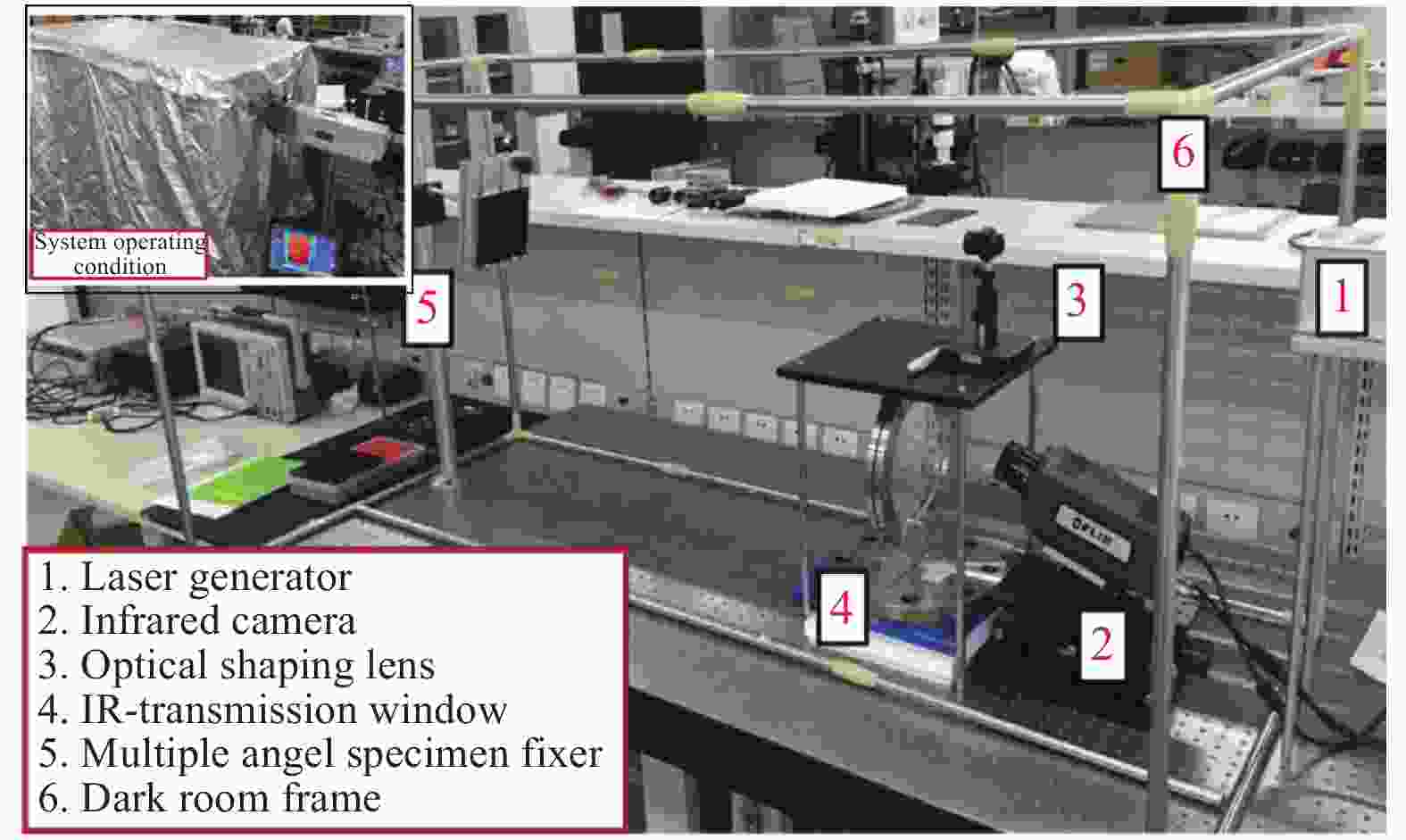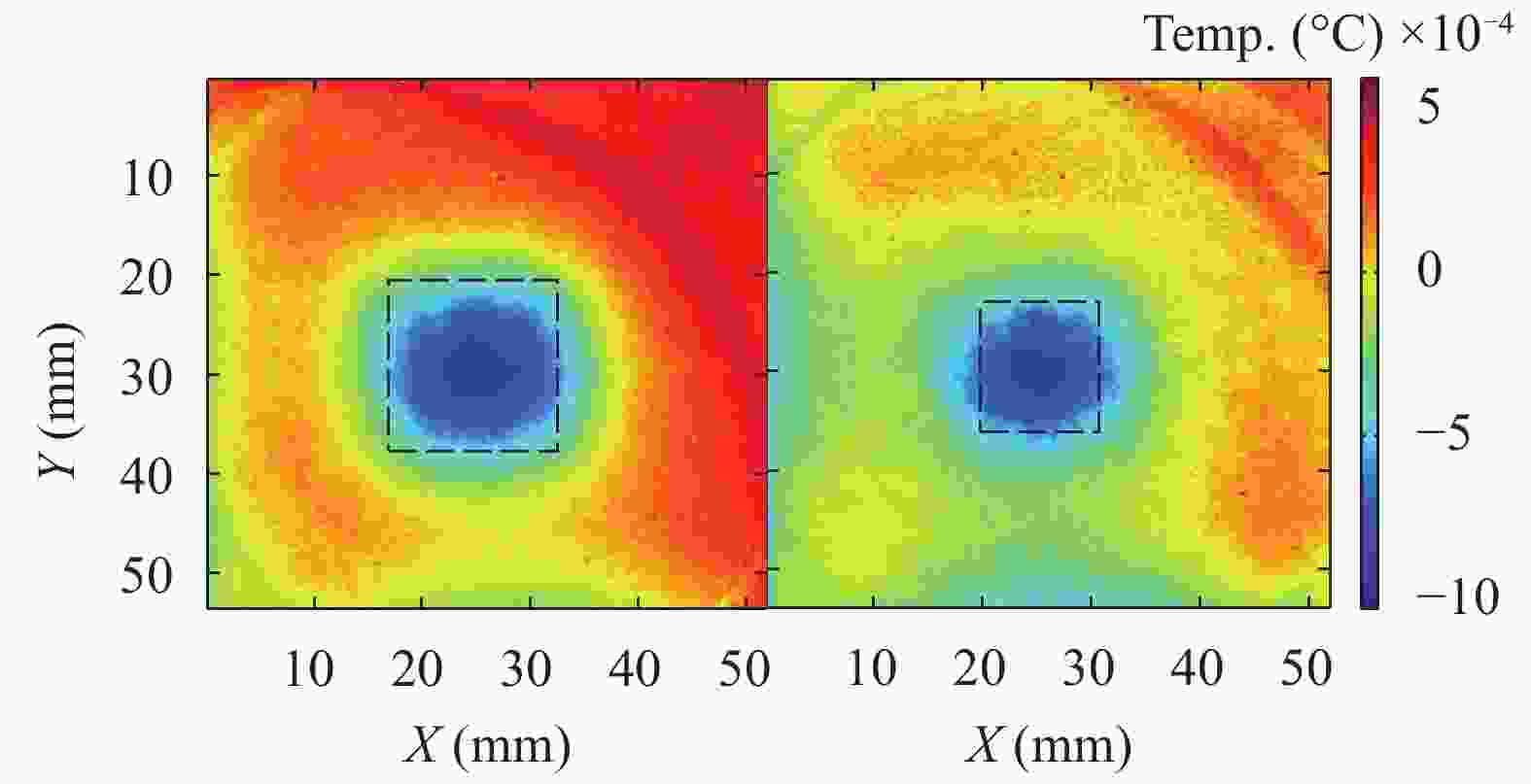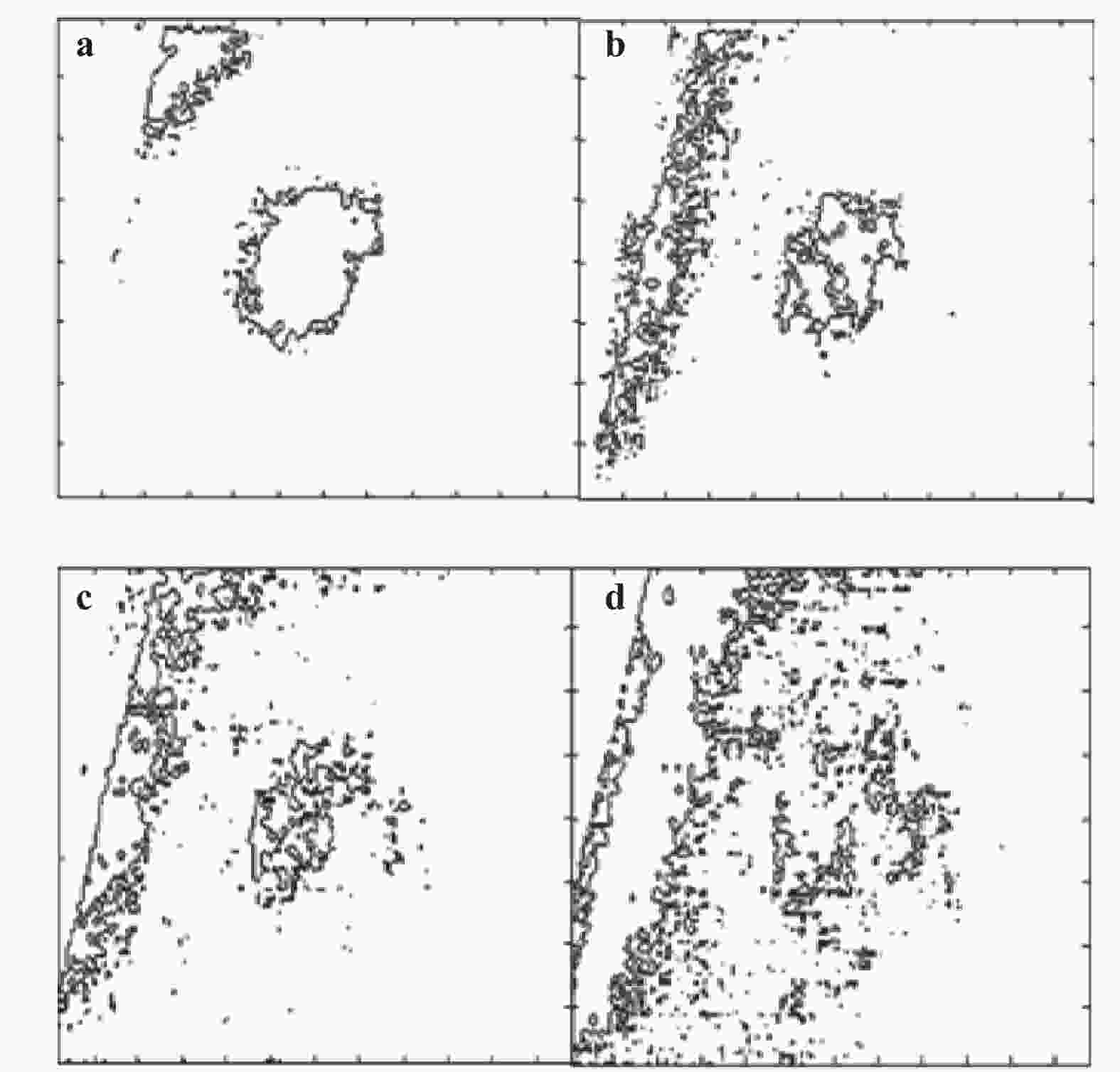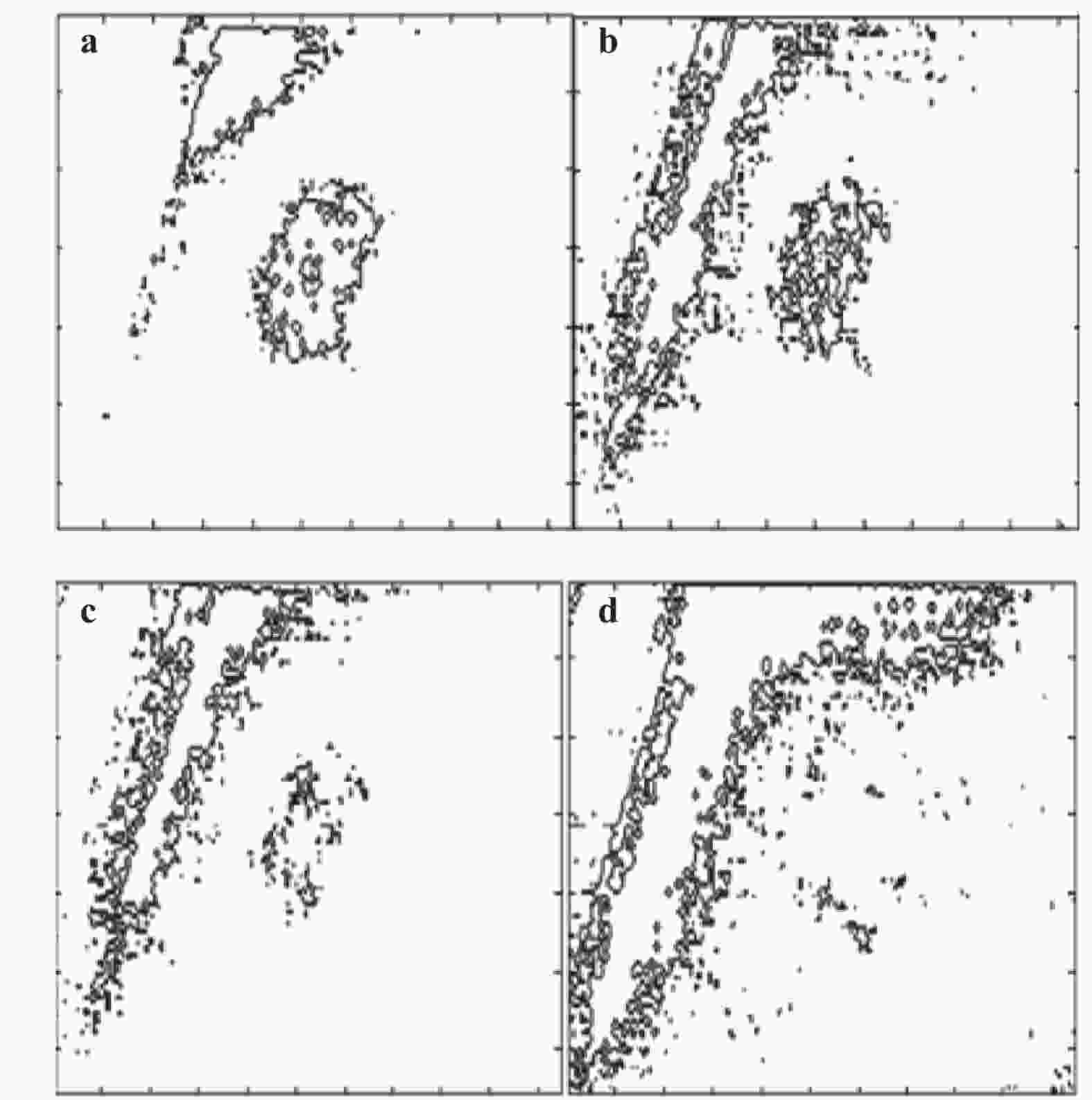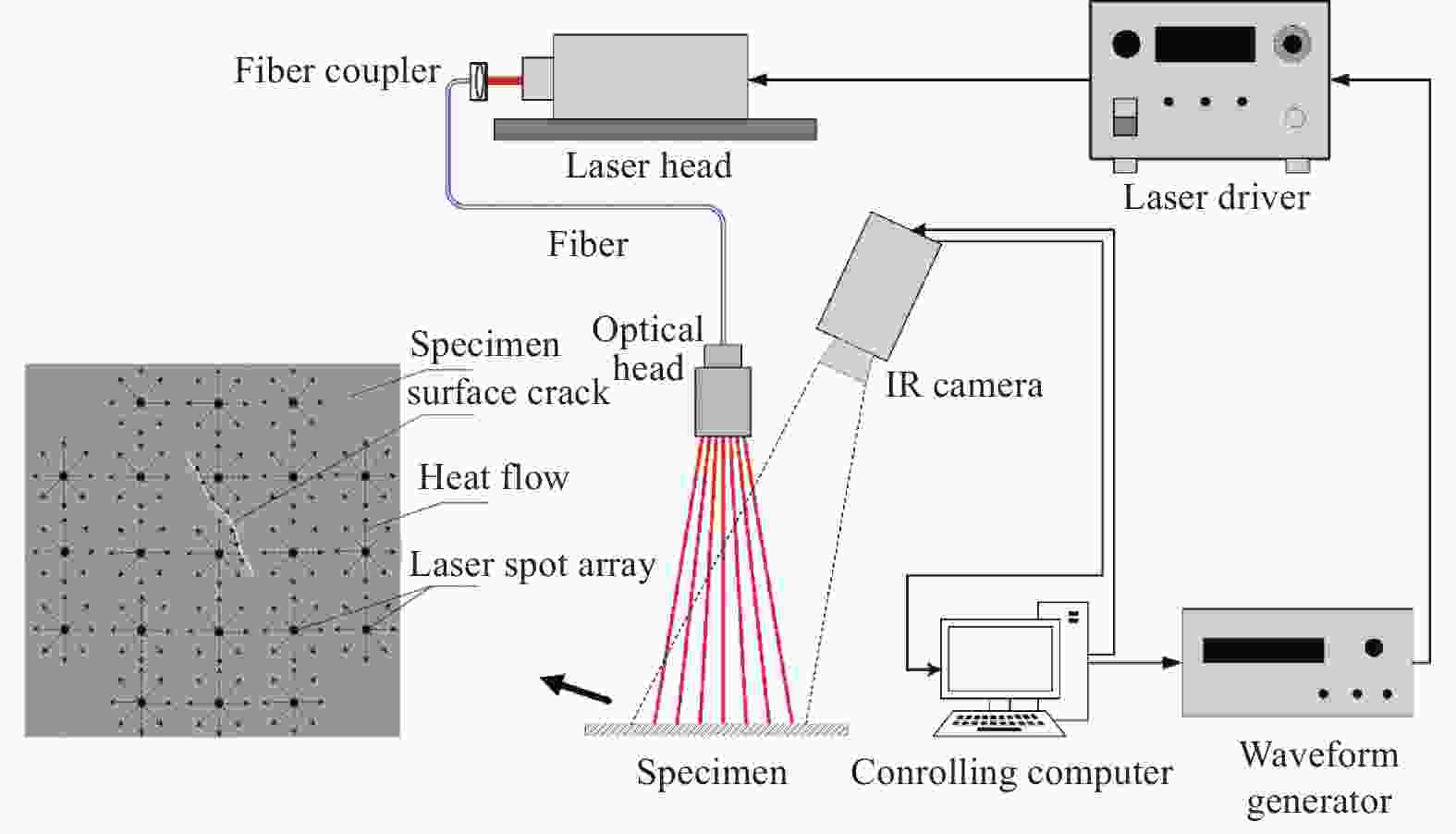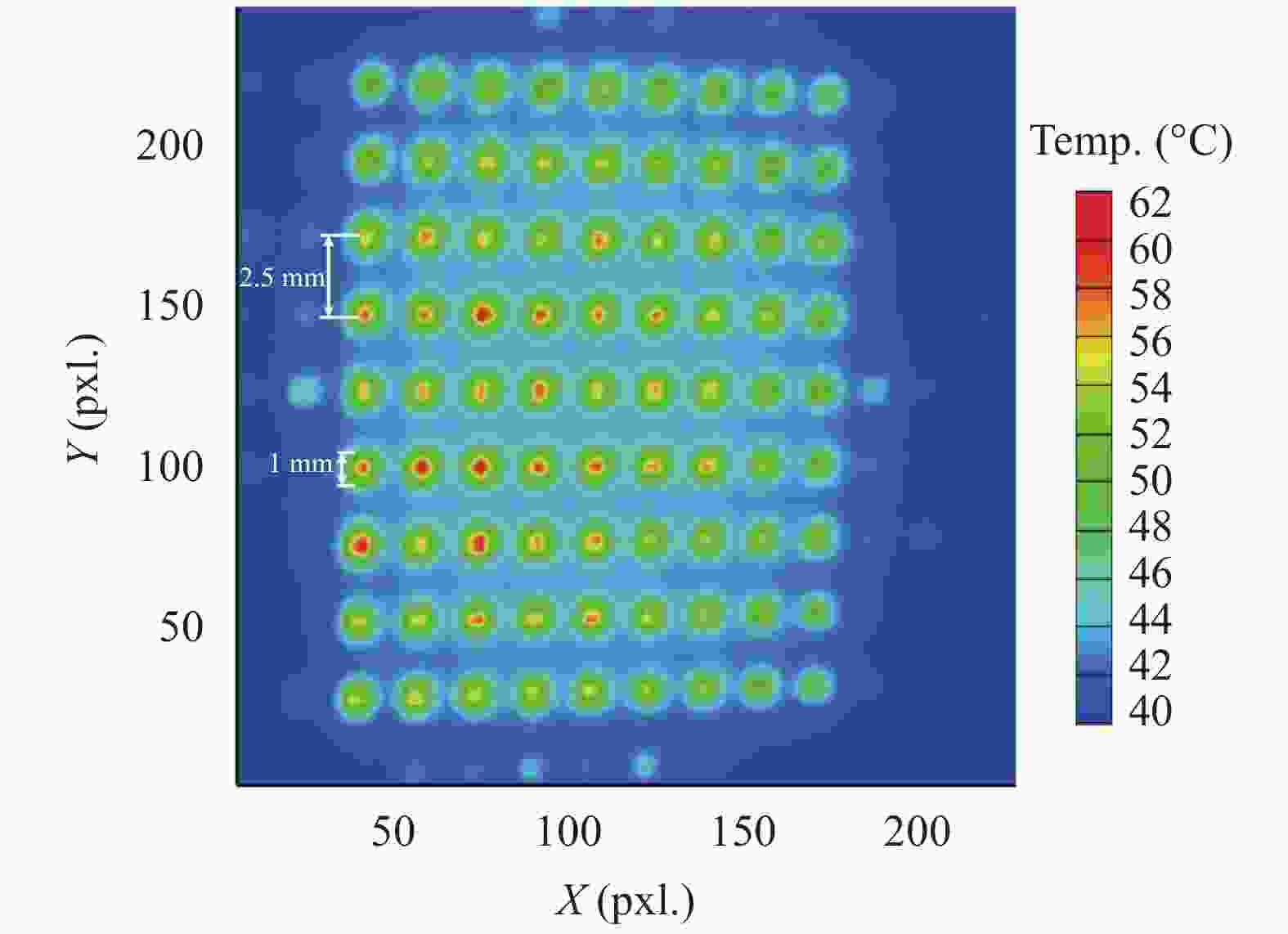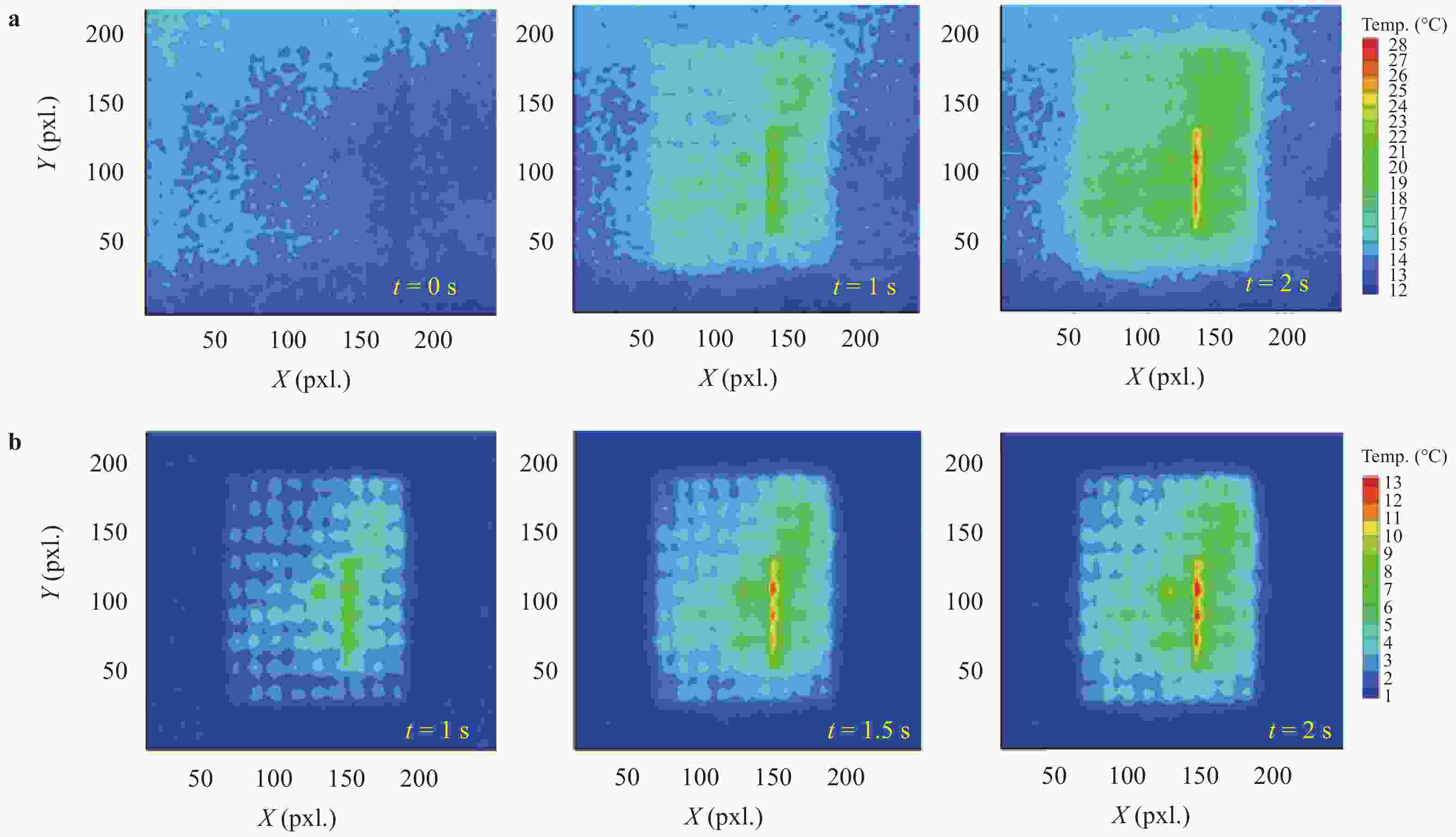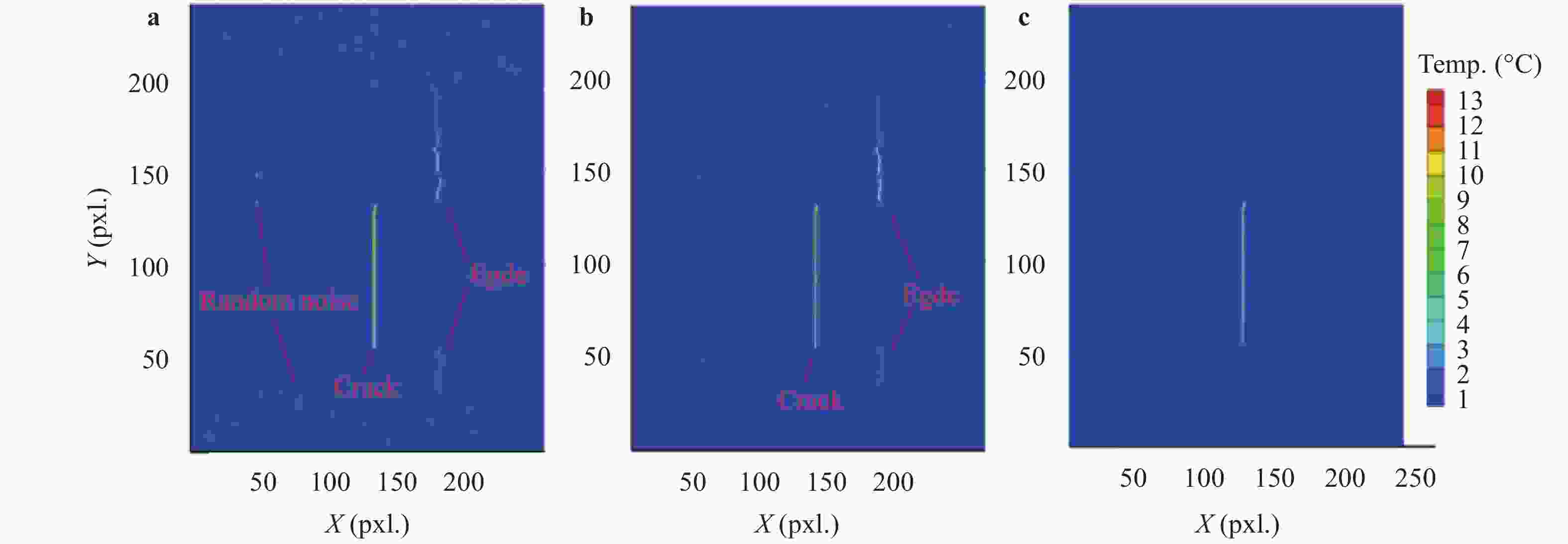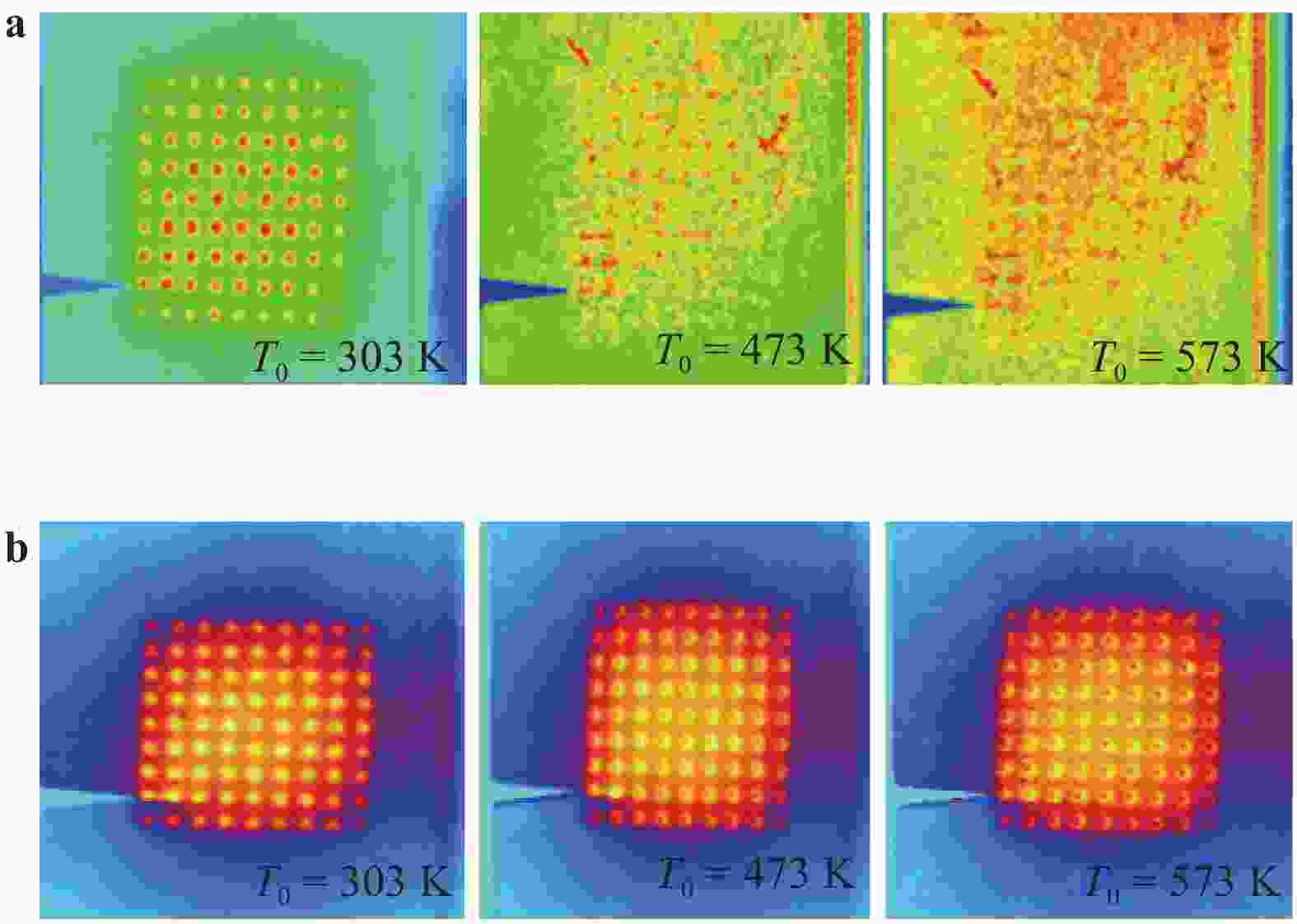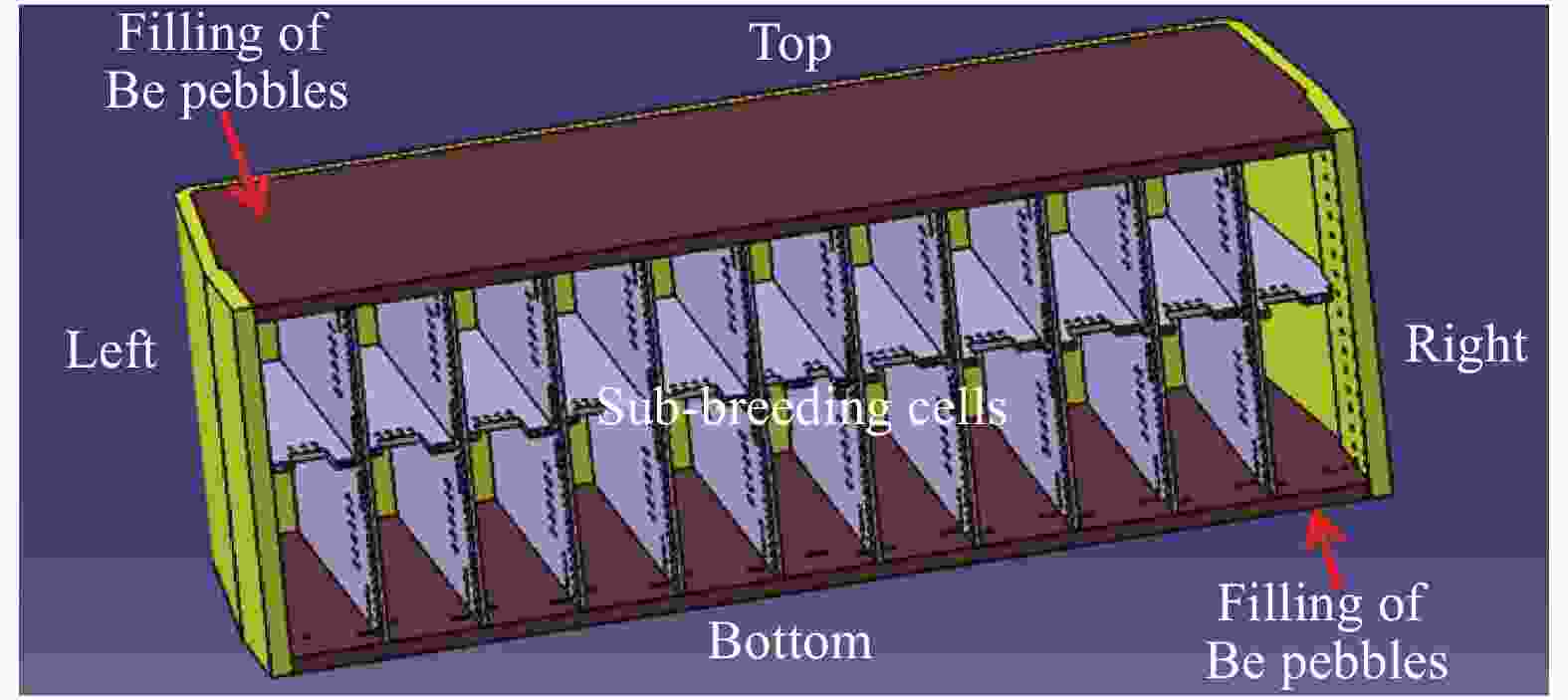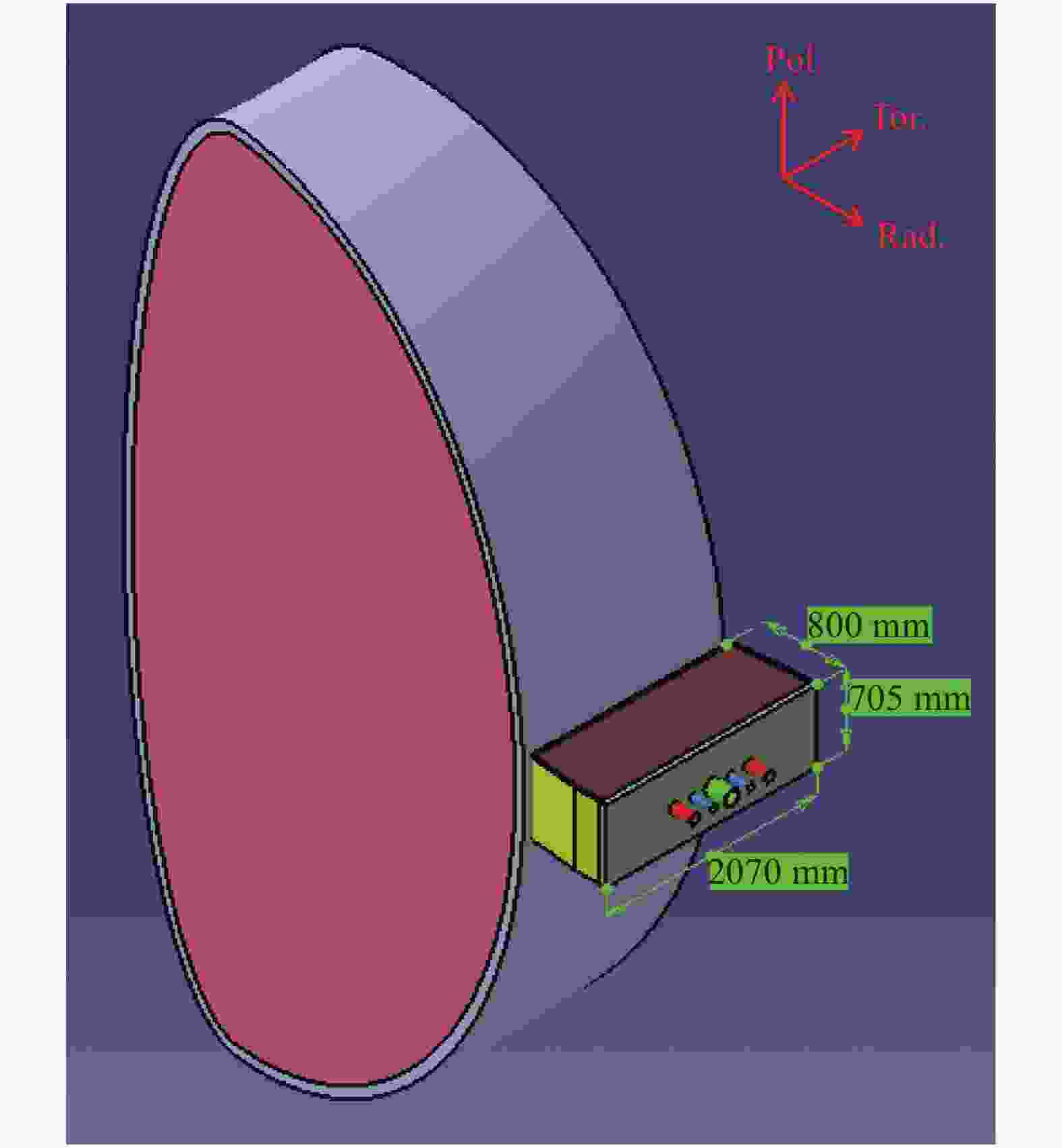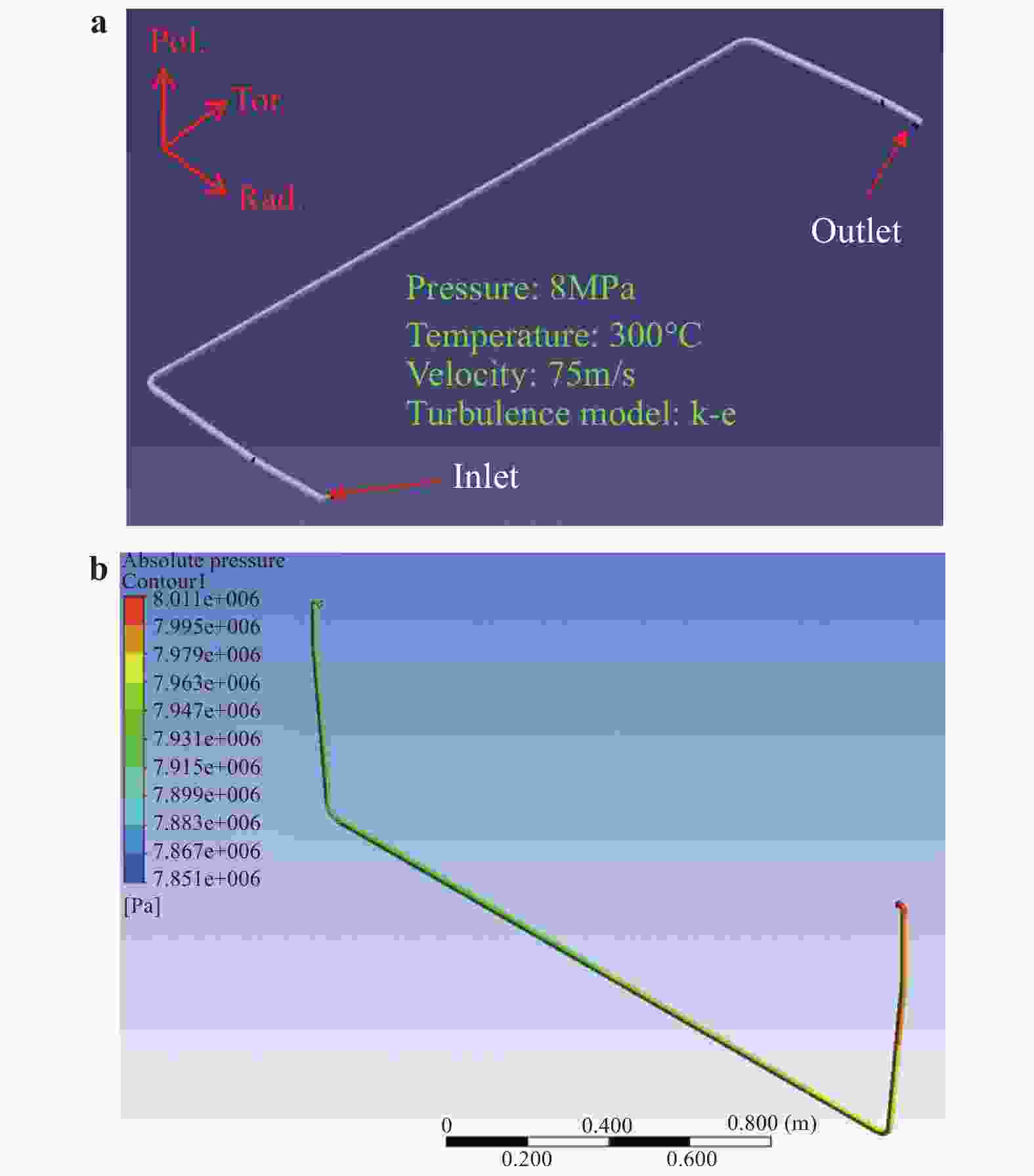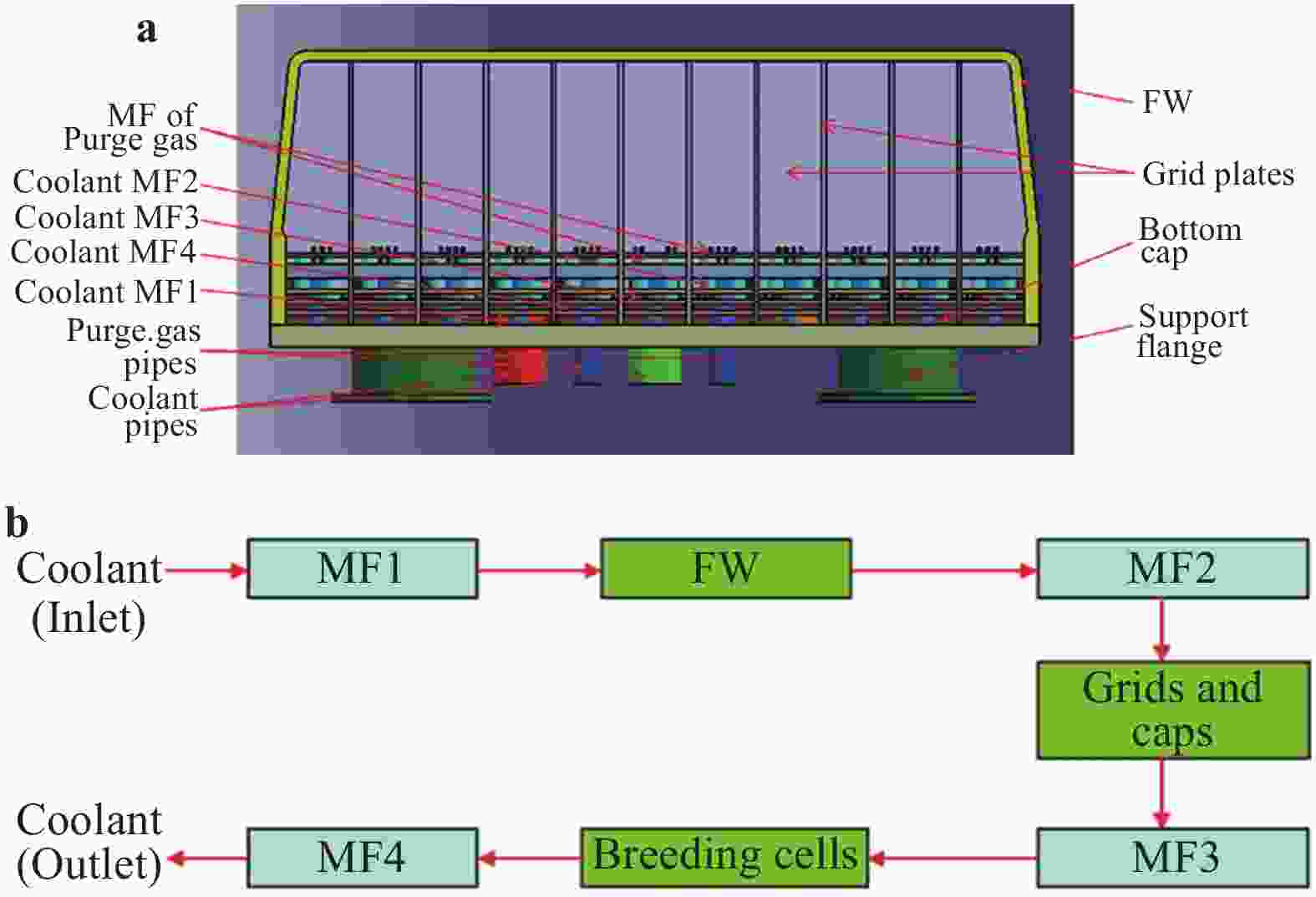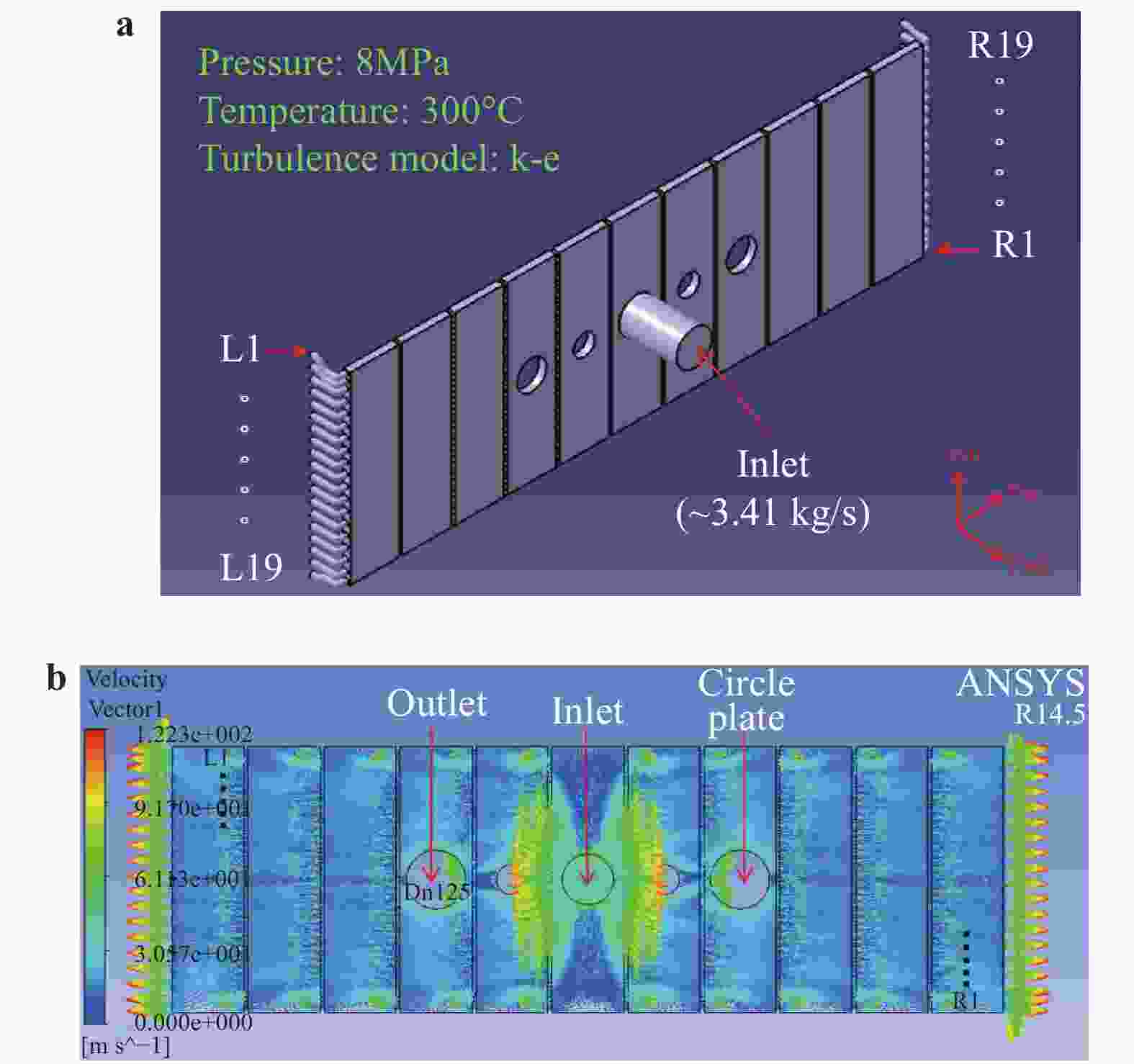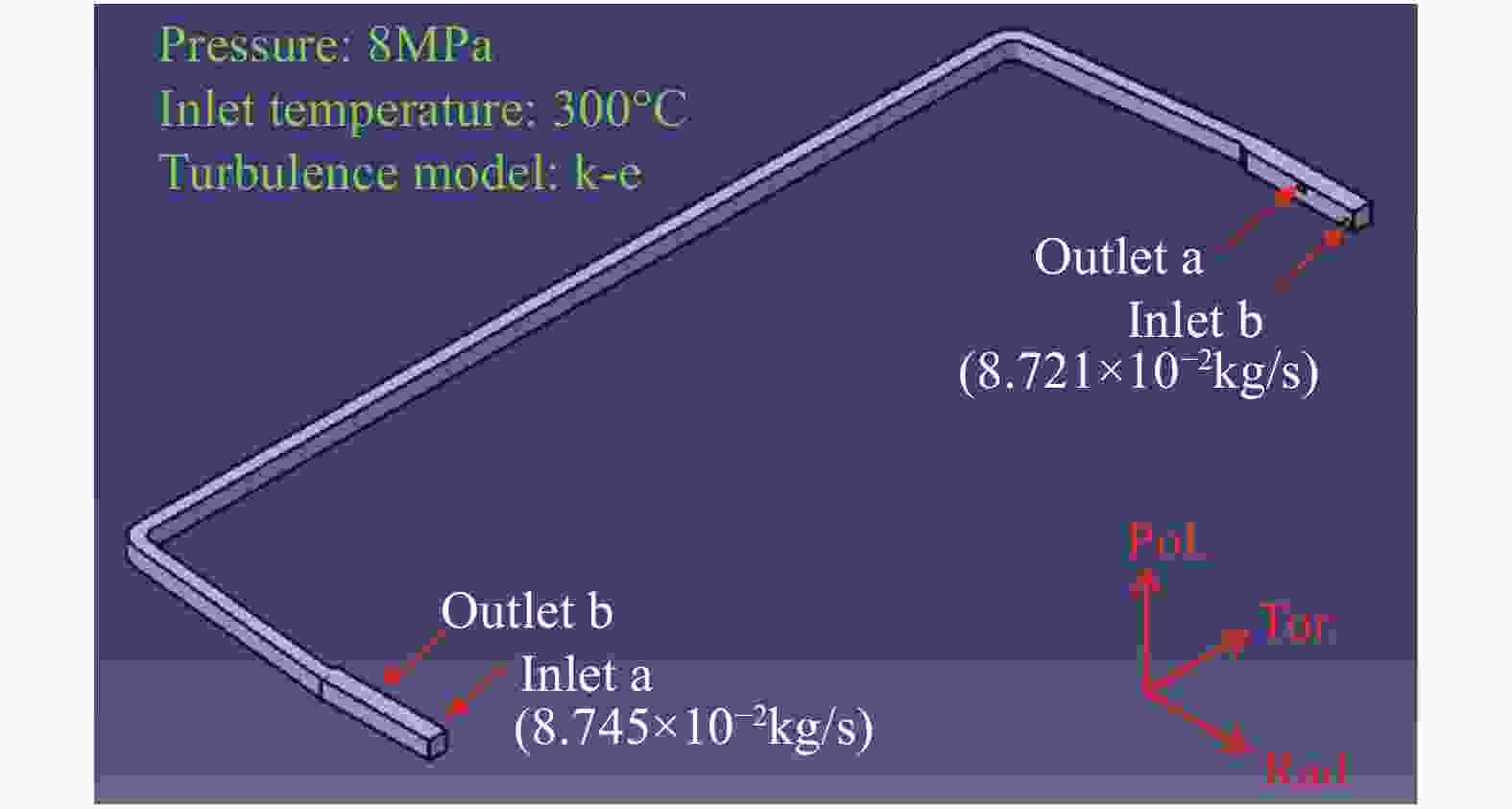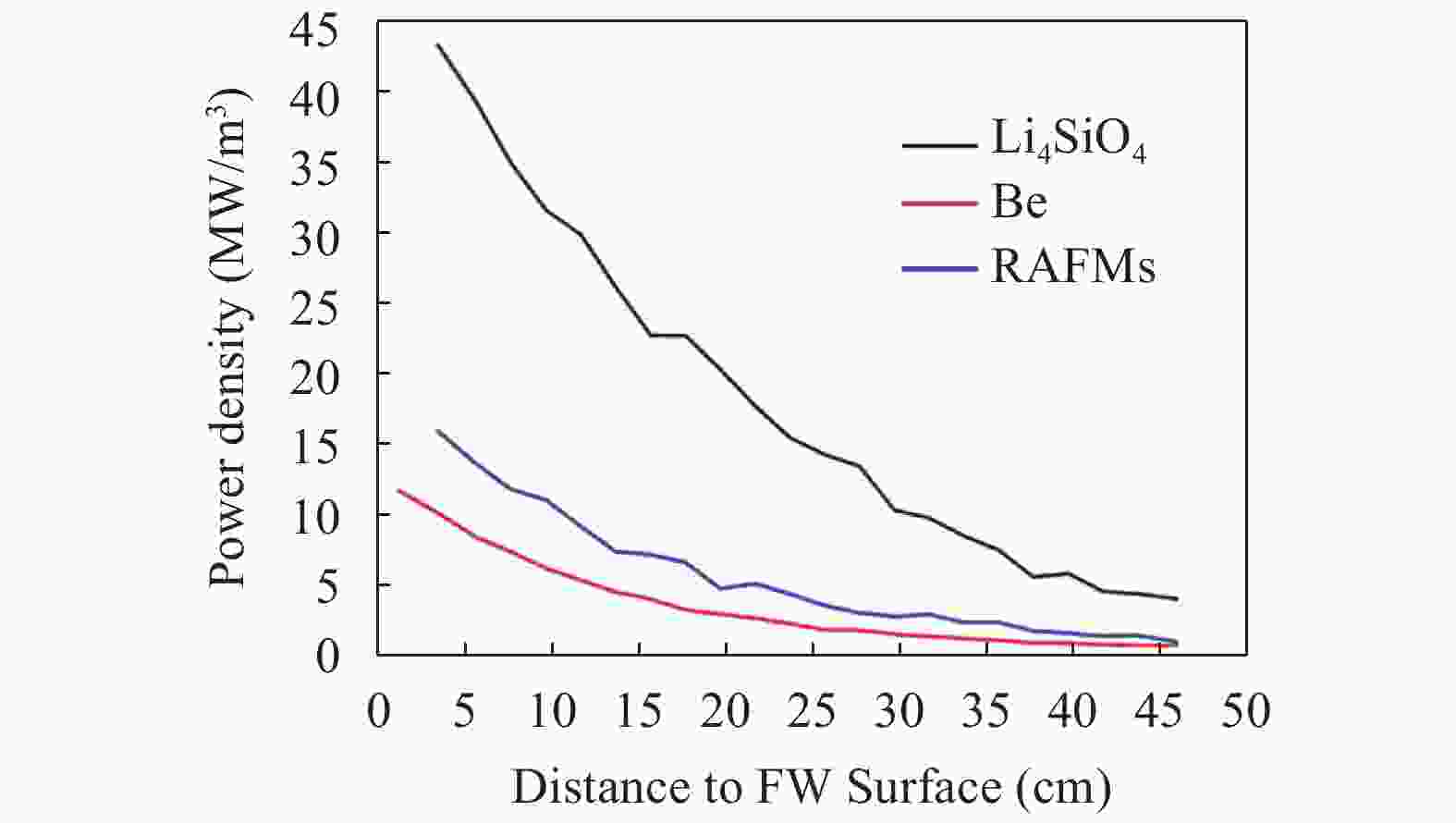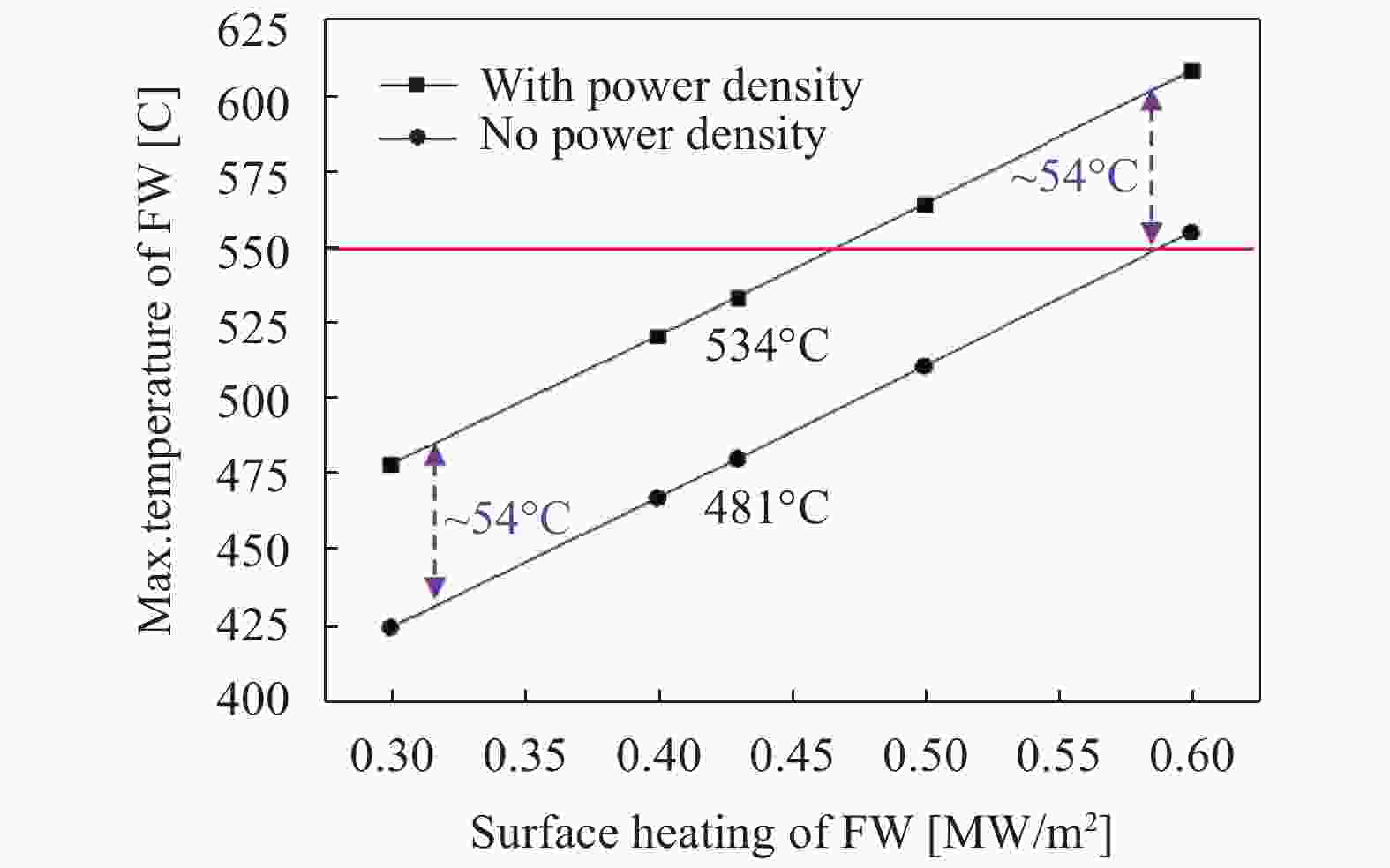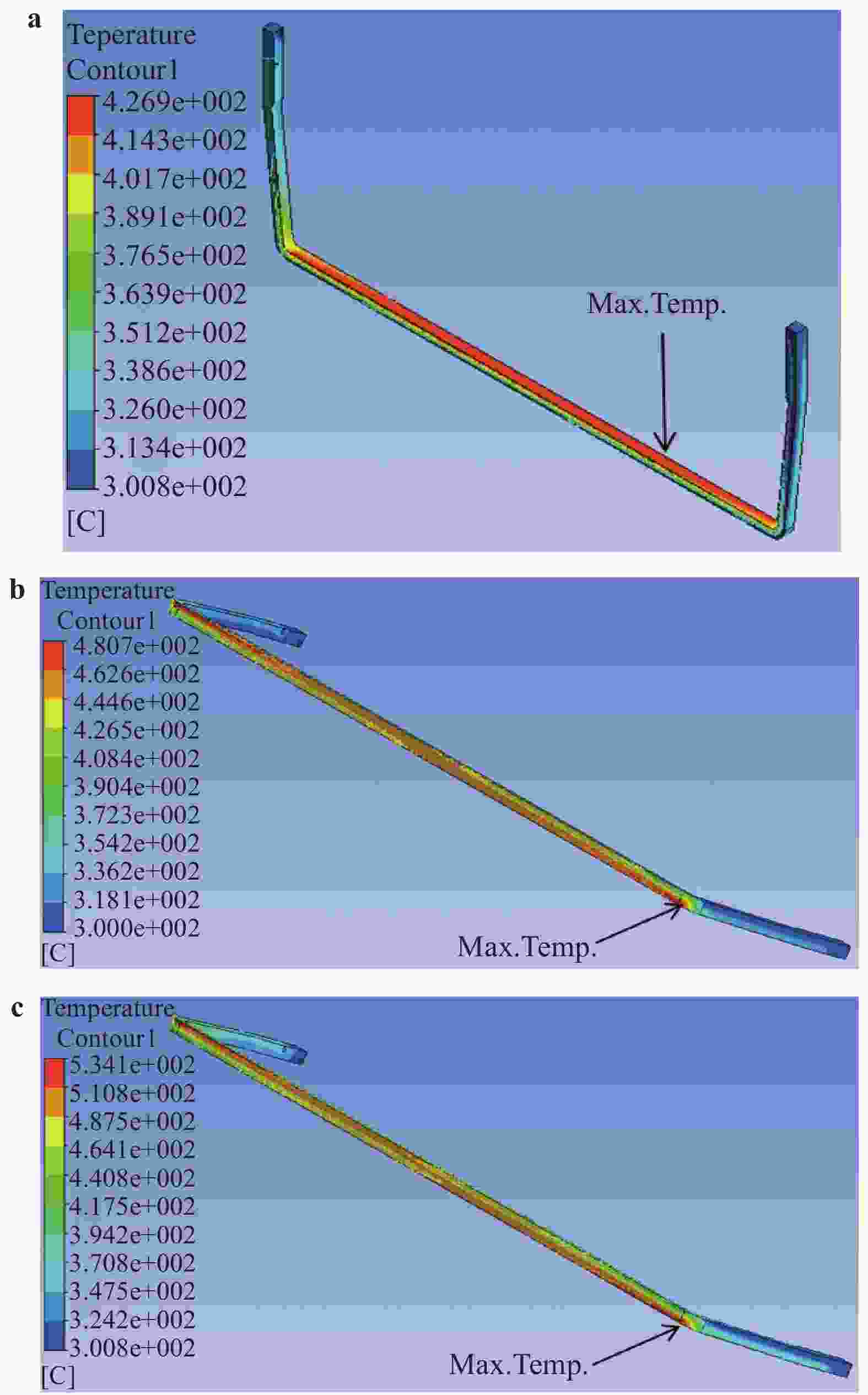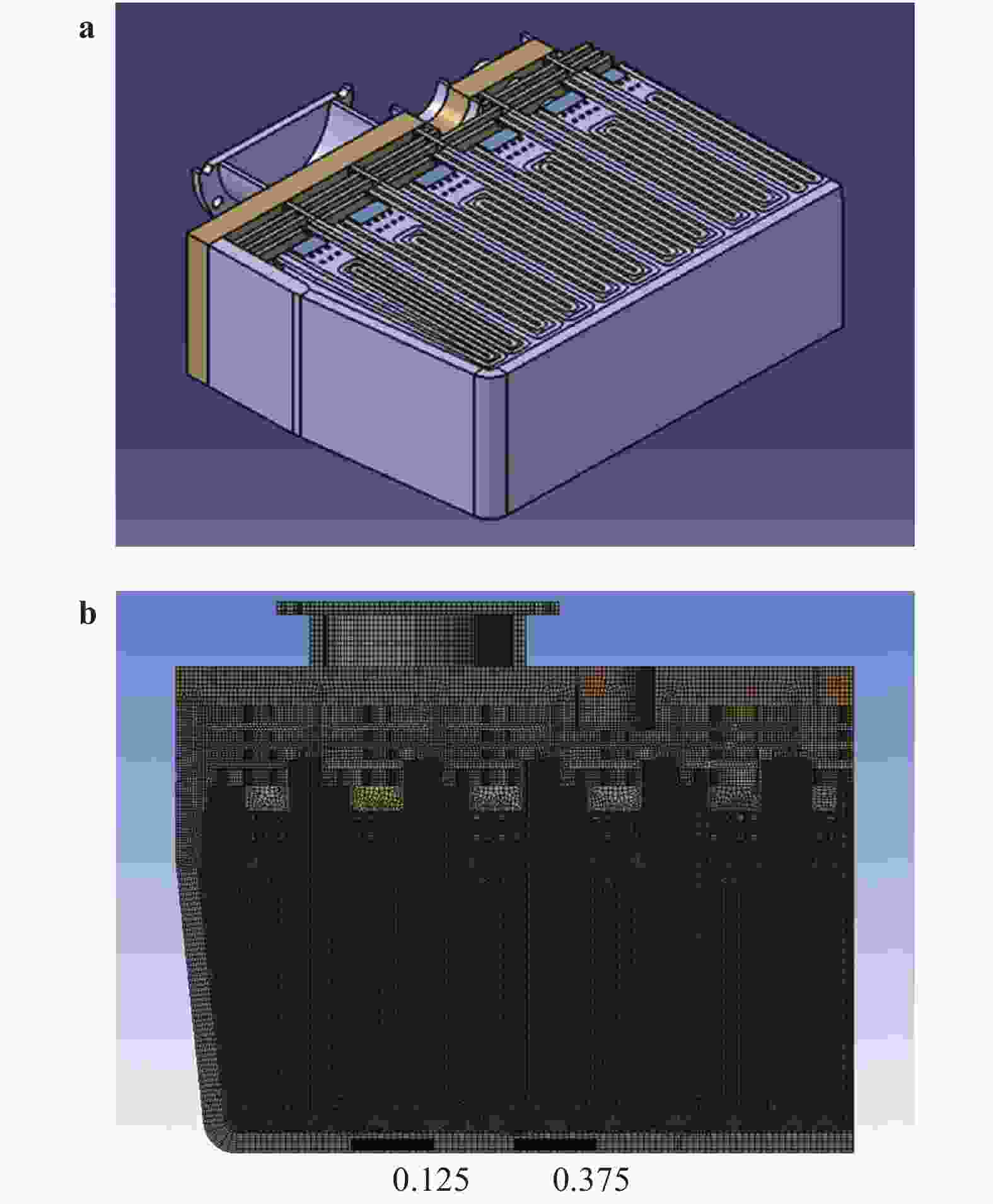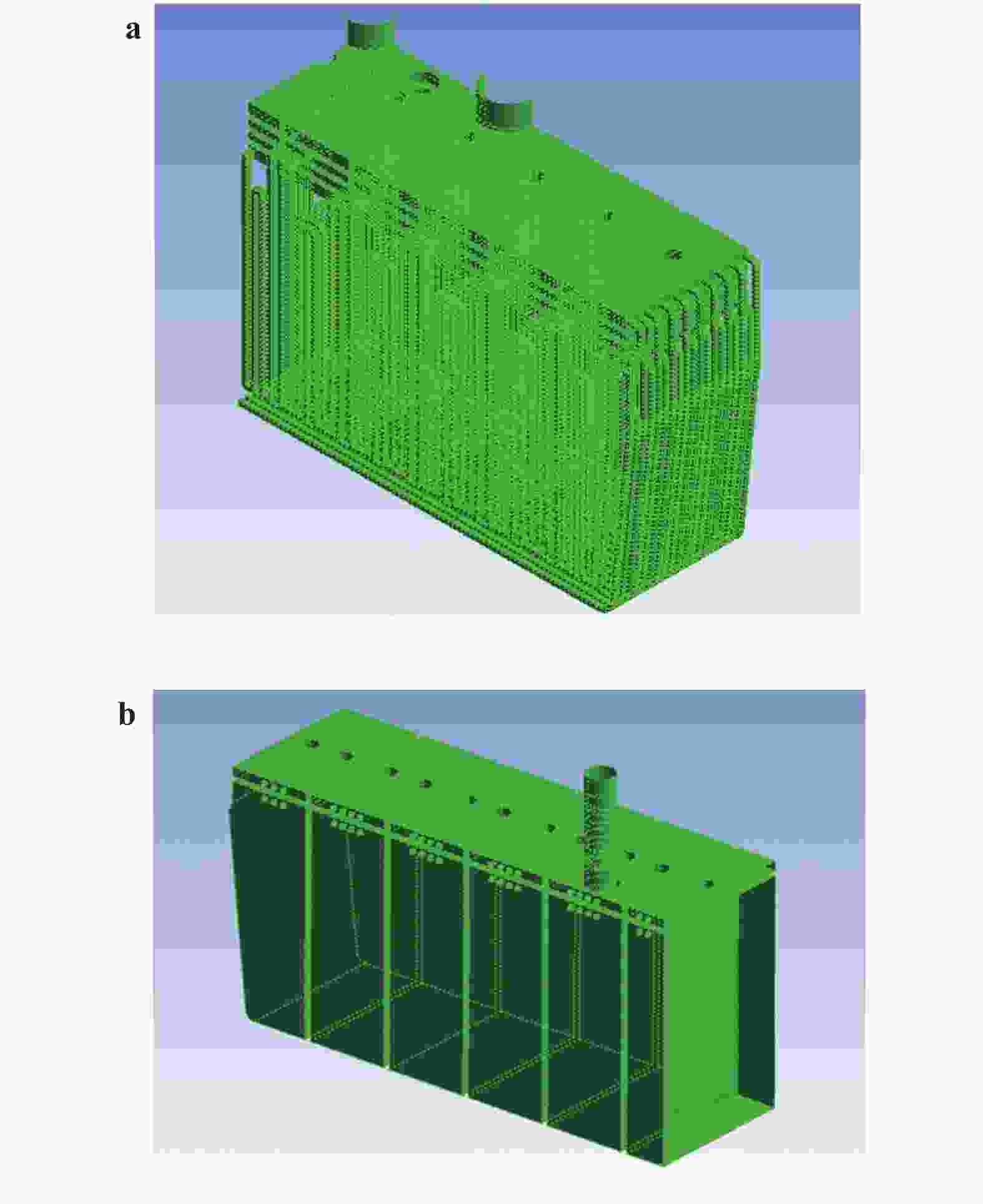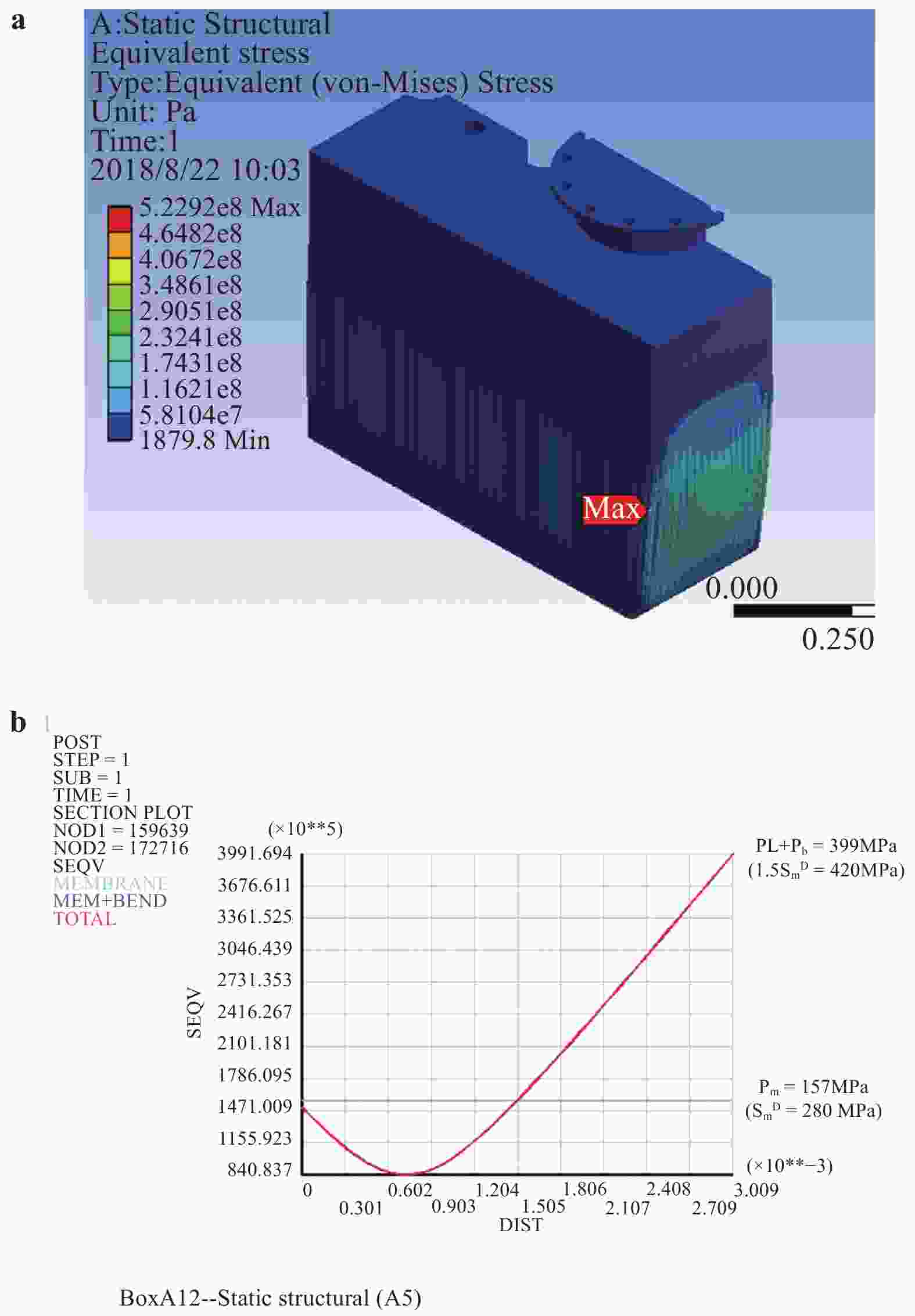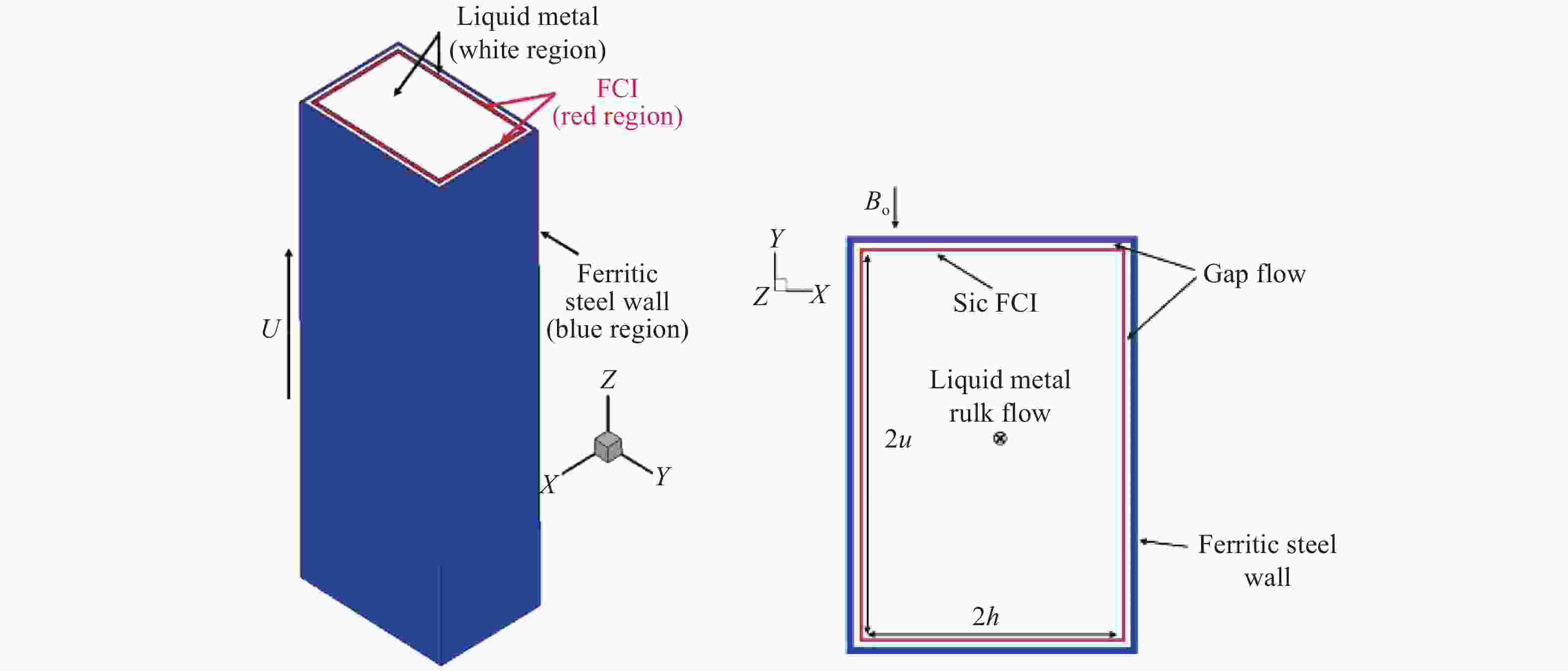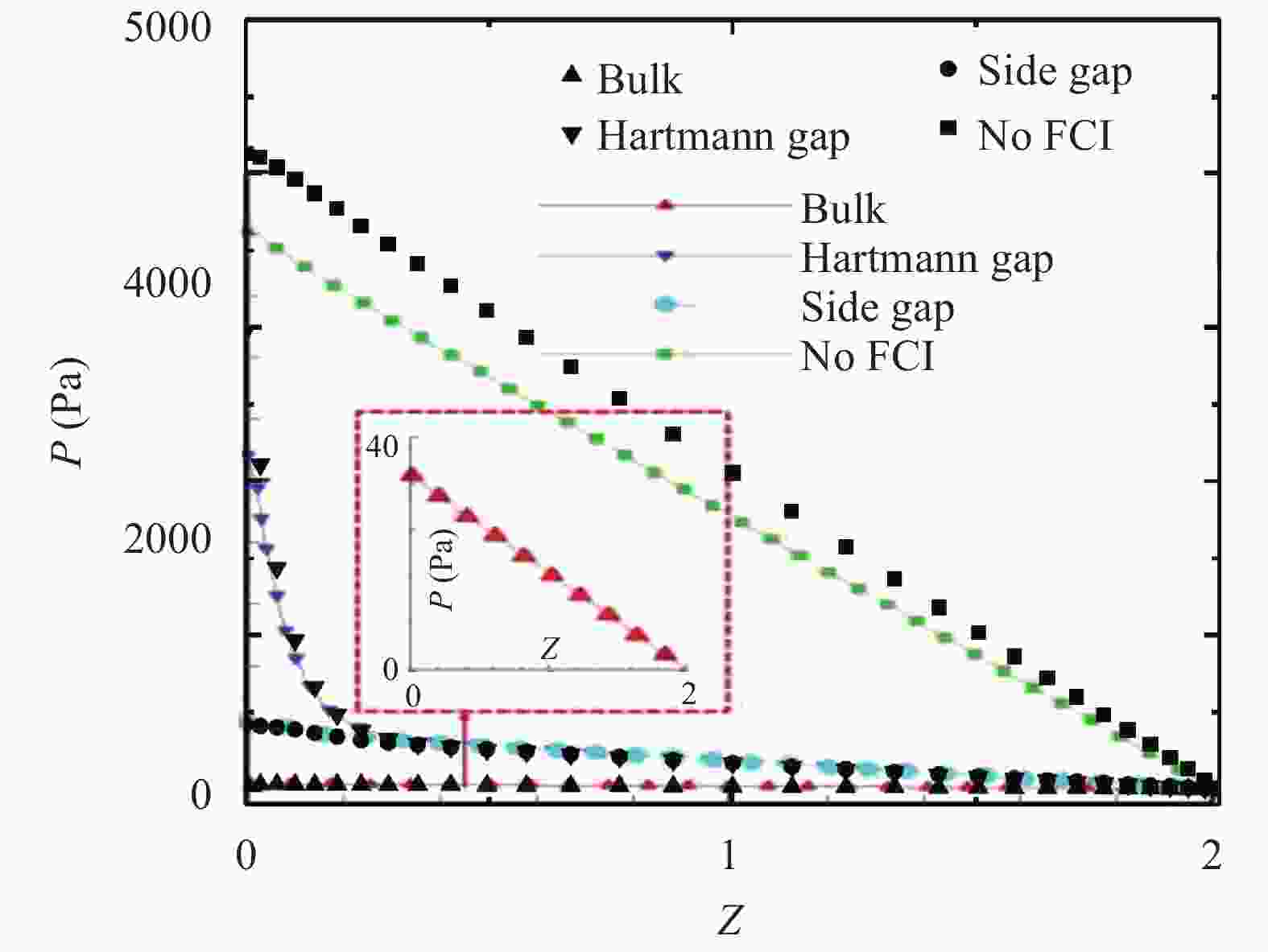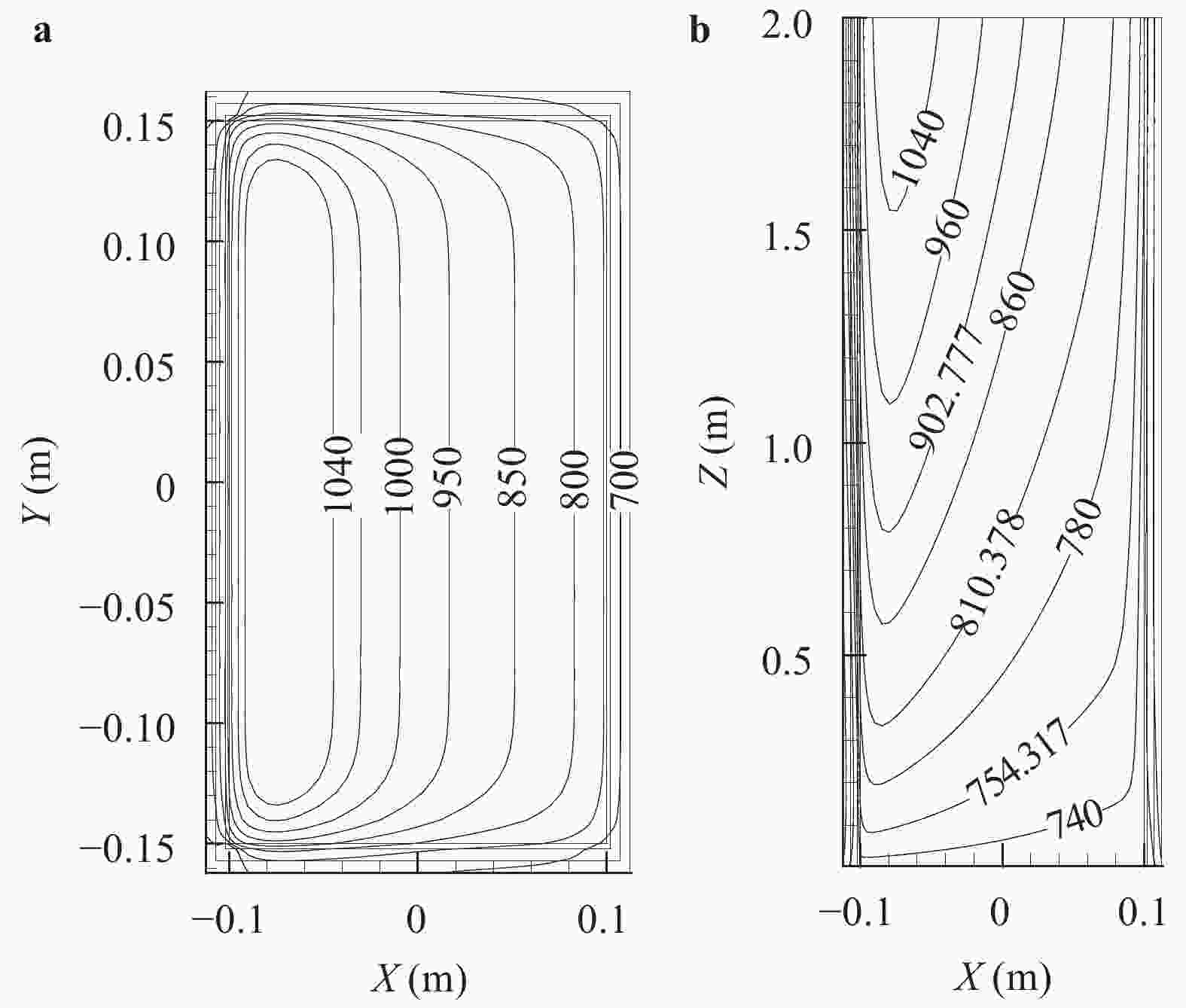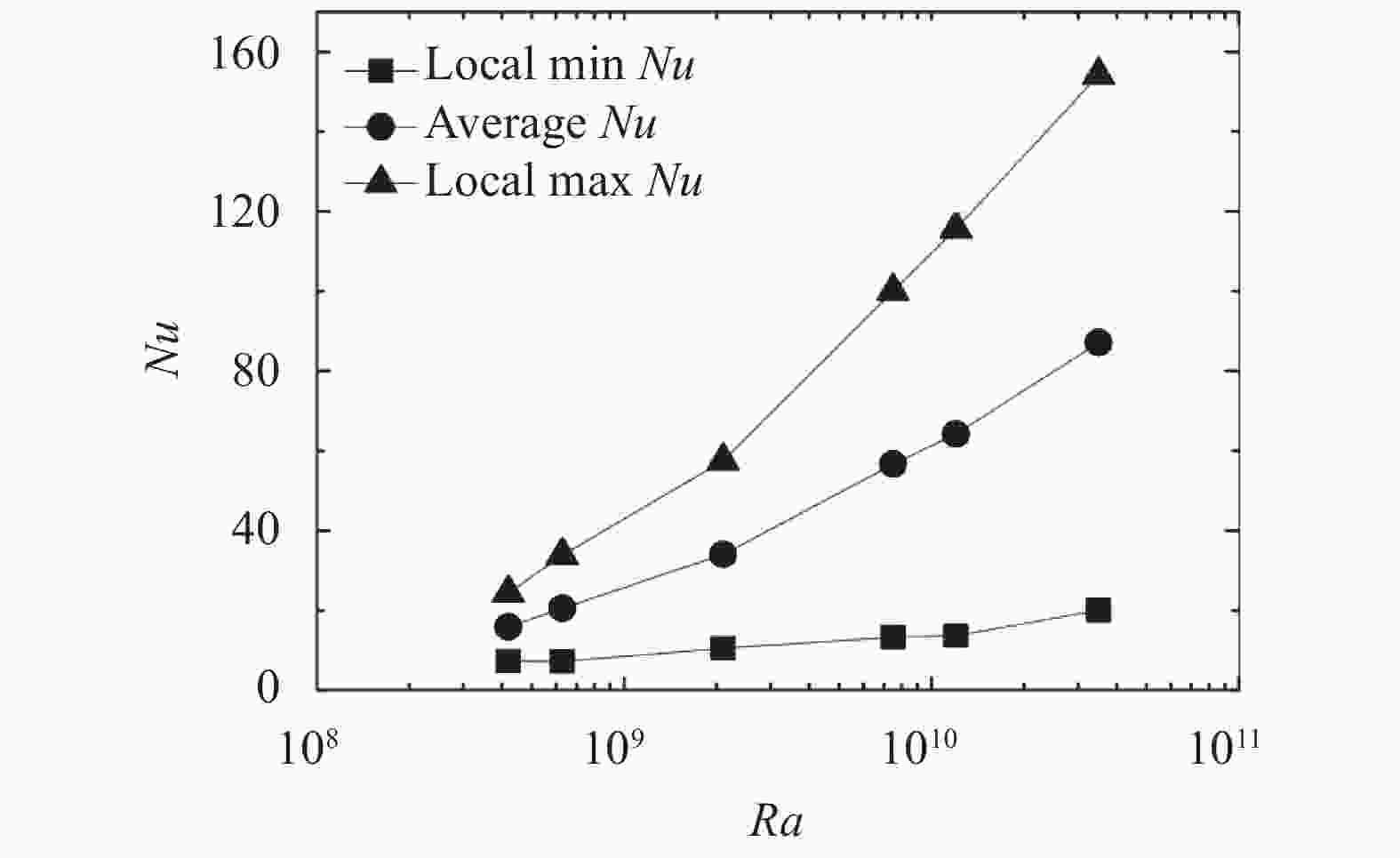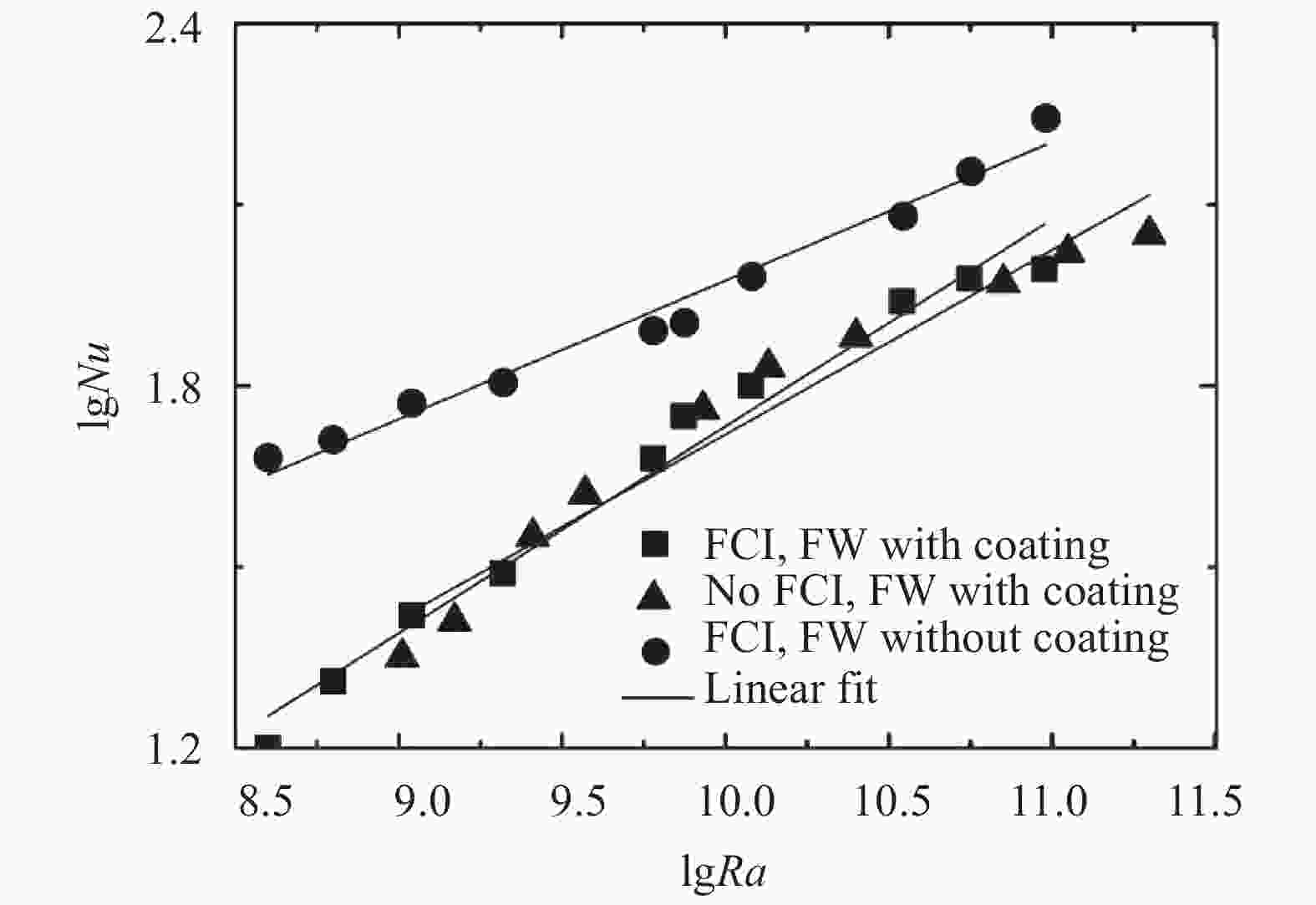Institute of Mechanics,
Chinese Academy of Sciences
2019 Vol.9(3)
column
Display Mode: |
Theoretical and Applied Mechanics Letters 2019, 9(3): 145-146.
doi: 10.1016/j.taml.2019.03.016
Abstract:
Theoretical and Applied Mechanics Letters 2019, 9(3): 147-151.
doi: 10.1016/j.taml.2019.03.002
Abstract:
For the application of second generation high temperature superconducting coated conductors (CCs) with layered structures, thermal mismatch between different components and electro-magnetic force exerted in superconducting layer in a working magnet can cause transverse tensile stress, which would result in delamination behavior. Therefore many research groups have designed experiments to measure the delamination strength and dedicate to improving that. However, the reason of the discrete distribution of measured data has still not get quantitatively studied, besides, there are lack of investigations on the method of changing depositing conditions to improve the delamination strength except by adding an additional metal layer. In this work, we adopt an anvil test device and obtain delamination strengths as 29.6 MPa of YBa2Cu3O7−x (YBCO)/buffer and 114.6 MPa of buffer/substrate by combing energy disperse spectroscopy (EDS) detection. The reason of discretized measurement data on the delamination strength is explained. Moreover, we find that different temperatures during Ag deposition determine the bonding force of Ag and YBCO layer. The Delamination strength between Ag and YBCO layer increases from 4.4 MPa to larger than 114.6 MPa with temperature elevated from 30 °C to 100 °C. Hence we present a novel method for improving the delamination strength of YBCO CCs by setting an optimal temperature of Ag deposition.
For the application of second generation high temperature superconducting coated conductors (CCs) with layered structures, thermal mismatch between different components and electro-magnetic force exerted in superconducting layer in a working magnet can cause transverse tensile stress, which would result in delamination behavior. Therefore many research groups have designed experiments to measure the delamination strength and dedicate to improving that. However, the reason of the discrete distribution of measured data has still not get quantitatively studied, besides, there are lack of investigations on the method of changing depositing conditions to improve the delamination strength except by adding an additional metal layer. In this work, we adopt an anvil test device and obtain delamination strengths as 29.6 MPa of YBa2Cu3O7−x (YBCO)/buffer and 114.6 MPa of buffer/substrate by combing energy disperse spectroscopy (EDS) detection. The reason of discretized measurement data on the delamination strength is explained. Moreover, we find that different temperatures during Ag deposition determine the bonding force of Ag and YBCO layer. The Delamination strength between Ag and YBCO layer increases from 4.4 MPa to larger than 114.6 MPa with temperature elevated from 30 °C to 100 °C. Hence we present a novel method for improving the delamination strength of YBCO CCs by setting an optimal temperature of Ag deposition.
Theoretical and Applied Mechanics Letters 2019, 9(3): 152-160.
doi: 10.1016/j.taml.2019.03.008
Abstract:
Magnetohydrodynamic (MHD) mixed convection under strong magnetic field and volumetric heat source for buoyancy-assisted flows are studied numerically in this paper. Blanket is one of key components for energy conversion in Tokamak fusion reactor. The physical model employed for simulations is refined from dual-coolant lead-lithium (DCLL) blanket. A magnetic-convection code based on a consistent and conservative scheme is developed with the help of finite volume method, and validated by some Benchmark analytical solutions. The flows inside duct with thermal insulating and electric conducting walls under exponential neutron volumetric heat source are simulated. Based on Boussinesq assumption, the influences of wall electrical conductivity and buoyancy on velocity fields, temperature distributions and Nusselt numbers are investigated. Results illustrates that the wall conductance ratio dominates the flow at low Grashof numbers and high wall conductance ratio, while buoyancy effect dominates the jet flow near side wall at a high Grashof number. In addition, the velocity along flow direction substantially impacts features of the Nusselt number and temperature distribution. Besides, the jet flow results in a higher Nusselt number and lower temperature.
Magnetohydrodynamic (MHD) mixed convection under strong magnetic field and volumetric heat source for buoyancy-assisted flows are studied numerically in this paper. Blanket is one of key components for energy conversion in Tokamak fusion reactor. The physical model employed for simulations is refined from dual-coolant lead-lithium (DCLL) blanket. A magnetic-convection code based on a consistent and conservative scheme is developed with the help of finite volume method, and validated by some Benchmark analytical solutions. The flows inside duct with thermal insulating and electric conducting walls under exponential neutron volumetric heat source are simulated. Based on Boussinesq assumption, the influences of wall electrical conductivity and buoyancy on velocity fields, temperature distributions and Nusselt numbers are investigated. Results illustrates that the wall conductance ratio dominates the flow at low Grashof numbers and high wall conductance ratio, while buoyancy effect dominates the jet flow near side wall at a high Grashof number. In addition, the velocity along flow direction substantially impacts features of the Nusselt number and temperature distribution. Besides, the jet flow results in a higher Nusselt number and lower temperature.
Theoretical and Applied Mechanics Letters 2019, 9(3): 161-172.
doi: 10.1016/j.taml.2019.03.001
Abstract:
The water-cooled ceramic breeder (WCCB) blanket is one of the blanket candidates for Chinese fusion engineering testing reactor (CFETR) and is being developed at the Institute of Plasma Physics, Chinese Academy of Sciences (ASIPP). This paper reviews design and evolution of the WCCB blanket for CFETR, and presents a new WCCB blanket design according to the latest CFETR core parameters (major and minor radii are R = 7.2 m and a = 2.2 m, respectively) and missions. This new design is expected to satisfy multiple CFETR operation modes of 0.2, 0.5, 1.0, and 1.5 GW fusion power and achieve tritium self-sufficiency. The feasibility of the updated blanket design is evaluated from the aspects of neutronics and thermo-hydraulics. Furthermore, the research and development (R&D) activities supporting to the WCCB blanket for CFETR are reported, including the design code, the water loop experiments, the pebble bed modeling and experiments, and the components fabrication technology.
The water-cooled ceramic breeder (WCCB) blanket is one of the blanket candidates for Chinese fusion engineering testing reactor (CFETR) and is being developed at the Institute of Plasma Physics, Chinese Academy of Sciences (ASIPP). This paper reviews design and evolution of the WCCB blanket for CFETR, and presents a new WCCB blanket design according to the latest CFETR core parameters (major and minor radii are R = 7.2 m and a = 2.2 m, respectively) and missions. This new design is expected to satisfy multiple CFETR operation modes of 0.2, 0.5, 1.0, and 1.5 GW fusion power and achieve tritium self-sufficiency. The feasibility of the updated blanket design is evaluated from the aspects of neutronics and thermo-hydraulics. Furthermore, the research and development (R&D) activities supporting to the WCCB blanket for CFETR are reported, including the design code, the water loop experiments, the pebble bed modeling and experiments, and the components fabrication technology.
Theoretical and Applied Mechanics Letters 2019, 9(3): 173-179.
doi: 10.1016/j.taml.2019.03.009
Abstract:
Magneto-mechanical coupling vibration arises in the in-vessel components of Tokamak devices especially during the plasma disruption. Strong electromagnetic forces cause the structures to vibrate while the motion in turn changes the distribution of the electromagnetic field. To ensure the Tokamak devices operating in a designed state, numerical analysis on the coupling vibration is of great importance. This paper introduces two numerical methods for the magneto-mechanical coupling problems. The coupling term of velocity and magnetic flux density is manipulated in both Eulerian and Lagrangian description, which brings much simplification in numerical implementation. Corresponding numerical codes have been developed and applied to the dynamic simulation of a test module in J-TEXT and the vacuum vessel of HL-2M during plasma disruptions. The results reveal the evident influence of the magnetic stiffness and magnetic damping effects on the vibration behavior of the in-vessel structures. Finally, to deal with the halo current injection problem, a numerical scheme is described and validated which can simulate the distribution of the halo current without complicated manipulations.
Magneto-mechanical coupling vibration arises in the in-vessel components of Tokamak devices especially during the plasma disruption. Strong electromagnetic forces cause the structures to vibrate while the motion in turn changes the distribution of the electromagnetic field. To ensure the Tokamak devices operating in a designed state, numerical analysis on the coupling vibration is of great importance. This paper introduces two numerical methods for the magneto-mechanical coupling problems. The coupling term of velocity and magnetic flux density is manipulated in both Eulerian and Lagrangian description, which brings much simplification in numerical implementation. Corresponding numerical codes have been developed and applied to the dynamic simulation of a test module in J-TEXT and the vacuum vessel of HL-2M during plasma disruptions. The results reveal the evident influence of the magnetic stiffness and magnetic damping effects on the vibration behavior of the in-vessel structures. Finally, to deal with the halo current injection problem, a numerical scheme is described and validated which can simulate the distribution of the halo current without complicated manipulations.
Theoretical and Applied Mechanics Letters 2019, 9(3): 180-187.
doi: 10.1016/j.taml.2019.03.011
Abstract:
During manufacturing and operation, different kinds of defects, e.g., delamination or surface cracks, may be generated in the plasma-facing components (PFCs) of a Tokamak device. To ensure the safety of the PFCs, various kinds of nondestructive testing (NDT) techniques are needed for different defect and failure mode. This paper gives a review of the recently developed ultrasonic testing (UT) and laser thermography methods for inspection of the delamination and surface cracks in PFCs. For monoblock W/Cu PFCs of divertor, the bonding quality at both W-Cu and Cu-CuCrZr interfaces was qualified by using UT with a focus probe during manufacturing. A non-contact, coupling-free and flexible ultrasonic scanning testing system with use of an electromagnetic acoustic transducer and a robotic inspection manipulator was introduced then for the in-vessel inspection of delamination defect in first wall (FW). A laser infrared thermography testing method is highlighted for the on-line inspection of delamination defect in FW through the vacuum vessel window of the Tokamak reactor. Finally, a new laser spot thermography method using laser spot array source was described for the online inspection of the surface cracks in FW.
During manufacturing and operation, different kinds of defects, e.g., delamination or surface cracks, may be generated in the plasma-facing components (PFCs) of a Tokamak device. To ensure the safety of the PFCs, various kinds of nondestructive testing (NDT) techniques are needed for different defect and failure mode. This paper gives a review of the recently developed ultrasonic testing (UT) and laser thermography methods for inspection of the delamination and surface cracks in PFCs. For monoblock W/Cu PFCs of divertor, the bonding quality at both W-Cu and Cu-CuCrZr interfaces was qualified by using UT with a focus probe during manufacturing. A non-contact, coupling-free and flexible ultrasonic scanning testing system with use of an electromagnetic acoustic transducer and a robotic inspection manipulator was introduced then for the in-vessel inspection of delamination defect in first wall (FW). A laser infrared thermography testing method is highlighted for the on-line inspection of delamination defect in FW through the vacuum vessel window of the Tokamak reactor. Finally, a new laser spot thermography method using laser spot array source was described for the online inspection of the surface cracks in FW.
Theoretical and Applied Mechanics Letters 2019, 9(3): 188-194.
doi: 10.1016/j.taml.2019.03.013
Abstract:
For the solid blanket concept of helium cooled ceramic breeder (HCCB) demonstration fusion power plant (DEMO), a feasible blanket structure with configuration 2×X is proposed as considering relatively low temperature limit of neutron multiplier beryllium pebbles. Based on that, preliminary design for the typical blanket module of HCCB DEMO has been carried out and verified by thermal-hydraulic analysis and structural analysis. Furthermore, the specific relationship of maximum temperature depended on the surface heating of blanket key part first wall (FW) is also analyzed.
For the solid blanket concept of helium cooled ceramic breeder (HCCB) demonstration fusion power plant (DEMO), a feasible blanket structure with configuration 2×X is proposed as considering relatively low temperature limit of neutron multiplier beryllium pebbles. Based on that, preliminary design for the typical blanket module of HCCB DEMO has been carried out and verified by thermal-hydraulic analysis and structural analysis. Furthermore, the specific relationship of maximum temperature depended on the surface heating of blanket key part first wall (FW) is also analyzed.
Theoretical and Applied Mechanics Letters 2019, 9(3): 195-201.
doi: 10.1016/j.taml.2019.03.003
Abstract:
Magnetohydrodynamic (MHD) effect and heat transfer are two key issues for design of dual coolant lead lithium (DCLL) blanket. Flow channel insert (FCI) has been applied to decouple the liquid metal from the walls to efficiently decline MHD pressure drops and reduce heat losses from the liquid metal for increasing bulk exit temperatures of the blanket. However, there are still big pressure drops and a higher velocity jet located at the gap flow. Moreover, the FCI made from silicon carbide (SiC) constitutes a complex blanket structures which potentially causes special flow phenomena. In the present work, the characteristics of fluid flow and heat transfer in the DCLL blanket channel are investigated for the first wall (FW) sprayed a layer of no-wetting nano coating (NWNC) on its inner surface. The results show that the pressure drop with NWNC wall is one-order magnitude lower than that with FCI in the general DCLL blanket. The Nusselt number on the NWNC wall is about half of that on the general wall. On this basis, a heat transfer criterion equation of DCLL channel is achieved for the NWNC wall without FCI. The results are compared with that criterion equation of general wall conditions, which indicates the criterion equation can well predict the convection heat transfer of DCLL channel.
Magnetohydrodynamic (MHD) effect and heat transfer are two key issues for design of dual coolant lead lithium (DCLL) blanket. Flow channel insert (FCI) has been applied to decouple the liquid metal from the walls to efficiently decline MHD pressure drops and reduce heat losses from the liquid metal for increasing bulk exit temperatures of the blanket. However, there are still big pressure drops and a higher velocity jet located at the gap flow. Moreover, the FCI made from silicon carbide (SiC) constitutes a complex blanket structures which potentially causes special flow phenomena. In the present work, the characteristics of fluid flow and heat transfer in the DCLL blanket channel are investigated for the first wall (FW) sprayed a layer of no-wetting nano coating (NWNC) on its inner surface. The results show that the pressure drop with NWNC wall is one-order magnitude lower than that with FCI in the general DCLL blanket. The Nusselt number on the NWNC wall is about half of that on the general wall. On this basis, a heat transfer criterion equation of DCLL channel is achieved for the NWNC wall without FCI. The results are compared with that criterion equation of general wall conditions, which indicates the criterion equation can well predict the convection heat transfer of DCLL channel.
Theoretical and Applied Mechanics Letters 2019, 9(3): 202-205.
doi: 10.1016/j.taml.2019.03.015
Abstract:
Numerical simulations of the liquid flow scattering from rotary atomizers are performed using an incompressible smoothed particle hydrodynamics (SPH) method. The influence of grooves at the edges of the atomizers on the formation of ligaments and droplets is investigated changing the numbers and shapes of the grooves. As a result, it is found that small droplets are likely to be generated when the number of grooves is large and the depth of grooves is deep. It is also found that the grooves work more effectively in bell-cup atomizers than in disk type atomizers.
Numerical simulations of the liquid flow scattering from rotary atomizers are performed using an incompressible smoothed particle hydrodynamics (SPH) method. The influence of grooves at the edges of the atomizers on the formation of ligaments and droplets is investigated changing the numbers and shapes of the grooves. As a result, it is found that small droplets are likely to be generated when the number of grooves is large and the depth of grooves is deep. It is also found that the grooves work more effectively in bell-cup atomizers than in disk type atomizers.
Theoretical and Applied Mechanics Letters 2019, 9(3): 206-211.
doi: 10.1016/j.taml.2019.01.012
Abstract:
Negative stiffness mechanisms have great application potential in different fields, such as vibration isolation, energy absorption and mesh antenna unfolding. Although numerous compliant mechanisms with negative stiffness features have been implemented in literature, the designing work remains in its infancy, and proposing an original design strategy may open a new avenue for the future inventions. In this study, inspired by a toy, we developed a novel type of compliant mechanism composed of thin strips, possessing negative stiffness property under torsion. The negative stiffness feature is achieved by large deformation of the strips rather than mechanical buckling. As a consequence, the obtained negative stiffness segment covers a significantly long range. Demonstrated with examples, it was shown that the proposed mechanisms could be combined with other compliant mechanisms to realize long-range unusual torque-angle relationships, which can be used in different applications.
Negative stiffness mechanisms have great application potential in different fields, such as vibration isolation, energy absorption and mesh antenna unfolding. Although numerous compliant mechanisms with negative stiffness features have been implemented in literature, the designing work remains in its infancy, and proposing an original design strategy may open a new avenue for the future inventions. In this study, inspired by a toy, we developed a novel type of compliant mechanism composed of thin strips, possessing negative stiffness property under torsion. The negative stiffness feature is achieved by large deformation of the strips rather than mechanical buckling. As a consequence, the obtained negative stiffness segment covers a significantly long range. Demonstrated with examples, it was shown that the proposed mechanisms could be combined with other compliant mechanisms to realize long-range unusual torque-angle relationships, which can be used in different applications.
Theoretical and Applied Mechanics Letters 2019, 9(3): 212-214.
doi: 10.1016/j.taml.2019.03.010
Abstract:
Axis-symmetric spheroids, such as rod-like and disk-like particles, have been found to orient preferentially in near-wall turbulence by both experiment and numerical simulation. In current work we examined the orientation of inertialess spheroids in a turbulent channel flow at medium friction Reynolds number\begin{document}${{{ Re}} _{\rm{\tau }}} = 1000$\end{document} ![]()
![]()
\begin{document}${{{ Re}\nolimits} _{\rm{\tau }}} = 180$\end{document} ![]()
![]()
Zhao and Andersson 2016 ). Therefore, we computed the left Cauchy-Green strain tensor along Lagrangian trajectories of tracer spheroids in current flow field and analyzed the fluid Lagrangian stretching and compression. The results indicated that, similar to the earlier observations, the directions of the Lagrangian stretching and compression in near-wall region are in the streamwise and wall-normal directions, respectively. Furthermore, cross over the channel the prolate spheroids aligned with the direction of Lagrangian stretching but oblate spheroids oriented with the direction of Lagrangian compression. The weak anisotropy of orientations of fluid Lagrangian stretching and compression observed at the channel center could be the reason for the aforementioned modest anisotropic orientation of spheroids in channel central region.
Axis-symmetric spheroids, such as rod-like and disk-like particles, have been found to orient preferentially in near-wall turbulence by both experiment and numerical simulation. In current work we examined the orientation of inertialess spheroids in a turbulent channel flow at medium friction Reynolds number
 Submit a Paper
Submit a Paper
 Subscription
Subscription
News
MORE+
Call for Papers
MORE+
- Crossing-Mechanics Driven by Big Data
- Machine learning in the fluid mechanics research of wind energy
- Mechanics of Origami/Kirigami structures and metamaterials
- New insights and perspectives on impact biomechanics for human tissues: from injury prevention, protection to protective equipment
- Environmental Mechanics for Extreme Natural Events




